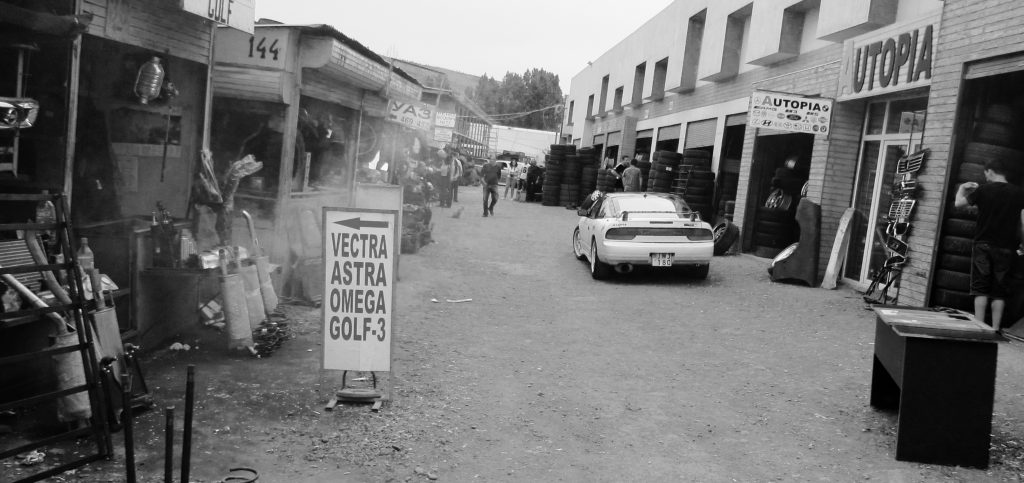
“(T)oday more than ever, there is no theory without utopia. Otherwise, a person is content to record what he sees before his eyes.”
Henri Lefebvre, Reflections on the Politics of Space, 2009 [1970]:178
Work-in-Progress
For Educational Purposes
Manouchehr Shiva
Producing Space:
Having Wine,
Playing backgammon with Friends, and
Taking Care of Customers
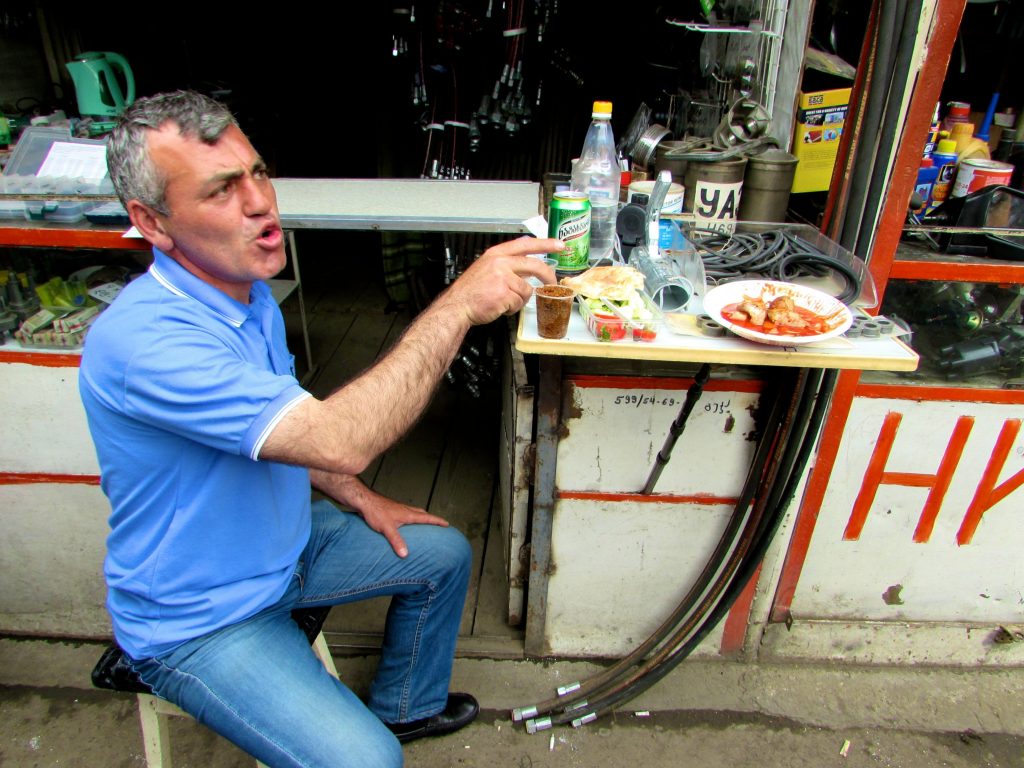
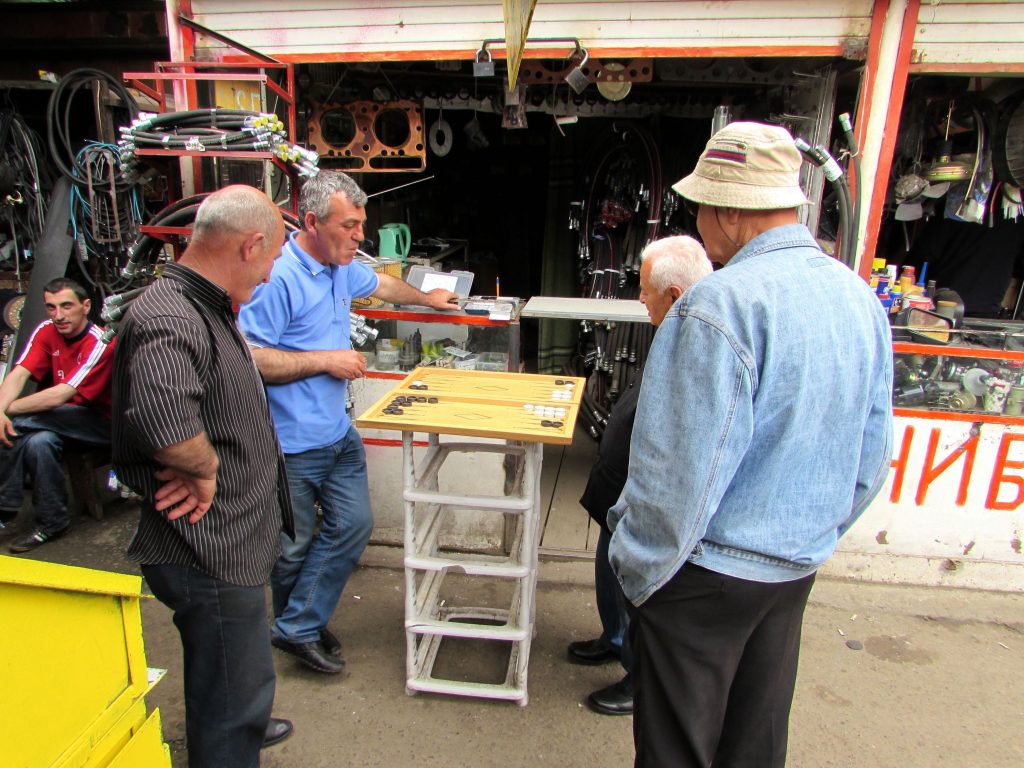
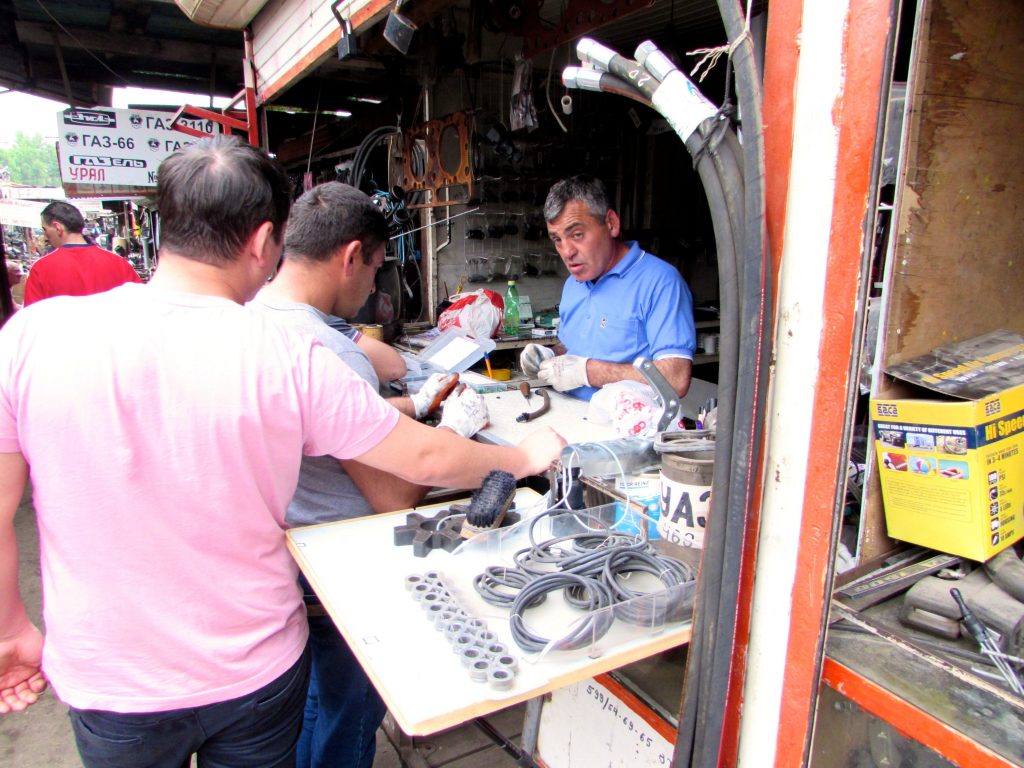
Contents
Acknowledgments
Eliava, GeoAir, and the Images
Goals
Limitations of this Study and Ideas for Future Studies
CONCEPTUAL PERSPECTIVES
*Critical Urban Studies and Planetary Urbanization
*Challenges of Ethnographic Studies of/at Local-Level Sites of Planetary Urbanization
*Conceptual Frameworks of Production of Space and Im/Mobilities
*The Larger Context of Capital’s (Im/)Mobility
*David Harvey on Marx and Capital
*Debt/Credit
*Lefebvre and Production of Space
*David Harvey on Space
*Schmid on Lefebvre’s Dialectic and Production of Space and Its Significance for Ethnographic Fieldwork
*Embodiment and Production of Space
*Gendered Space
*Space and Place
*Heterotopia
ELIAVA VISUAL DATA
*Post-Soviet In/Formal Markets
*Stalls and Shops
*Labor
*Mobile Sellers
*Mobile Gatherers of Metal
*Play, Heterotopia, Precarity, and Production of Space
APPENDIX
*Examples of Research Methods and Techniques for Future Eliava Studies
*Art and the Right to the City
*****
Acknowledgments
I would like to thank the resident artists and GeoAir who let me join them as an observer.
My special thanks go to those who work at the market and gave me the opportunity of recording their work, interactions, and friendships in pictures. I observed how they perpetuated their bonds and produced their spaces on a daily basis in the market in (for the majority) precarious conditions. They were doing this in a particular urban public space, in a market site, in Tbilisi, in the Republic of Georgia, with a post-soviet past, and imbedded, in multiple ways, in the present complex and dynamic global (neoliberal) capitalist economy.
*****
Eliava Autopian Dialectics
A Preliminary Visual Ethnographic Study and a Framework for Future Studies
“The invisible is defined by the visible as its invisible, its forbidden vision: the invisible is not therefore simply what is outside the visible …, the outer darkness of exclusion – but the inner darkness of exclusion, inside the visible itself because defined by its structure. … In other words, all its limits are internal, it carrie[s] its outside inside it.” (Lois Althusser, Reading Capital, 1970:27-28)
My interest in the social in relation to the spatial and the mobile started in the early 1970s when I was working among the pastoral nomadic communities in the Fars region of southern Iran as a research assistant. They taught me how the social, the temporal, the spatial, and the mobile are intertwined, or are part of the same processes.
Below, I have used the “production of space” and the “mobilities” framework to organize and discuss the visual data.
Eliava, GeoAir, and the Images
I took these images in the car-parts section of the Eliava market, a site for offering second-hand car parts, as well as some new parts. Second-hand tires that are brought from Europe, parts of Soviet-era cars, and parts of non-Soviet cars that are damaged in car accidents, predominate the commodities exchanged in this section of Eliava. There are also some new car parts for sale.
The pictures were taken during late spring and early summer of 2014. I also made a short visit to the market in 2017.
Here, for discussing the pictures, I use the term “Eliava” for the mainly car-parts section of the larger Eliava market (discussed below).
In 2014, I accompanied four GeoAir resident artists who were doing their art work under a project called Discover Eliava. There were two conceptual artists, who did most of their work on in one of the market stalls on the ground level, and two sculptors, who did their work on the second floor of a structure under construction. I stayed at both places in order to observe, interact with people, and take pictures. I also moved around the market and took photos.
This was not the first time this part of the market was a site for artistic encounters and exhibitions. Back in 2012, a project represented as “a grassroots, multi‐disciplinary, cross-cultural and site-specific public art laboratory. It consisted of an open-ended exchange between Georgian and North American artists and curators as well as Eliava’s community members, and took the form of an evolving contemporary art exhibition, a series of art/design workshops in various cultural and educational venues, and a day-long open house Streetwise: Discover Eliava Festival at the marketplace” was put into motion.
In 2014, one could still observe what is left from the 2012 artistic intervention in the market.
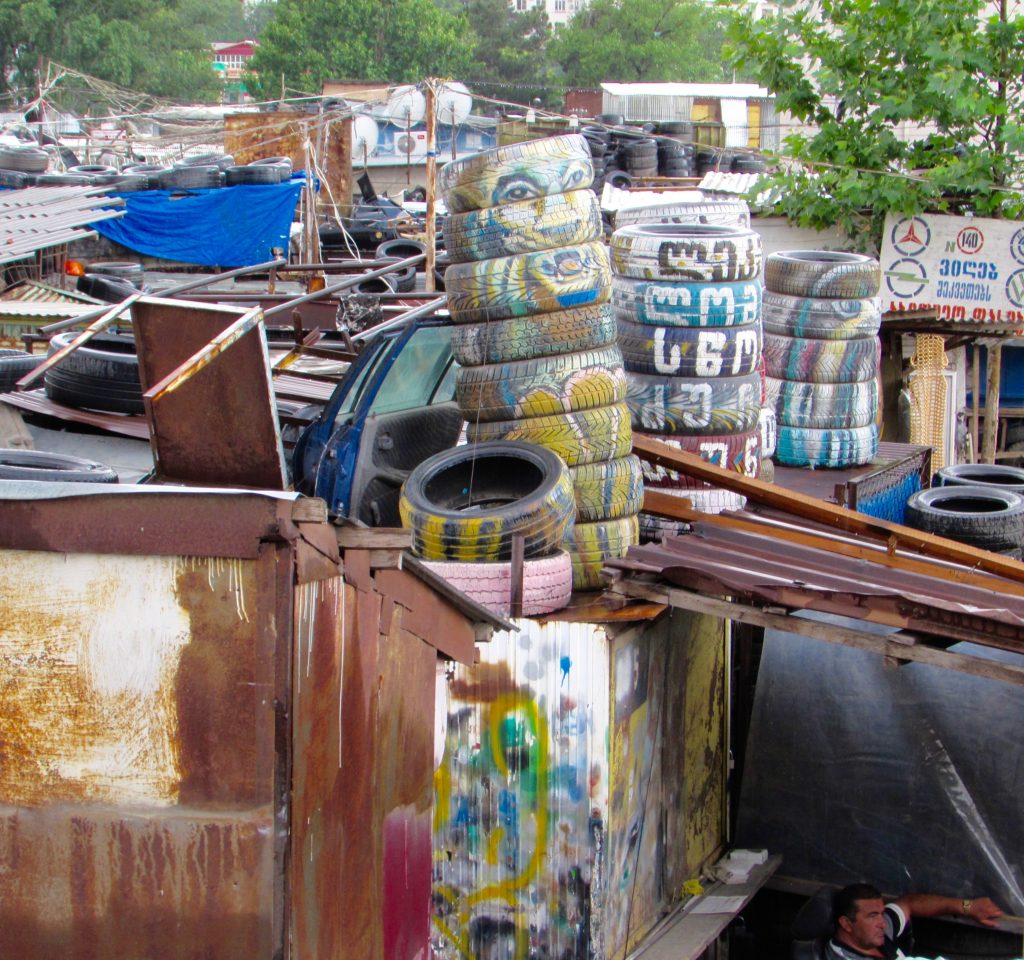
The Spatial/Temporal/Mobile
Goals
My aims here are threefold:
1) Share many of the pictures I took.
2) Discuss a framework for studying the processes of production of space, interlinked with its temporalities and im/mobilities, in the Eliava second-hand car parts market and similar sites.
3) Share discussion of the research framework, and related quotes, links, texts, and videos online for educational purposes.
I have taught qualitative research methods in different universities in Tbilisi before. My courses had an online presence, and this is somewhat in the same vein, though more theoretically oriented. In this regard, I have used bold fonts for emphasis. Theory and method are intertwined in diverse ways, and here I am trying to look at challenges of relying on pictorial data to examine theoretical frameworks of the “production of space” and “mobilities” and their relations imbued with temporality.
Limitations of this Study and Ideas for Future Studies
This was a preliminary visual study. As a visual study, it needs to also include film/video in the future.
The pictures were taken in a specific period of the year. Visual data from different seasons of the year should also be incorporated.
Visual forms of data gathering in the field should be combined with other forms of data gathering, like listening/observation, and individual and group interviews. Other sensory data, like noise, and temperature, are also important.
I carried out a solo ethnographic image gathering. In the future, teamwork, particularly as participatory research, should also be relied upon.
Use of archival sources is also important.
In addition to seasonal changes, the inquiry should also investigate transformations over years.
The study was carried out, mainly, in a specific corner of the market. In the future, one could also cover other parts of the Eliava market.
The focus of the study was on the sellers of merchandize and labor, not the customers that come to the market to purchase parts. In the future, customers should also be included.
In addition to mobilities/immobilities related finance capital, commodities, and bodies, other forms of mobilities, such as those related to infrastructure, information, communicated face-t0-face and digitally, and their interrelations should also be studied.
Multi-sited research and art-based research are other important angles to be included in the future.
Image and Color
I have posted both B/W and color pictures. Color pictures may provide more “ethnographic” information.
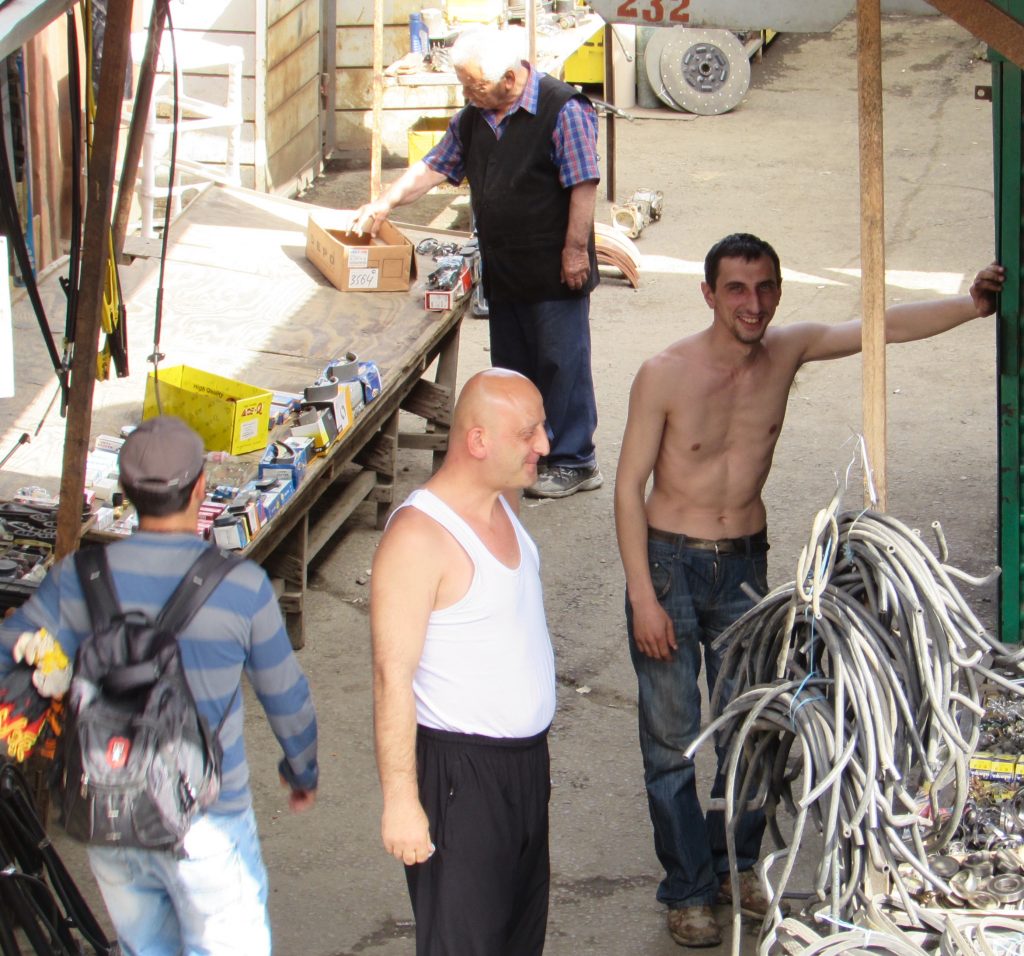
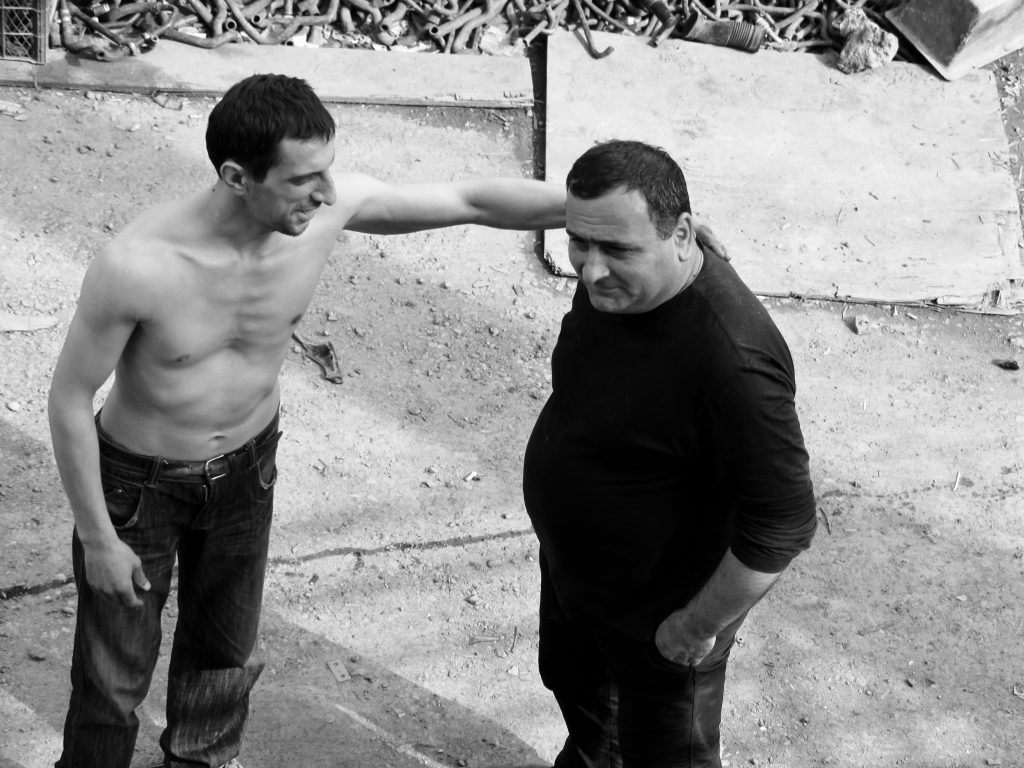
*****
Conceptual Perspectives to Contextualize the Eliava Pictures
Meaning is context-bound, but context is boundless.
Jonathan Culler, Literary Theory, 1997: 91
Critical Urban Studies
My aim is to carry out a theoretically-informed (here, mostly visual) ethnographic study. The idea is to look for pathways from ethnography of the market to world conditions and back again.
The larger general theoretical framework for this study is critical urban studies, but with a focus on the daily lives of people at the market.
City Lens(es) and Urban Ideologies
“(A) persistent ‘city lens’ … remains pervasive … This lens, ground in the context of the 19th-century metropolis, interprets the world through a series of binary associations hung on the basic assumption that the city can be defined against a nonurban outside. I develop John Berger’s (2008 [1972]) idea of ‘ways of seeing’ as a heuristic for understanding this situation and, using the case of nature, show how the city lens encourages practitioners and some scholars to romanticize, anachronize or generalize when confronting signs of the not-city in the urban. I conclude by evaluating the limitations of hybridity as a solution to the problems of the city lens, and by outlining an alternative approach. I advocate for turning this way of seeing into a research object, and argue for the importance of a historical and process-oriented examination of the ongoing use of these categories even as critical urban scholars attempt to move beyond them. I use the idea of ‘ways of seeing’ as a heuristic to explore this situation in the world, to evaluate responses in the discipline, and to elaborate (the) suggestion that a new way of seeing is necessary.” Hillary Angelo, 2016
The larger Eliava market is, mainly, a site for car-parts and house-parts commodities. These commodities have different networks of mobilities related to what is referred to as planetary urbanization. These commodities are produced in the context of different industries, forms of ownership, modes of production, and geographies. Labor, as a form of commodity, is aksi offered for exchange at the market.
*Critical Urban Studies and Planetary Urbanization
*Challenges of Ethnographic Studies of/at Local-Level Sites of Planetary Urbanization
*Conceptual Frameworks of Production of Space and Im/Mobilities
*The Larger Context of Capital’s (Im/)Mobility
*David Harvey on Marx and Capital
*Debt/Credit
*Lefebvre and Production of Space
*David Harvey on Space
*Schmid on Lefebvre’s Dialectic and Production of Space and Its Significance for Ethnographic Fieldwork
*Embodiment and Production of Space
*Gendered Space
*Space and Place
*Heterotopia
*****
Eliava as a Site for Visualizing Post-Socialist Precarity
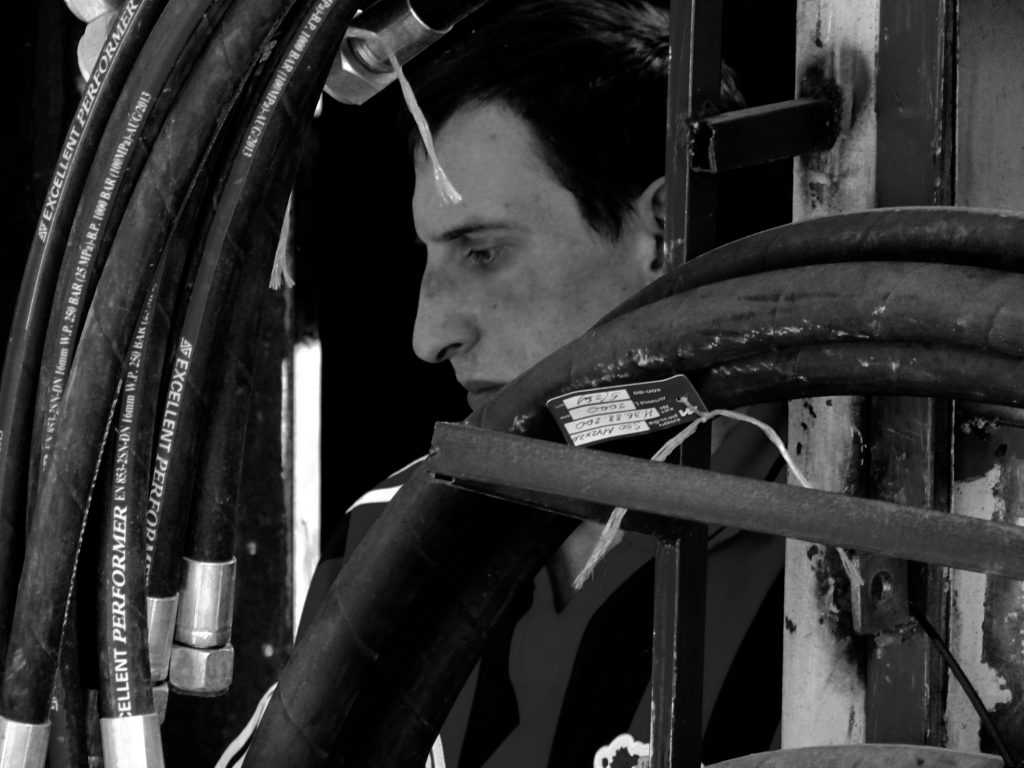
*****
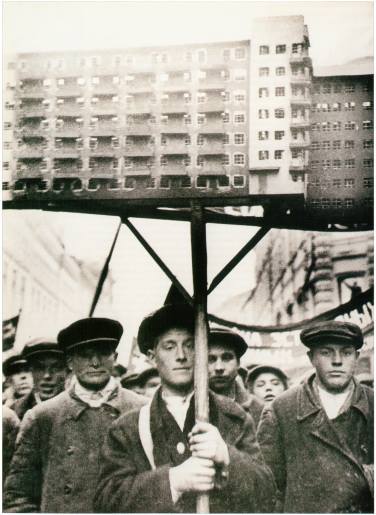
Soviet builders marching with models of avant-garde houses, USSR, 1931
“Piles of objects and products in the warehouses, mounds of fruit in the marketplace, crowds, pedestrians, goods of various kinds, juxtaposed, superimposed, accumulated – this is what makes the urban urban.”
Lefebvre, Urban Revolution, (1970) 2003: 116
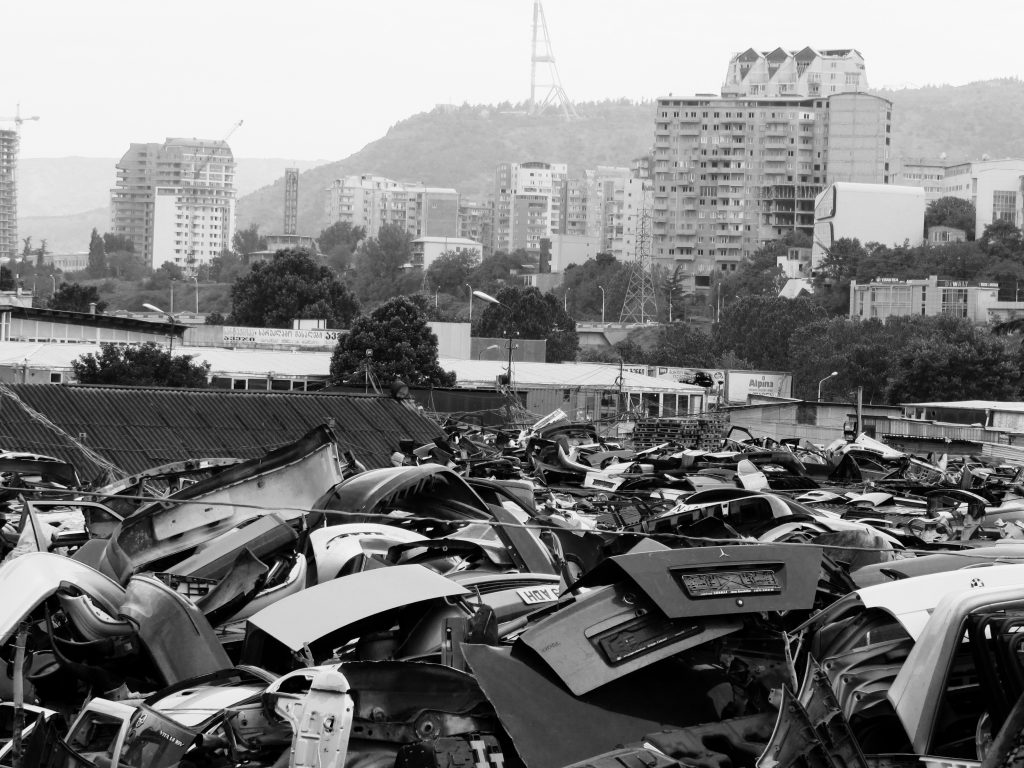
The Soviet mass apartment building project started in the late 1950s. This type of housing, called Khrushchyovka, can be seen on the other side of the street to the west of Eliava. The terrace additions are post-soviet creations.
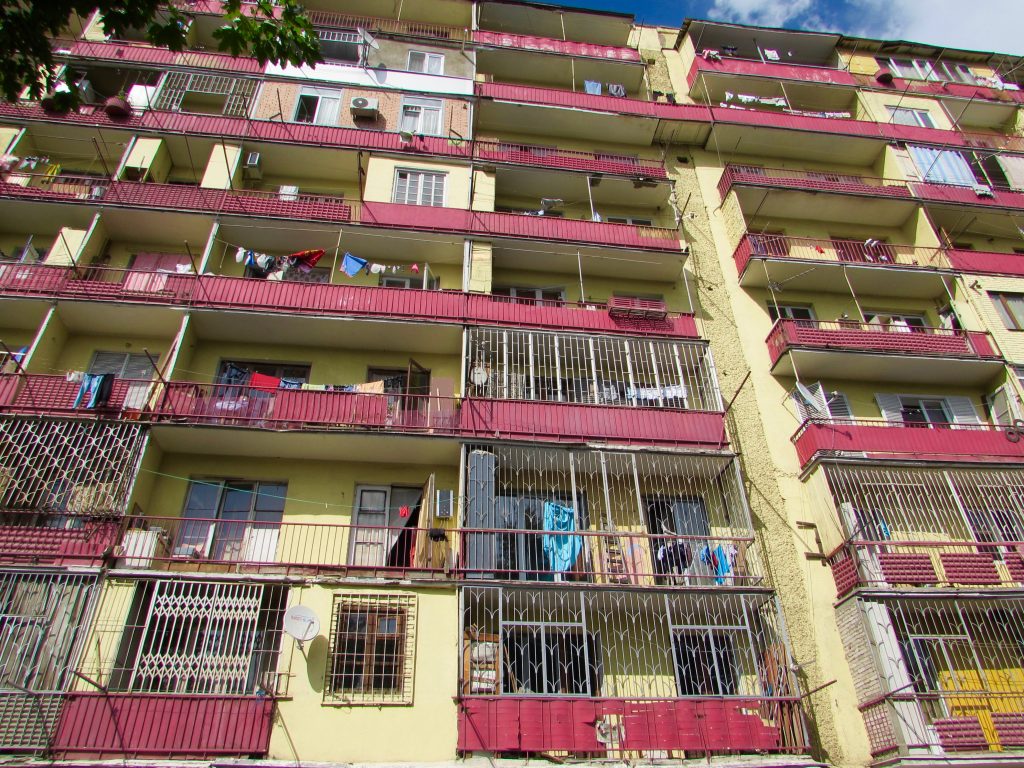
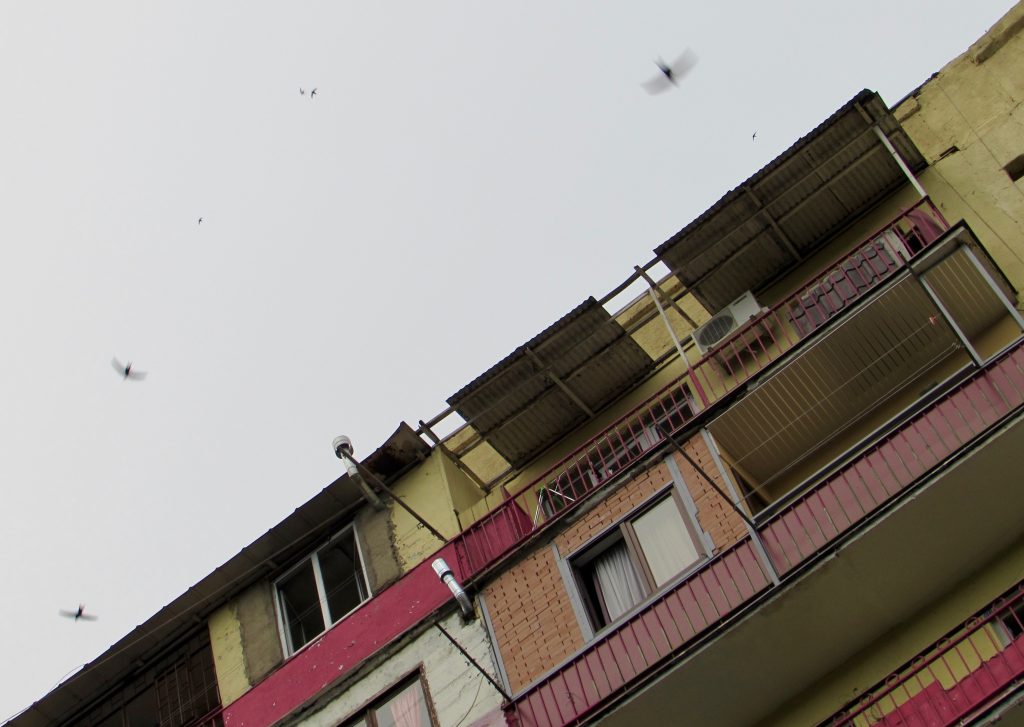
Some images of Soviet Khrushchyovka Apartments
The Beauty of Soviet Architecture (in Tbilisi) – Images by George Gogua
Eliava as a Site to Sell/Purchase Parts for Quintessential Assemblages of Individual Im/Mobility
It is often said that by the 1980s having an apartment and a car became highly dominant desires in the Soviet Union.
It could be said that the larger Eliava market is a site for offering and purchasing material “parts” needed to maintain such a desire for the quintessential coupled assemblages of mobility and immobility in a post-Soviet context.
But, as a critique of photography Lefebvre notes that:
“the house has six storeys and an air of stability about it. One might almost see it as the epitome of immovability, with its concrete and its stark, cold and rigid outlines. (Built around 1950: no metal or plate glass yet.) Now, a critical analysis would doubtless destroy the appearance of solidity of this house, stripping it, as it were, of its concrete slabs and its thin non-load-bearing walls, which are really glorified screens, and uncovering a very different picture. In the light of this imaginary analysis, our house would emerge as permeated from every direction by streams of energy which run in and out of it by every imaginable route: water, gas, electricity, telephone lines, radio and television signals, and so on. Its image of immobility would then be replaced by an image of a complex of mobilities, a nexus of in and out conduits. By depicting this convergence of waves and currents, this new image, much more accurately than any drawing or photograph, would at the same time disclose the fact that this piece of ‘immovable property’ is actually a two-faceted machine analogous to an active body: at once a machine calling for massive energy supplies, and an information-based machine with low energy requirements.”
Lefebvre, The Production of Space, 1991: 92-93
Post-Soviet Urban Markets
Eliava is one of those markets that emerged suddenly after the collapse of the Soviet Union. Some of these markets, like those in Bazorba, around the central train and metro station, emerged as extensions of a previous formal or state-sponsored market. But, in those years, Eliava emerged in an “empty” (socialist state) space in a central part of Tbilisi as an “informal” market. Now, it is a space for intermingling of “formal” and “informal” market practices. Because of its location in a central location, its use for mainly car-parts (and house-parts), its appropriation is more contested and controversial than other such spaces.
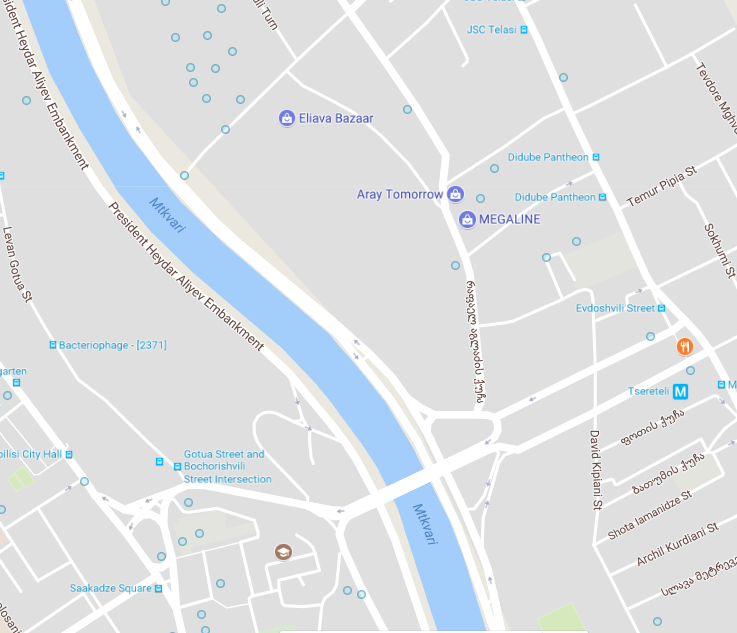
Creation of such markets were “urban movements” in spatial, economic, and social terms.
These were revolutionary movements, in the sense of their sudden emergence. They continue to be a site for urban daily resistance movements, in the sense of their negotiated continuation after the liminal years of transformation to a capitalistic era.
Spatially, they are about taking over of soviet state/public space and its contestation in the post-soviet era by people who became full-time or part-time members of a growing population who took over public/state space for their economic activities —such as sidewalks, areas around metro or bus stops, or areas either in the cities or their peripheries that were not under usage, like the Eliava market.
Economically, they represent an informal, or from below, movement away from the formal soviet economy, towards a neoliberal economy, practiced both informally and formally by petty commodity owners.
Socially, they have become a new urban site for places of both work and sociability, that is production of “second and third places” in dynamic and precarious post-soviet integration into global capitalist economy.
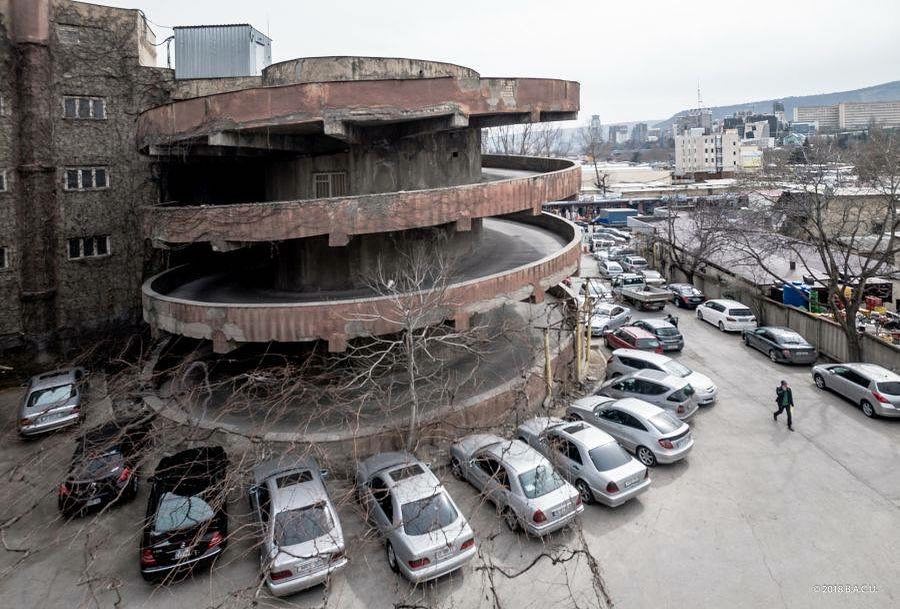
Garage & Car Repairs Building – close to the Eliava market
Tbilisi, Georgia,
Built in 1970,
Architect: G. Kurdiani, V. Aleksi-Meskhishvili, G. Mebuke
Categorized as Socialist Modernism
Google Pictures:
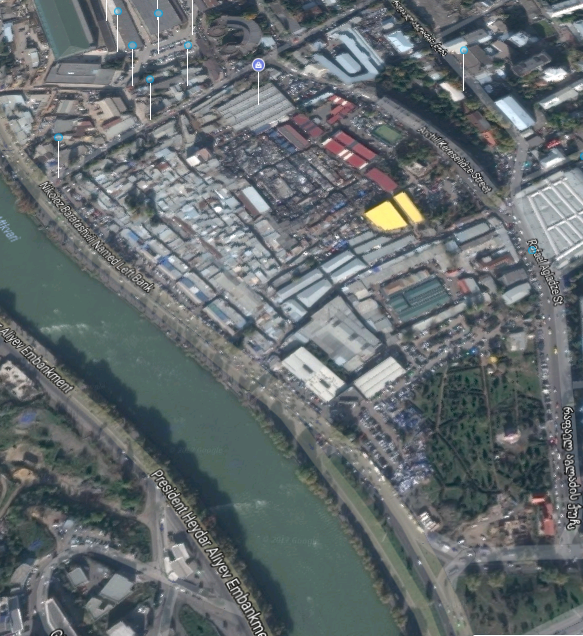
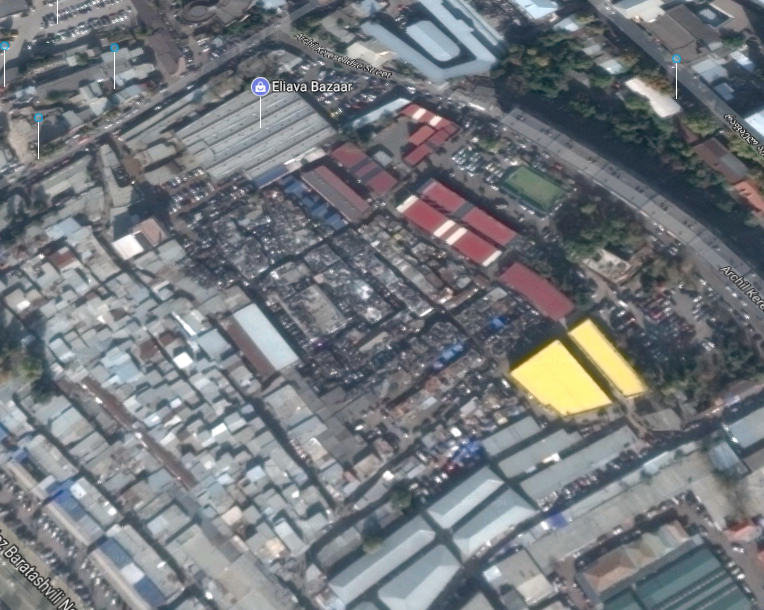
Most of the pictures were taken in the area below where the shops with red roofs are around the stalls with small gray and brownish roofs.
Many use the roofs of their stalls for storage, thus the brownish hue in the picture above over the stall.
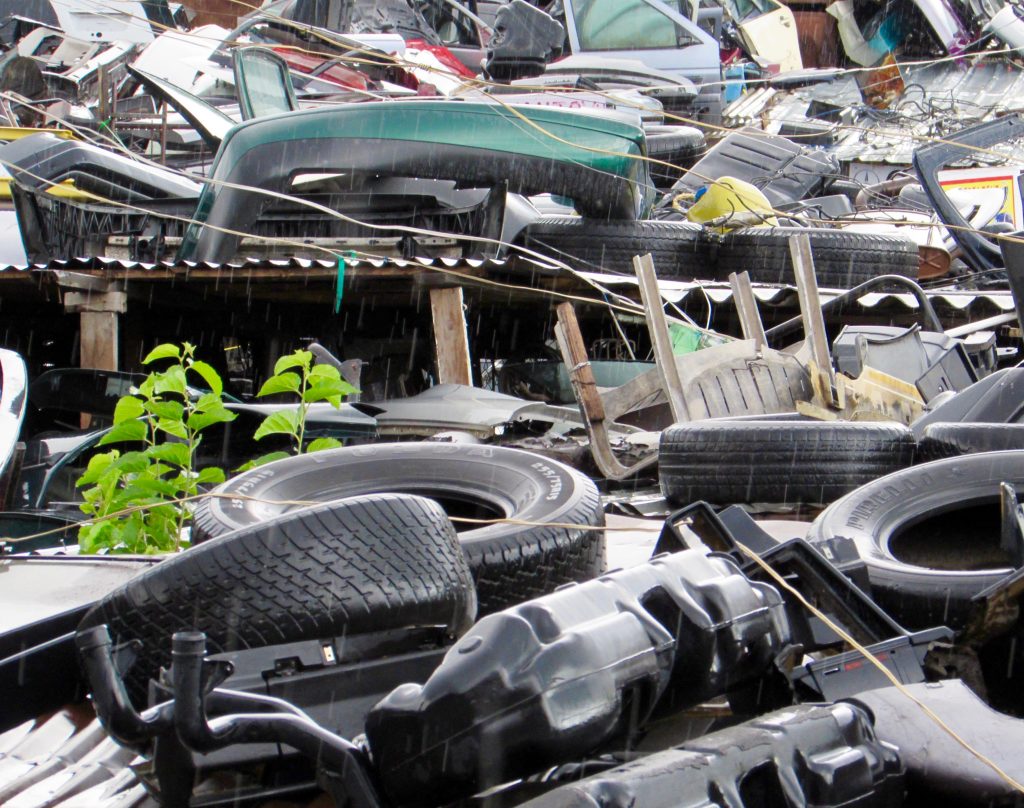
The Stalls
The stalls are spaces the emerged by (informal) practices of citizens in the immediate post-soviet years.
Some of the people who operate at the stalls sell second-hand items made during the soviet times, they sell the soviet past.
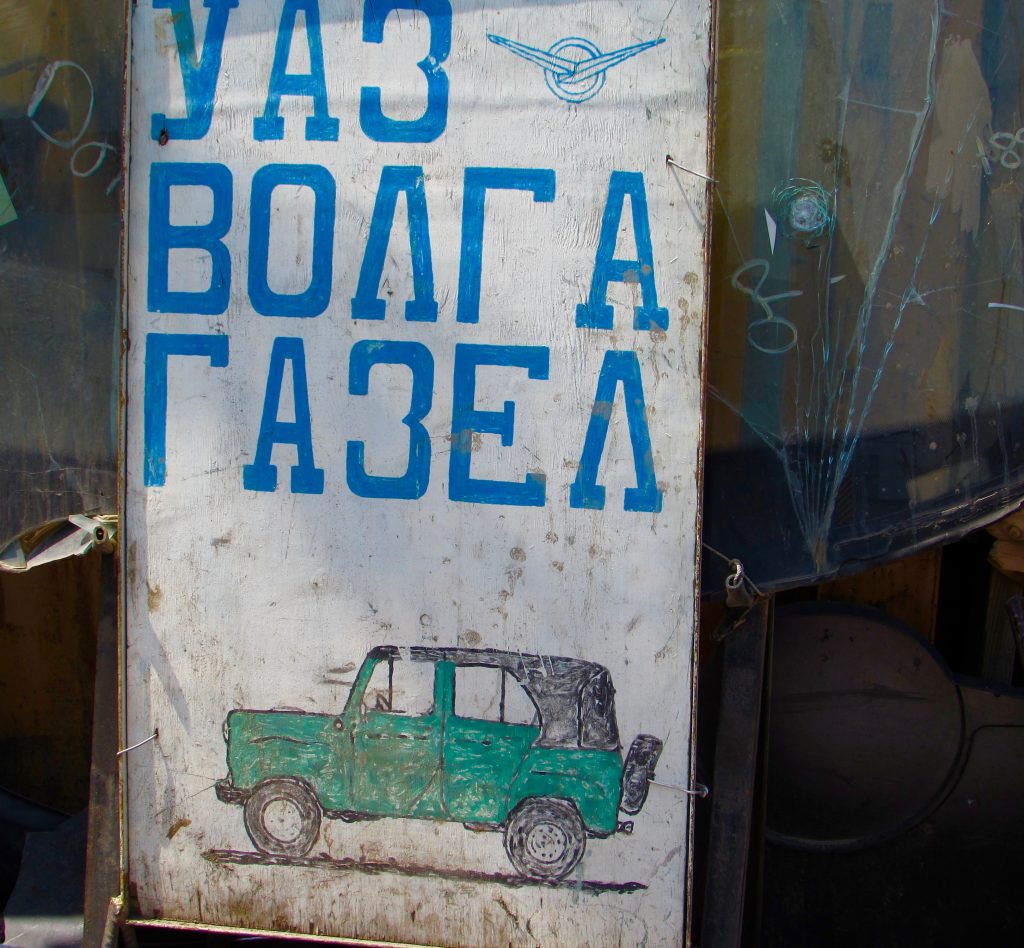
But, there are also those who sell new car parts (but mostly of soviet-era cars), or a mixture of new and second-hand parts.
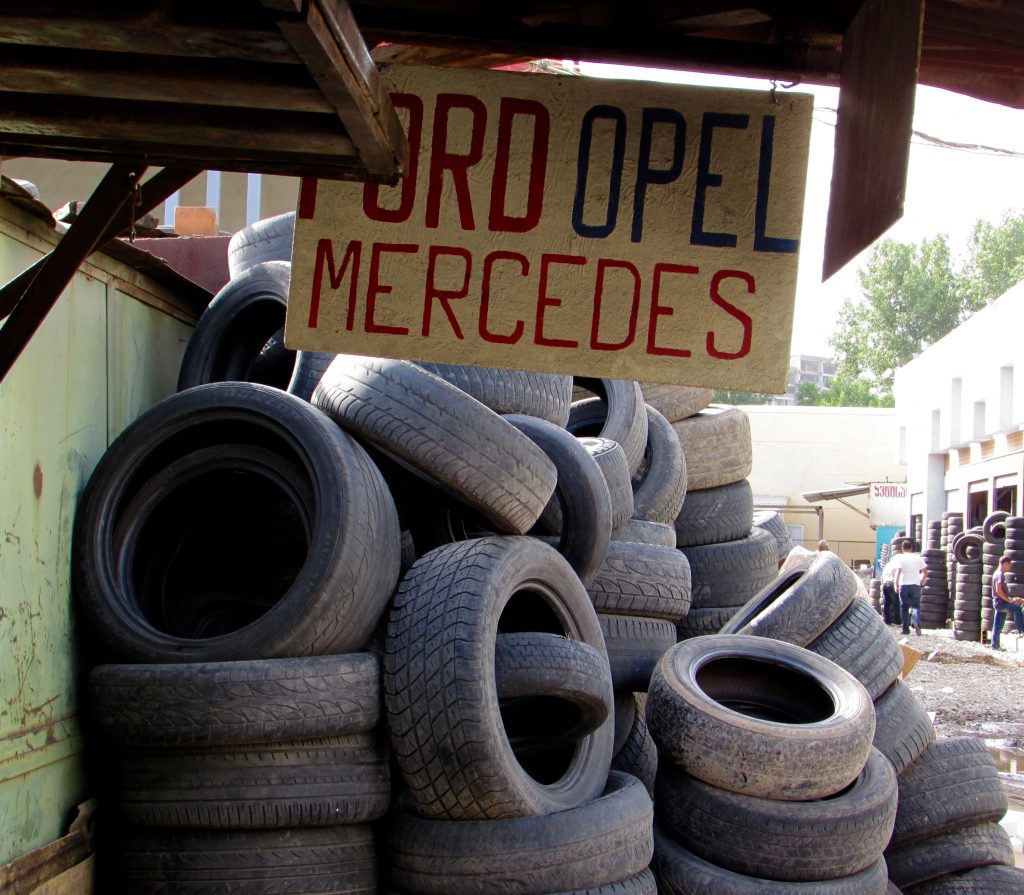
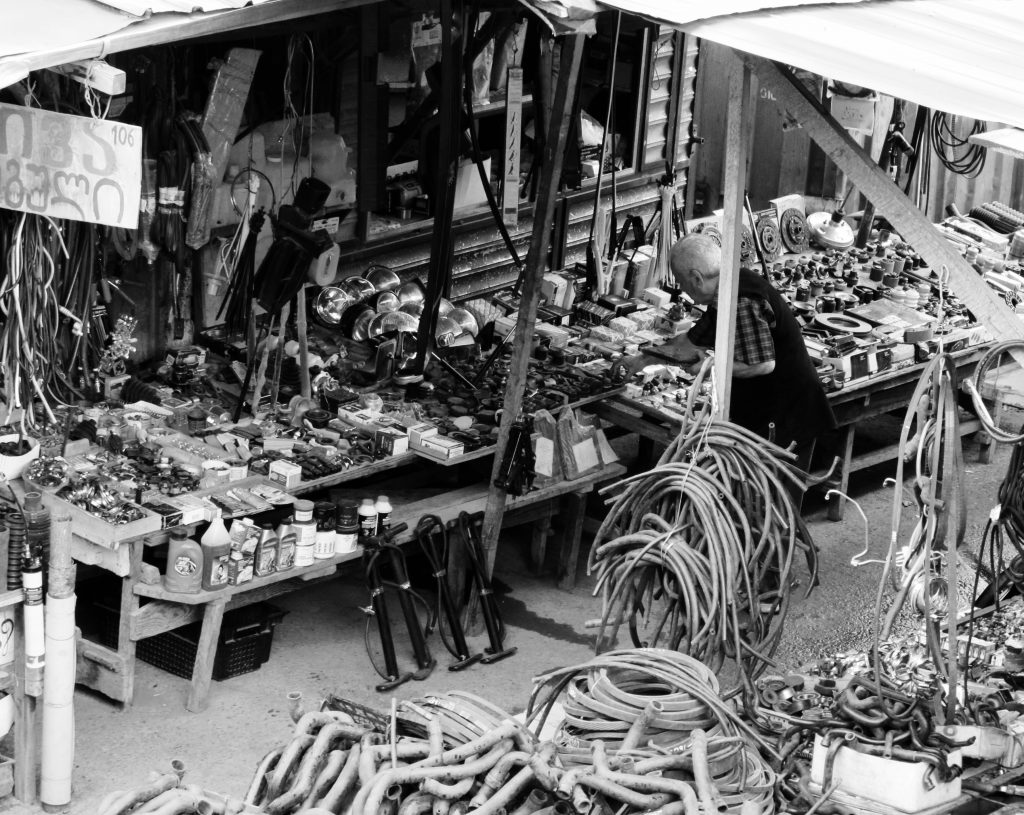
The stall and shop owners come from different educational backgrounds. Many stall-operators have university degrees, mostly acquired during the soviet period, but, for some, during the post-soviet years.
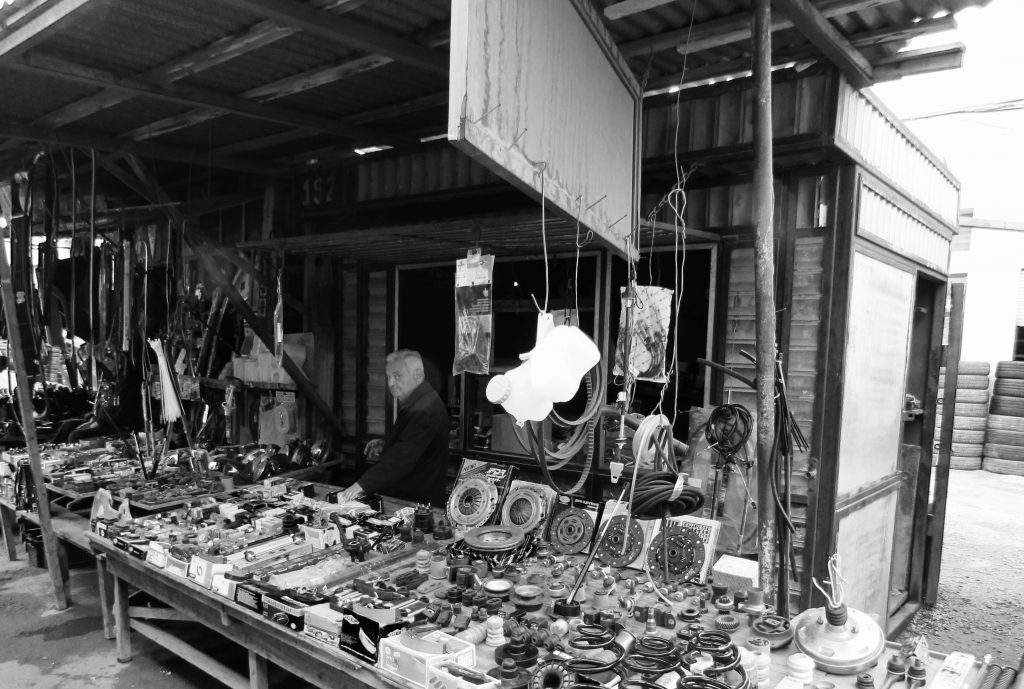
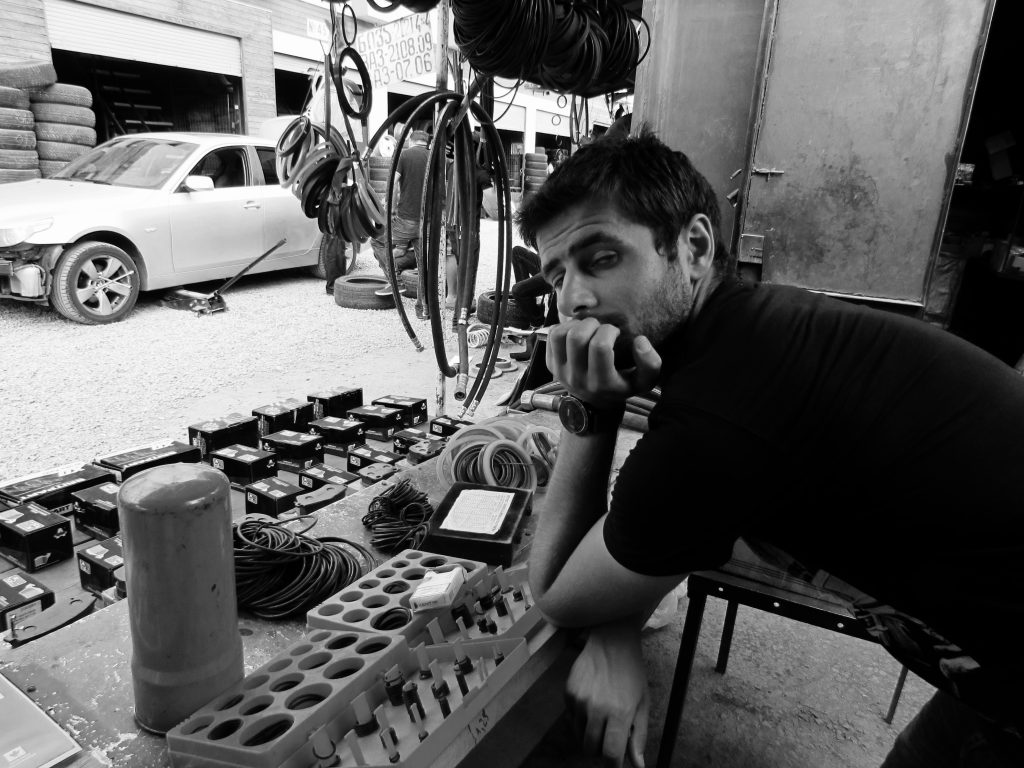
Some don’t even have a whole stall for themselves, and use tables between stalls, or the side of stalls to sell their commodities. They could have a storage space in the back of somebody else’s stall for themselves.
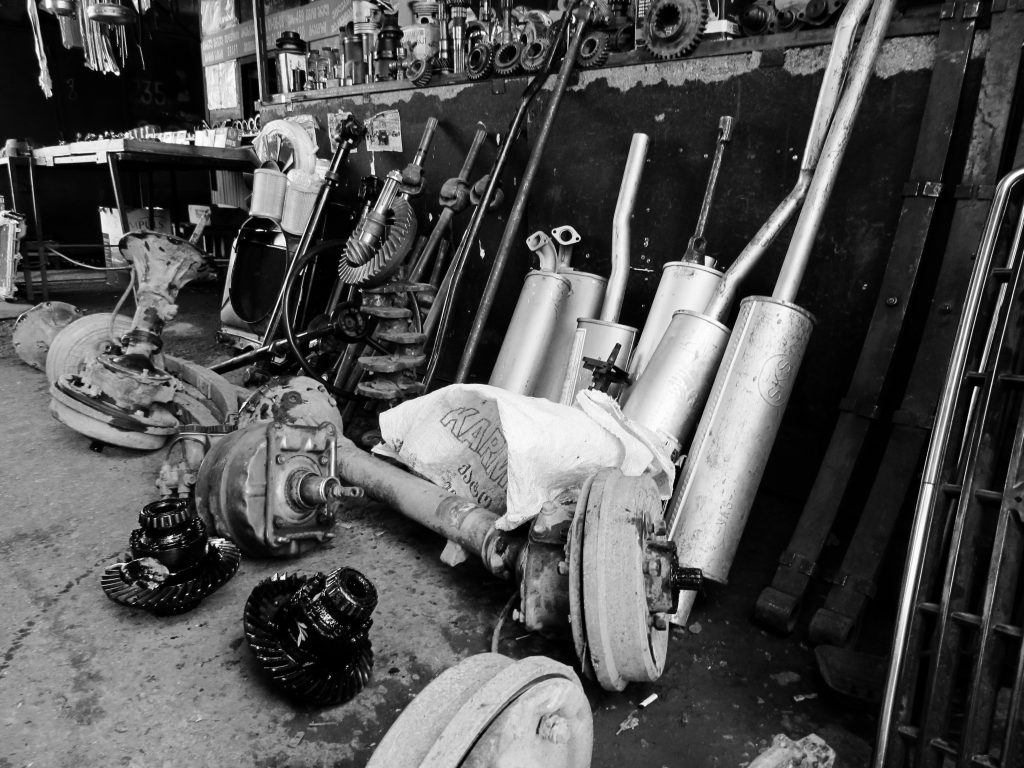
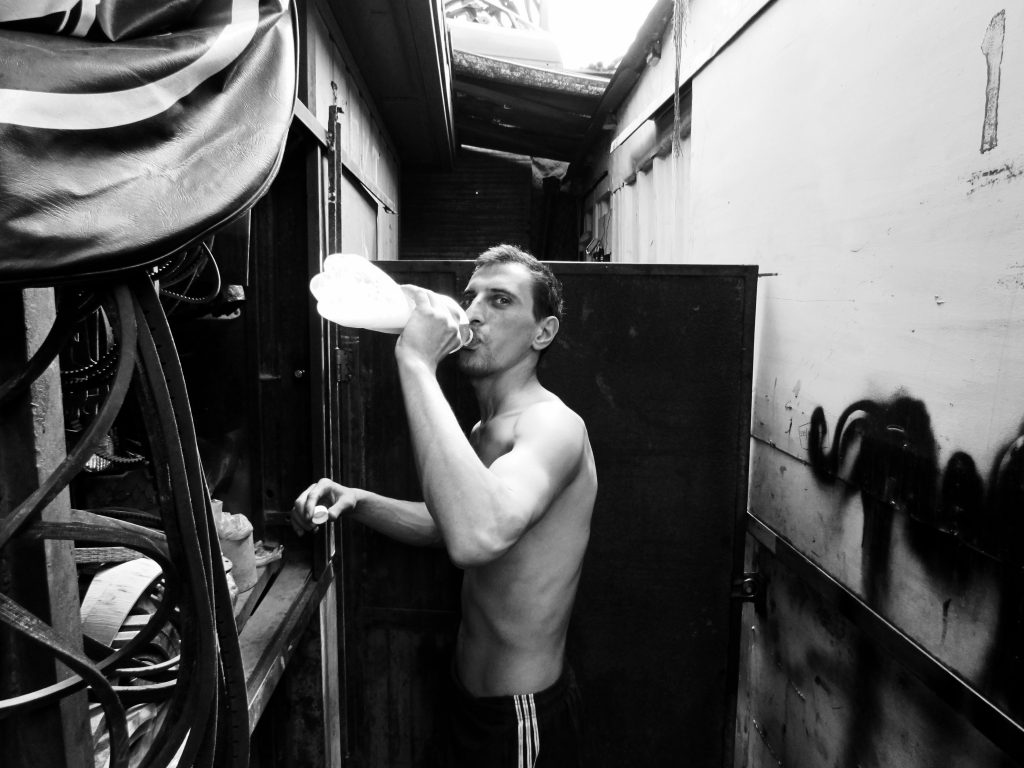
The Shops/Buildings
In addition to the stalls, there are newly constructed shops that sell second-hand tires, or new parts.
Construction of new buildings and infrastructure was going on during the time I took photos.
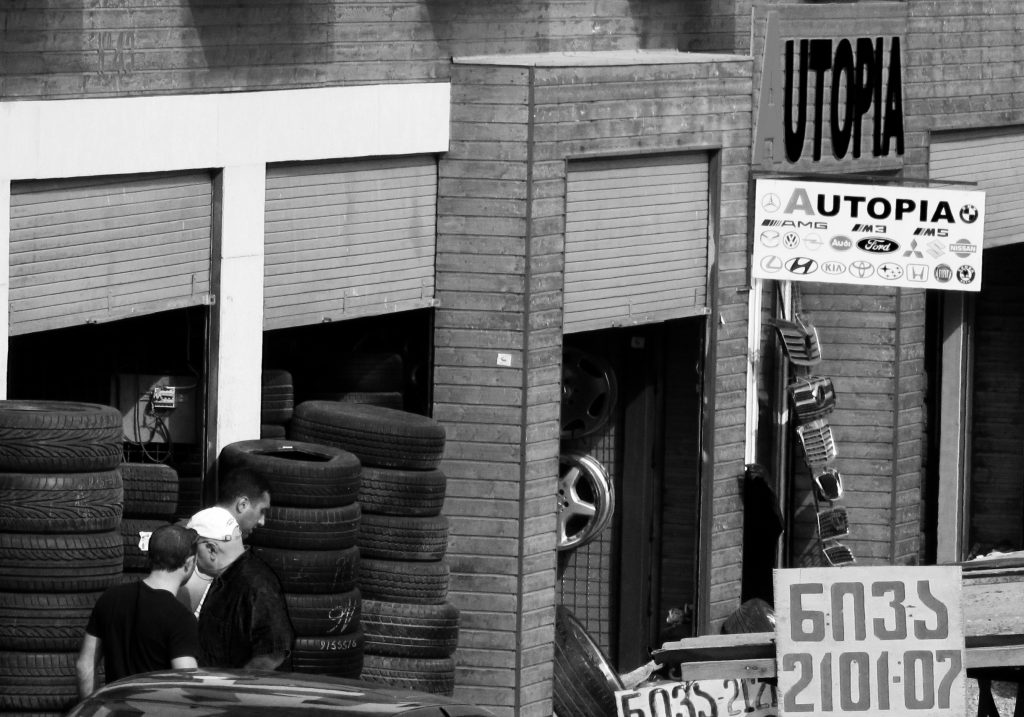
Materiality of Historical Changes in Cars and Shops/Stalls
Two set of connected material assemblages and their associated transformations are noticeable at the market :
1) Transformation Related to Cars (mobile assemblages and their parts) – A transformation from a soviet-cars to a post-soviet cars, run by petty merchants that are connected to the capitalist global economy.
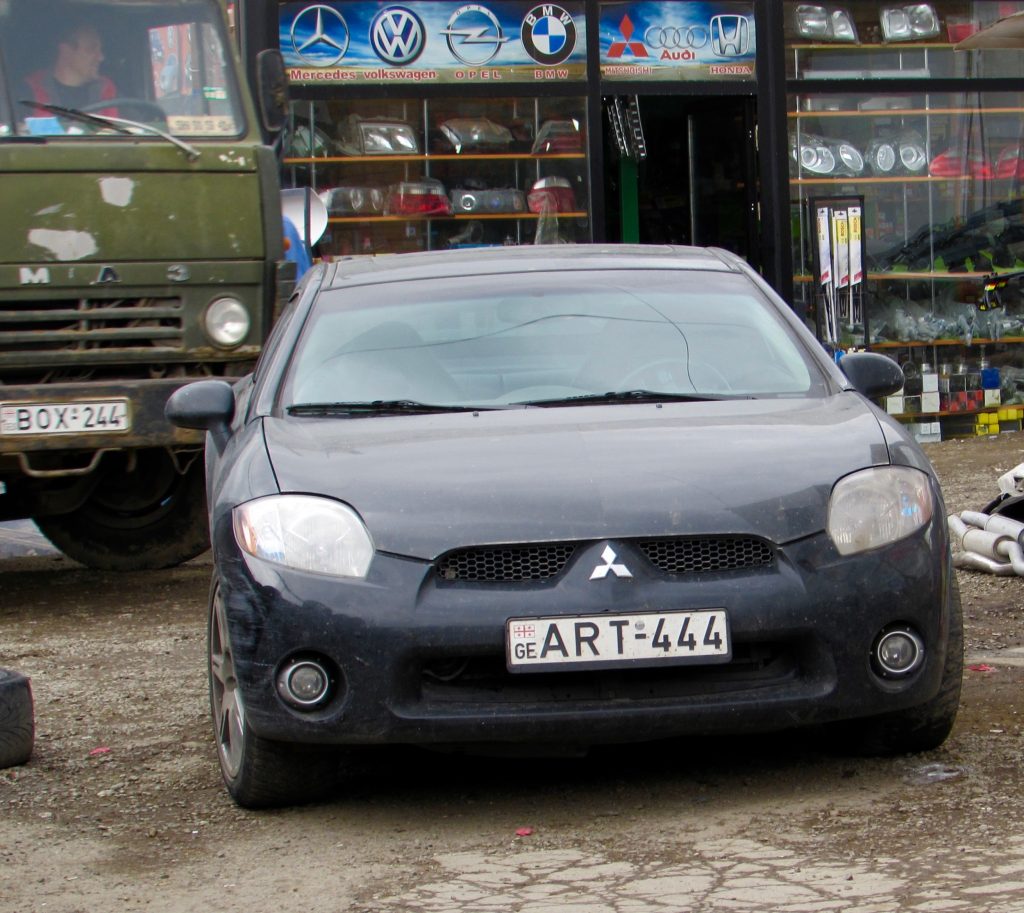
For different reasons car accidents are frequent in Georgia.
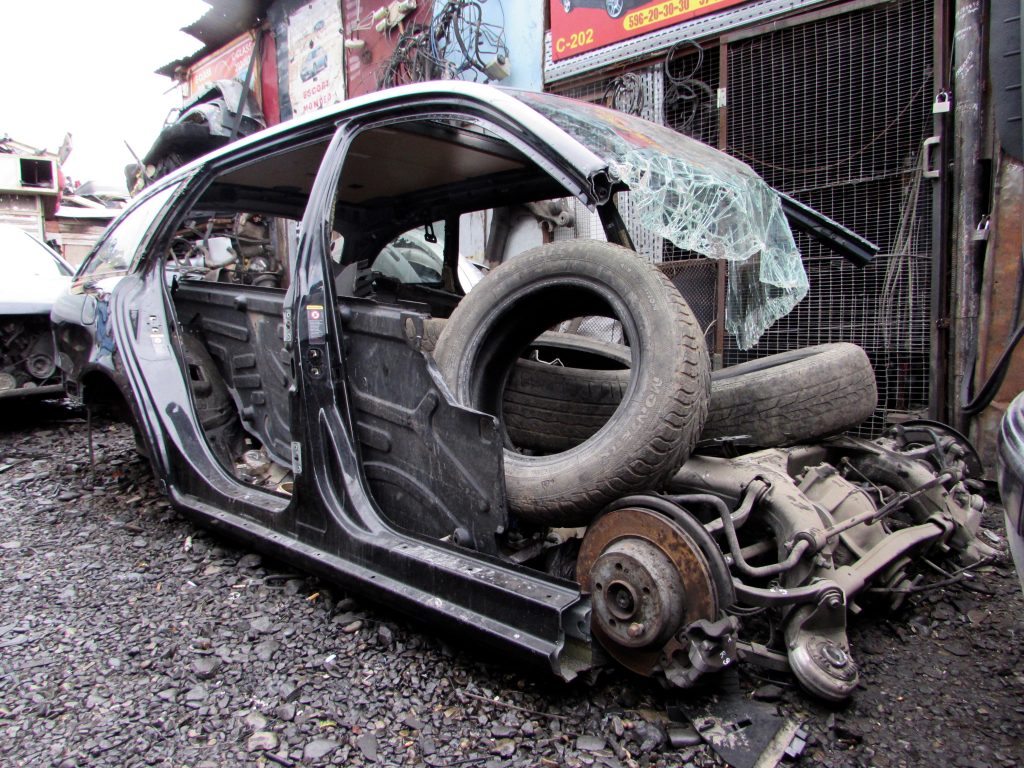
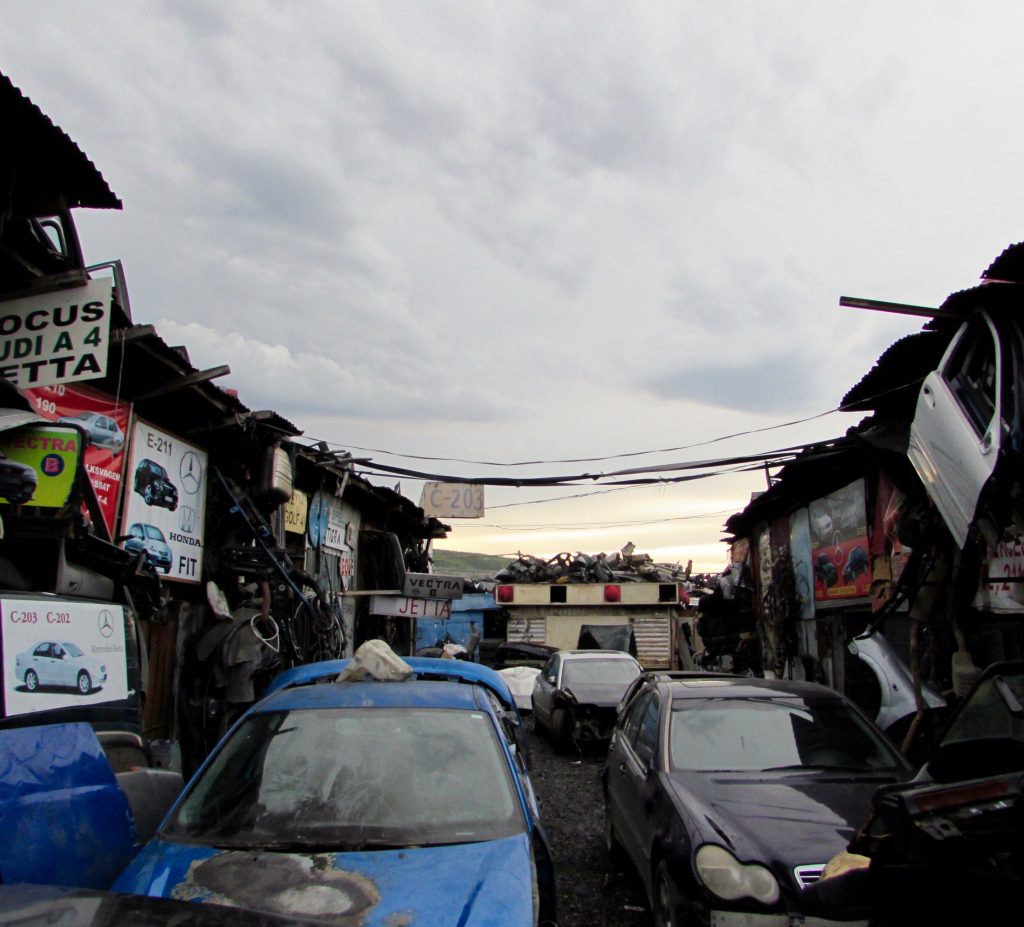
2) Transformation Related to (Immobile) Stalls/Shops – a transformation from stalls created after the collapse of the soviet union (by independent individuals), to newly constructed buildings (started in the twentieth century), rented as shops.
One could, perhaps, talk about the market as a site for multiple ambiguous temporalities.
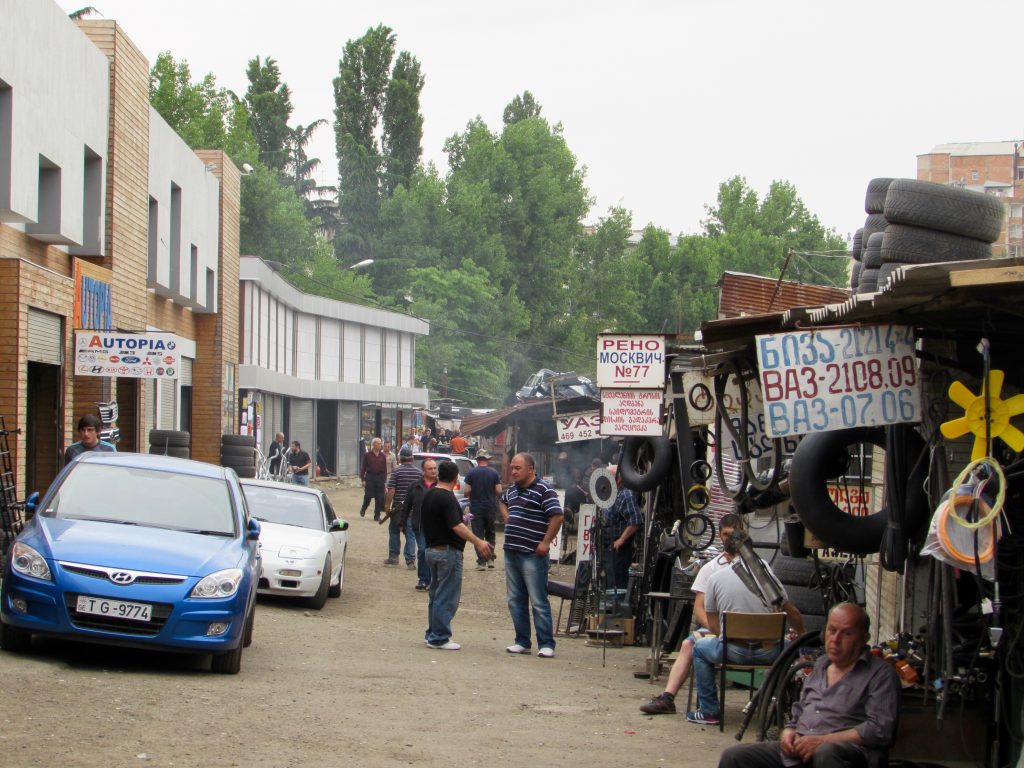
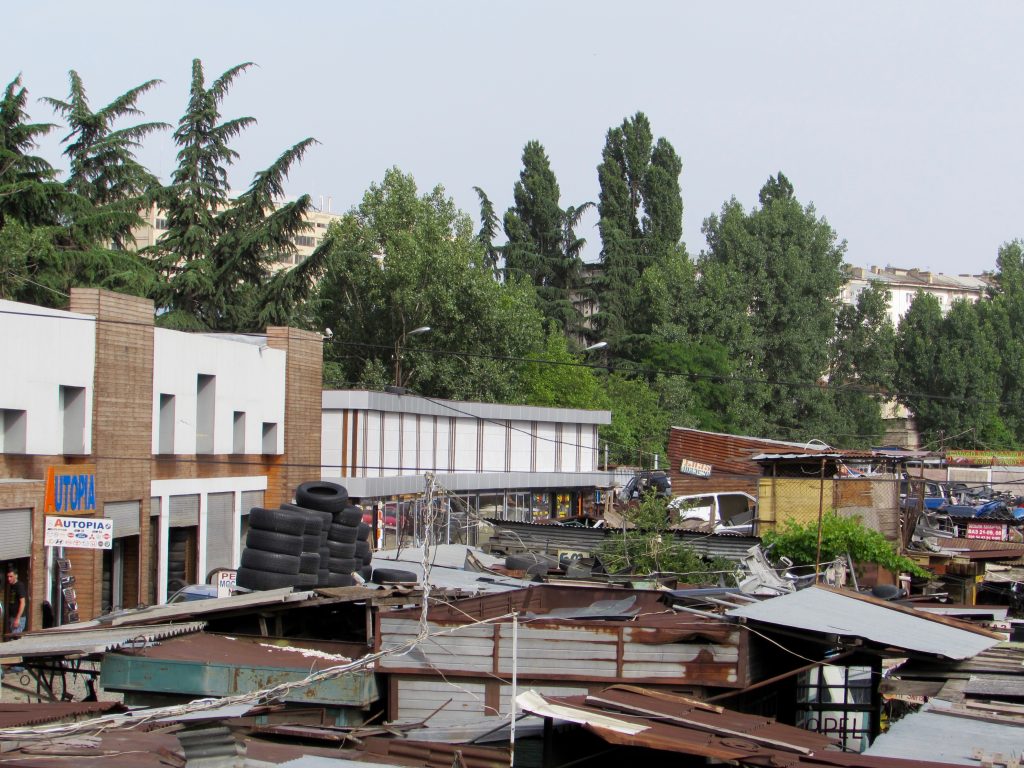
Gendered Eliava: Mobile/Immobile Economic Actors and Gender
Im/Mobile Bodies – Embodiment
Those who make a living in the market could also be categorized into two groups:
1) Those who operate via (Immobile) stalls/shops.
These are mostly males, except females who have their stalls cooking or making coffee/tea and could also deliver – their stalls are around the edges of the market.

2) Those who sell their commodities or labor by being mobile at the market on foot (carrying their products or pushing modified baby carts, mostly sell their commodities to the first group above).
Most of mobile sellers are female. The push-cart operators that carry loads are males.
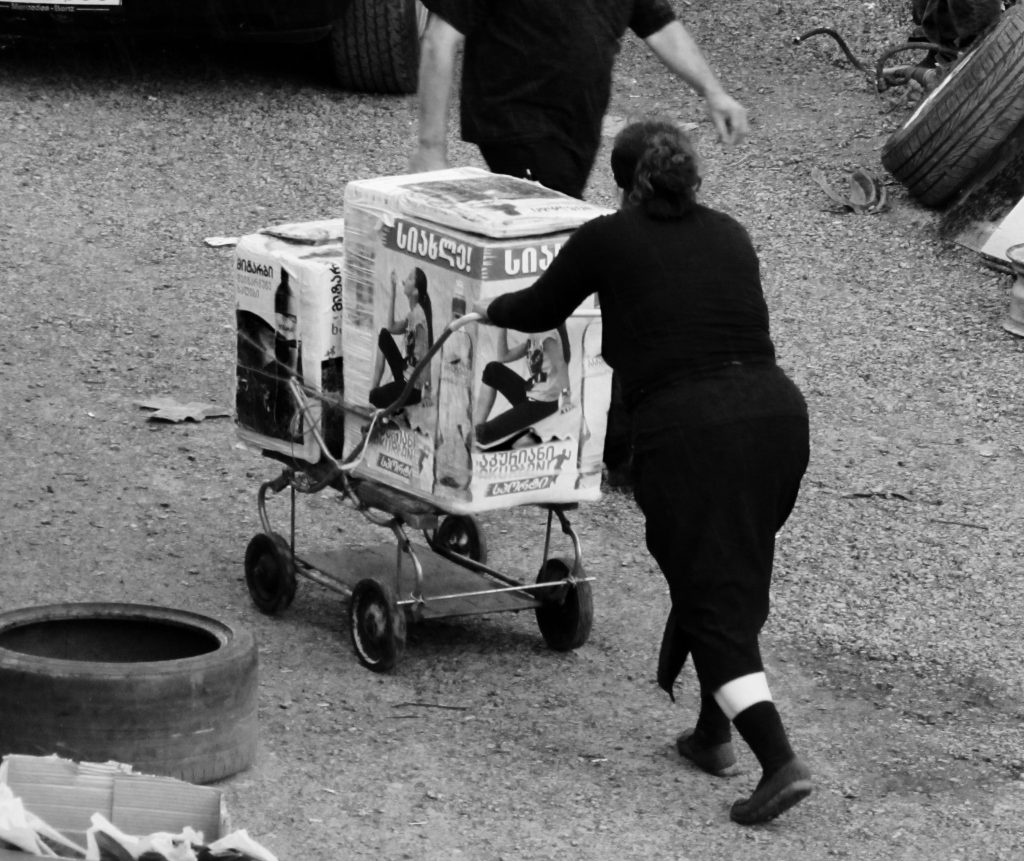
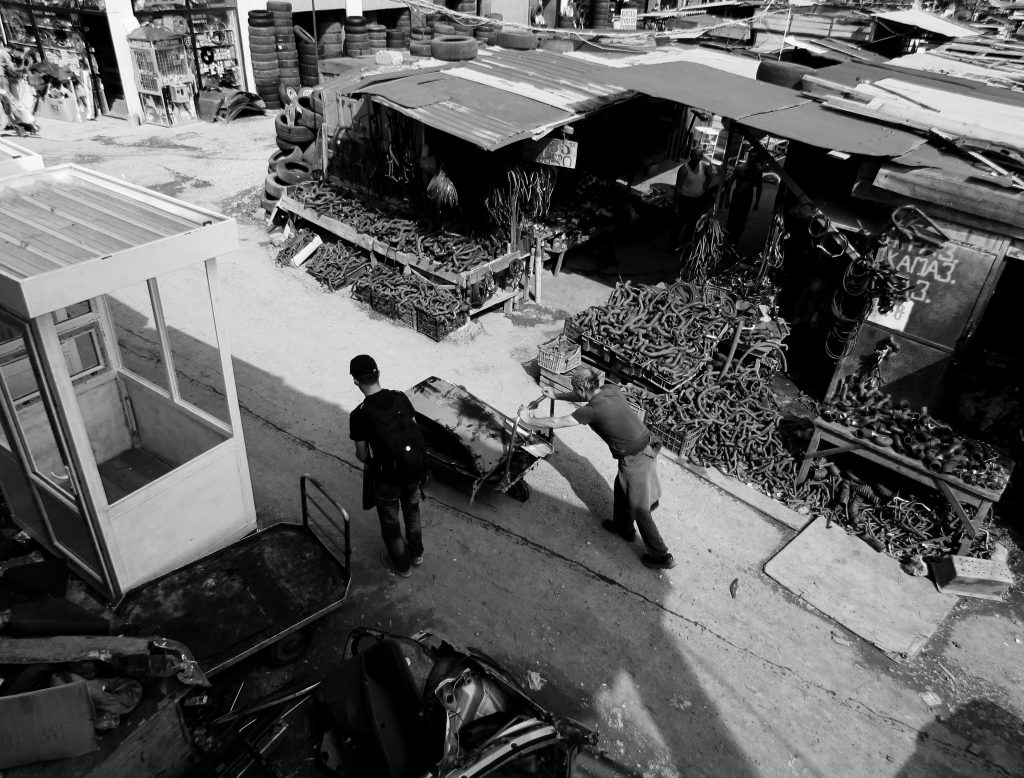
Labor as a Commodity at Eliava
Hired Labor
Work – Changing Tires Im/Mobilities
The shops and stalls are operated by small mercantile owners.
The shop-owners could employ wage labor to complete their transactions with their customers.
This is a kind of labor that is employed not in production, but in realization and distribution processes.
Changing the tires is a labour intensive activity with its own forms of knowledge/skill, materiality, embodiment, and masculinity.
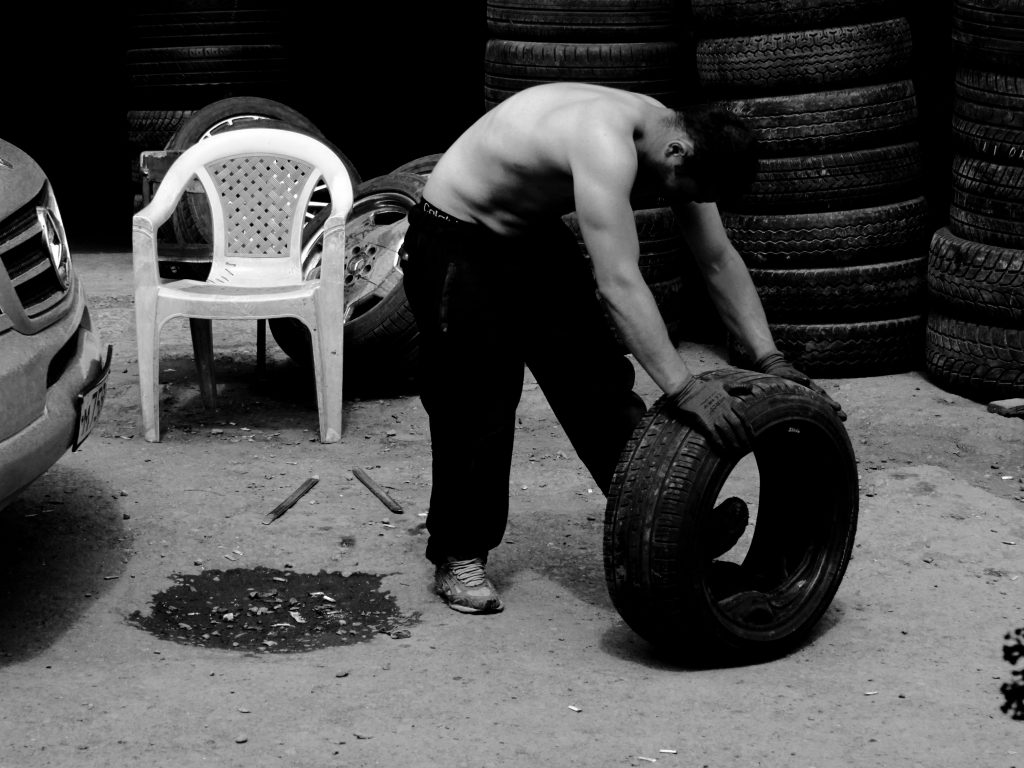
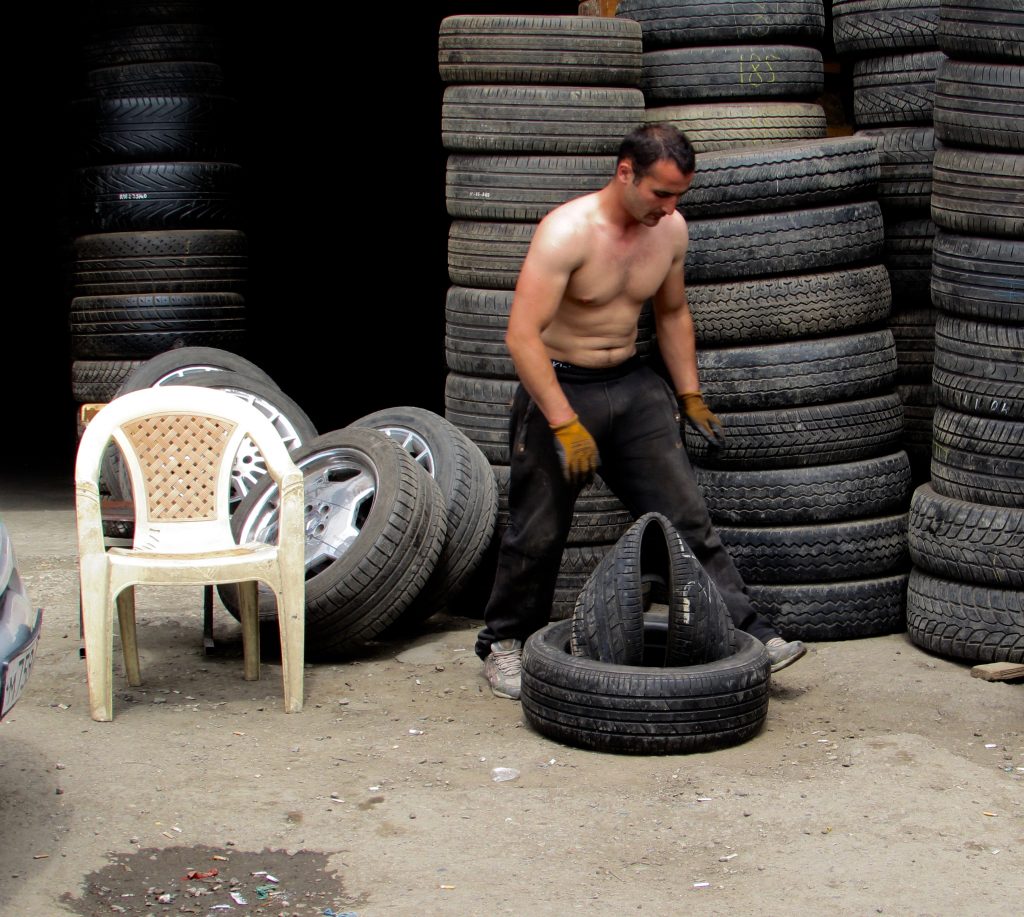
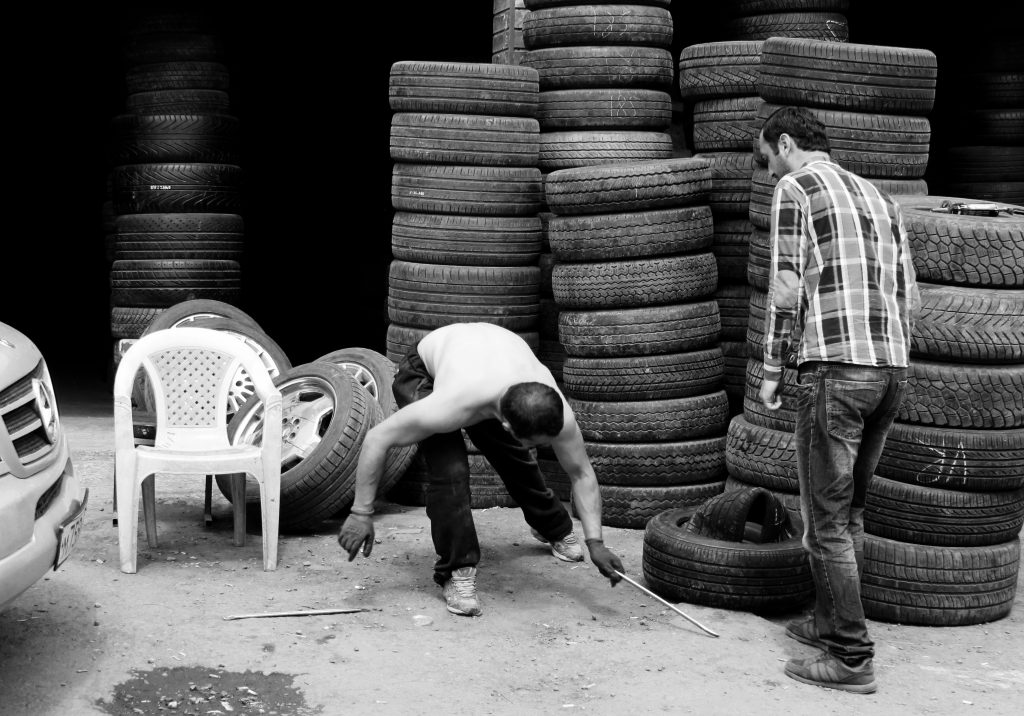
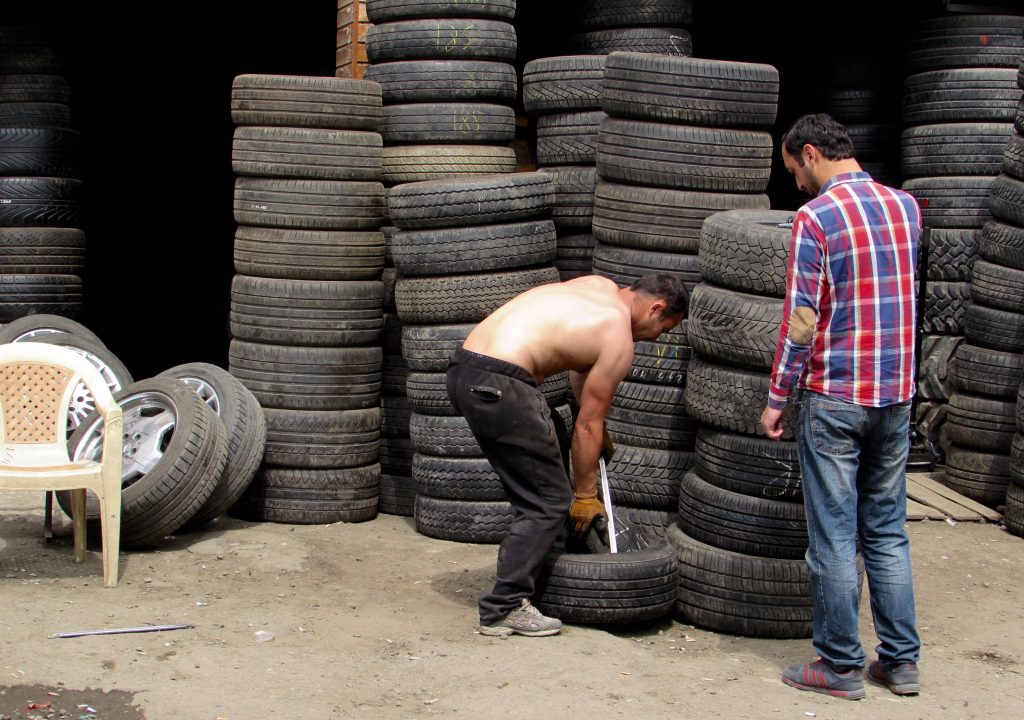
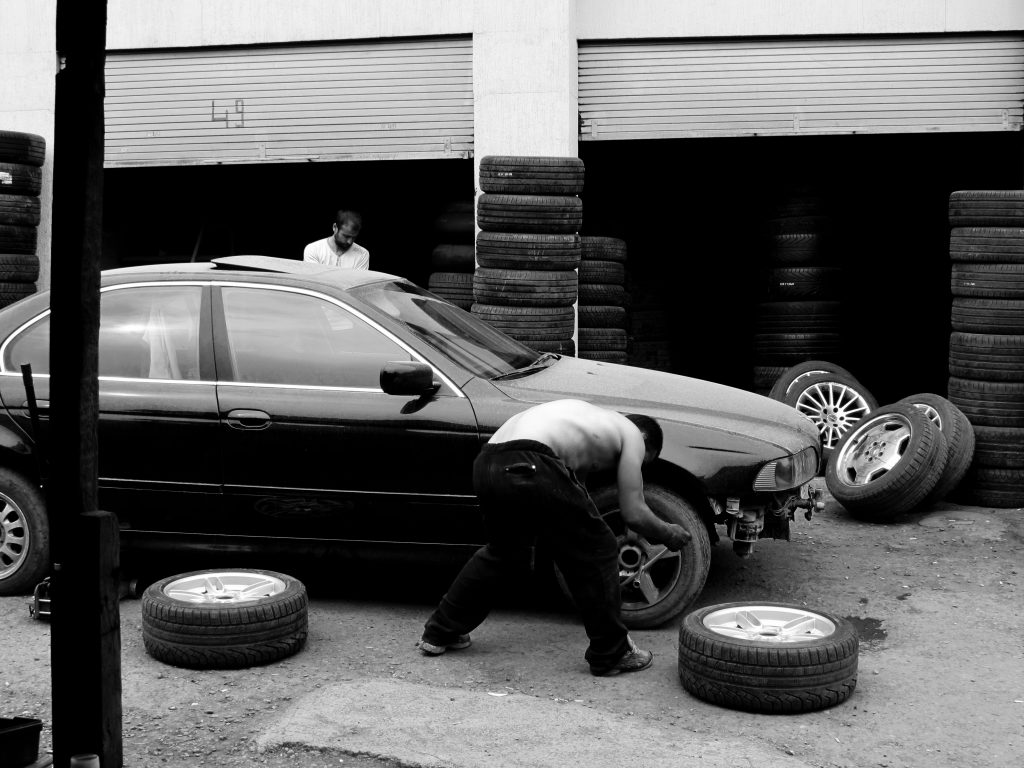
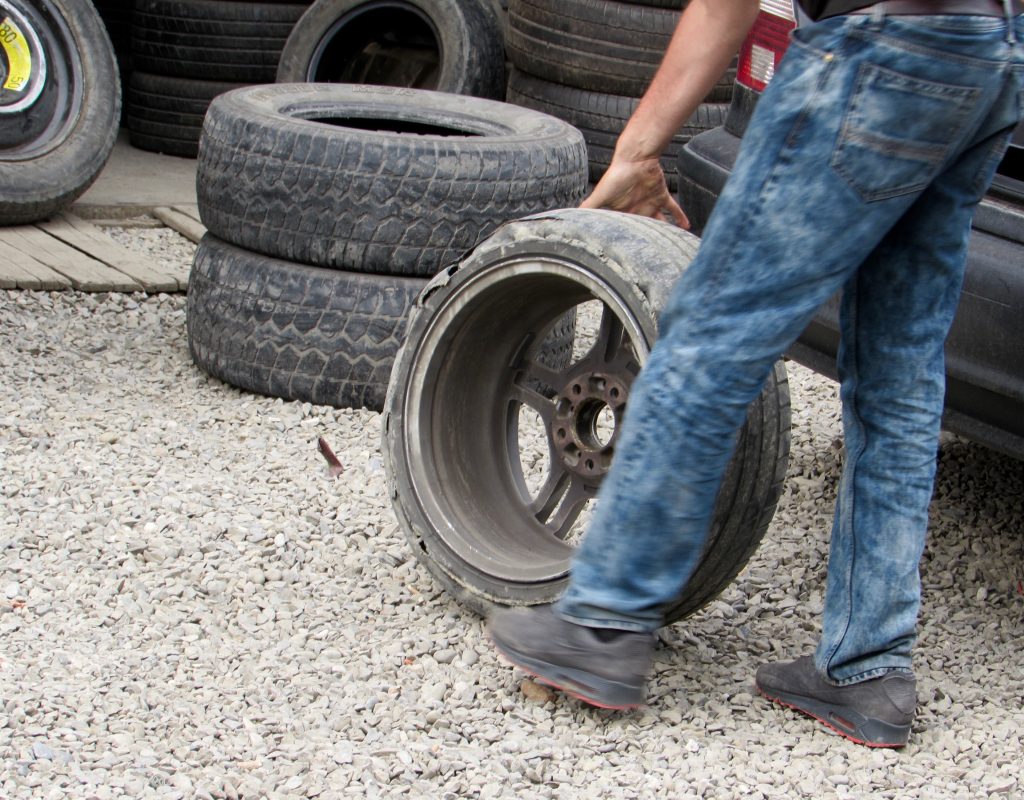
Exchange if information and ideas among neighbors when dealing with technical issues is common.
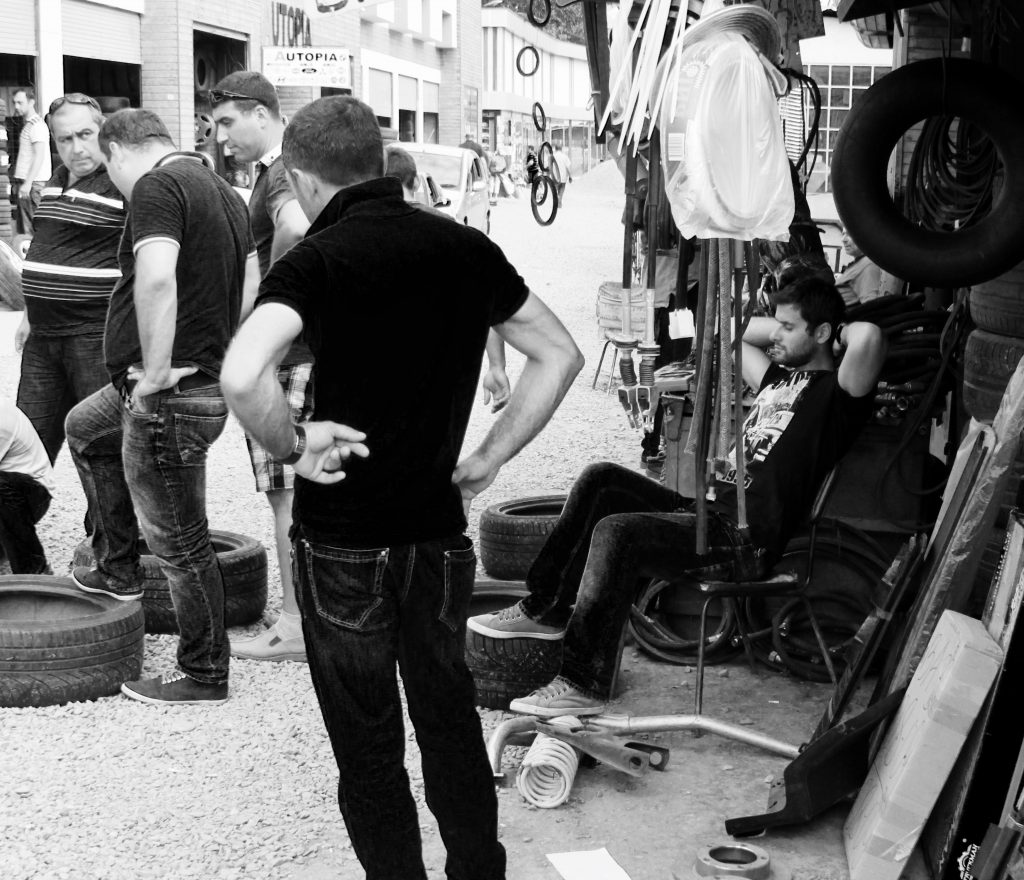
Push-Cart Mobilities – Independent Labor
This kind of labor is also sold in the processes of realization and distribution of global im/mobility of capital.

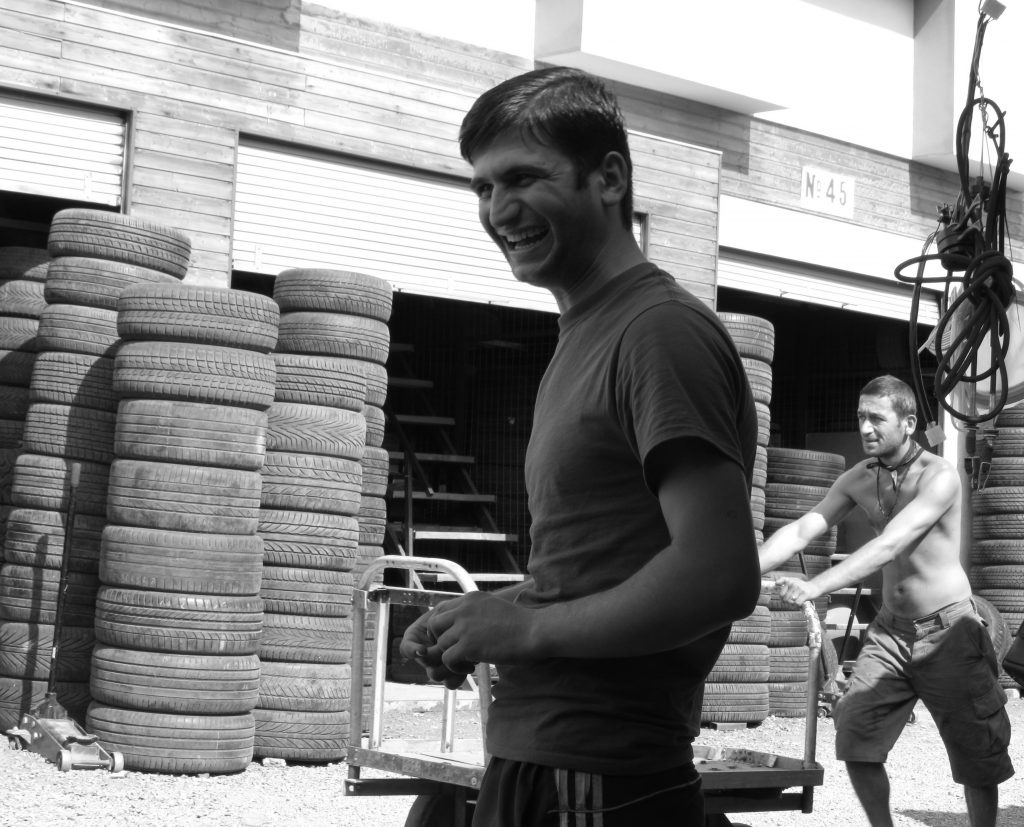
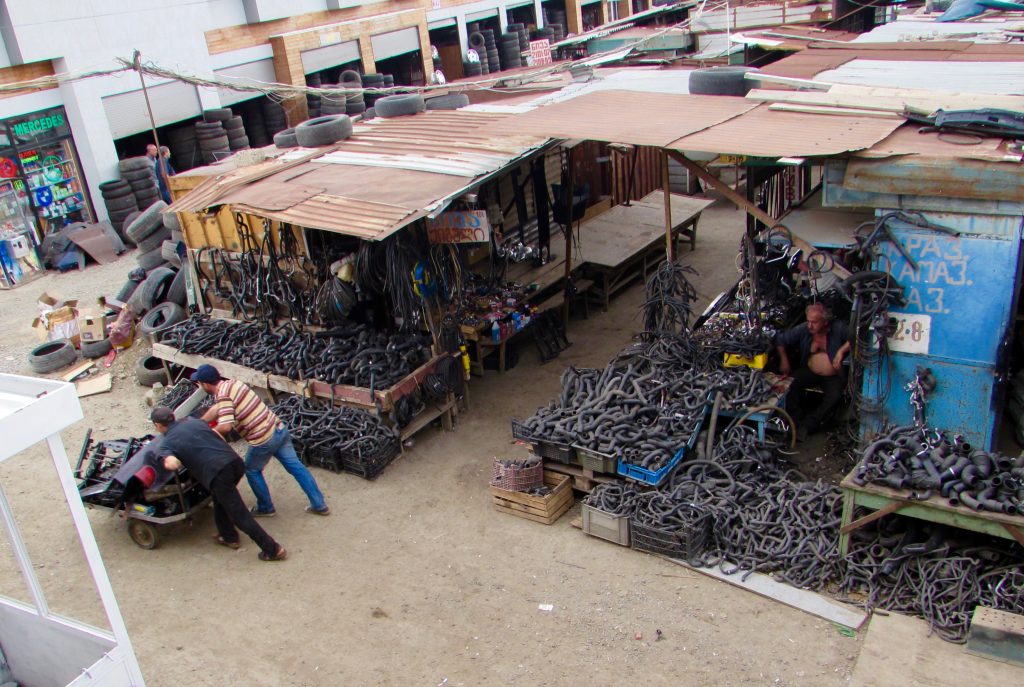
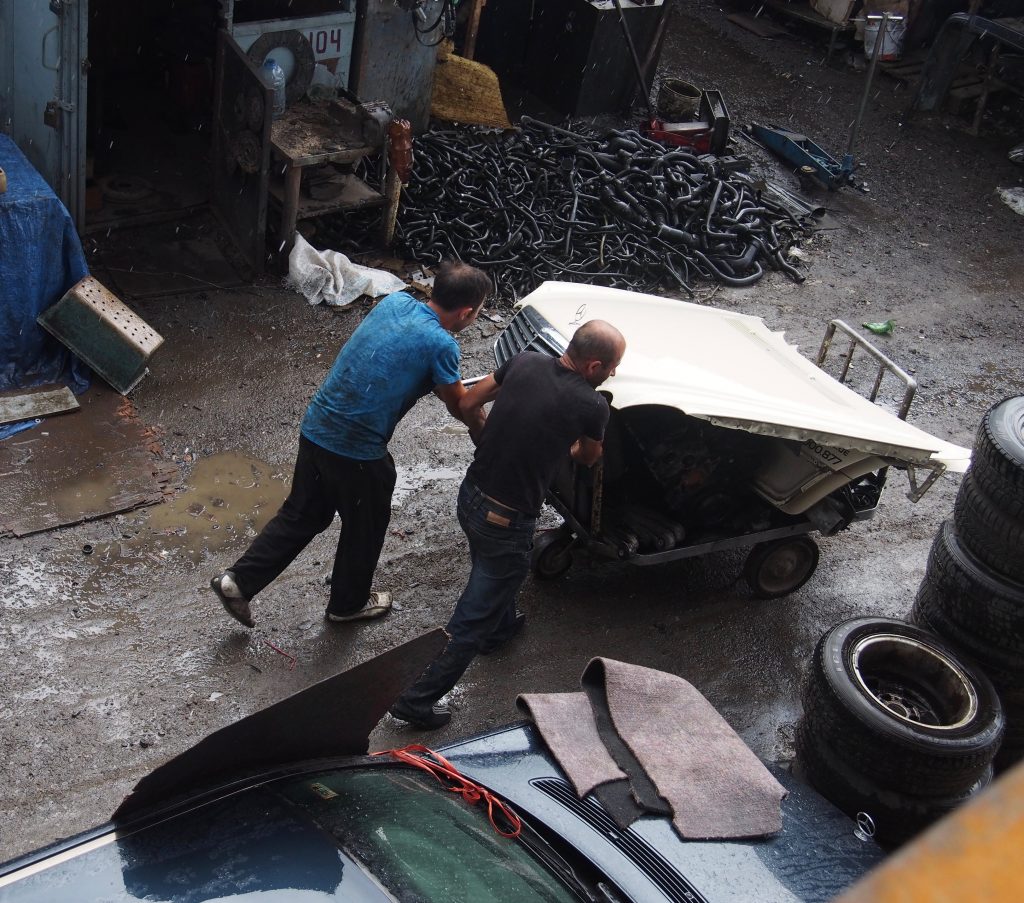
Mobile Gatherers of Metal – Independent Labor – Women
Their activities requires skills and knowledge about the what is gathered, and demand for them. Some gatherers are mobile with their children. Their mobilities at the market and around the city is connected to im/mobilities of capital in its various forms around the glob.
The price of some of the items they gather could be set in a stock market in one metropolitan center, e.g., London, but they could be used in production of commodities in industrial urban areas in another part of the world, like in China.
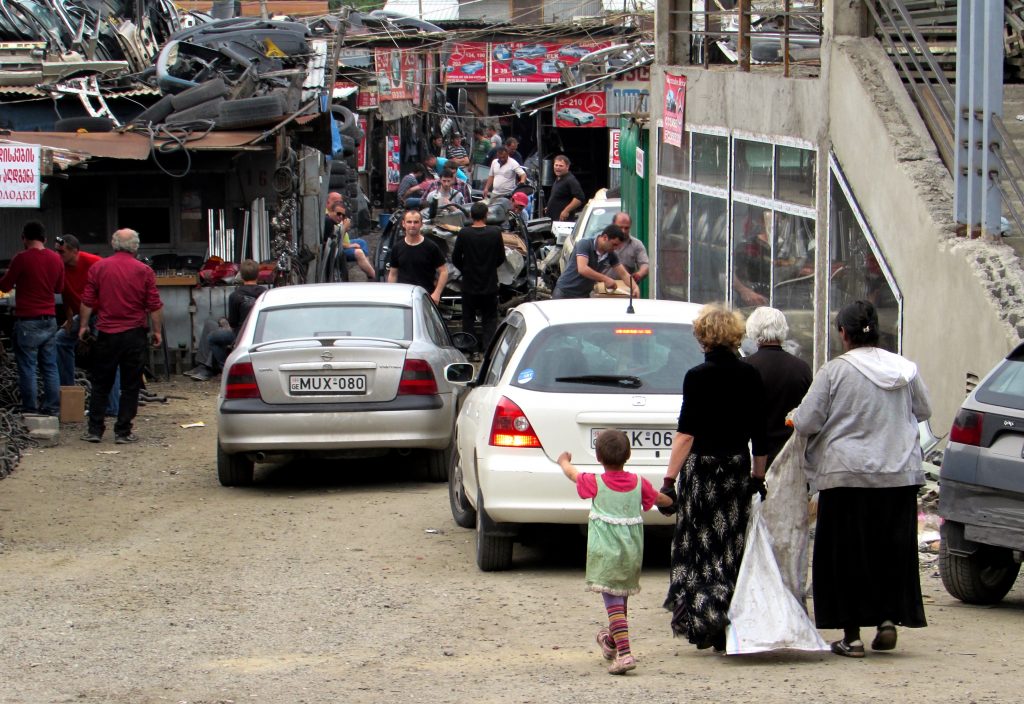
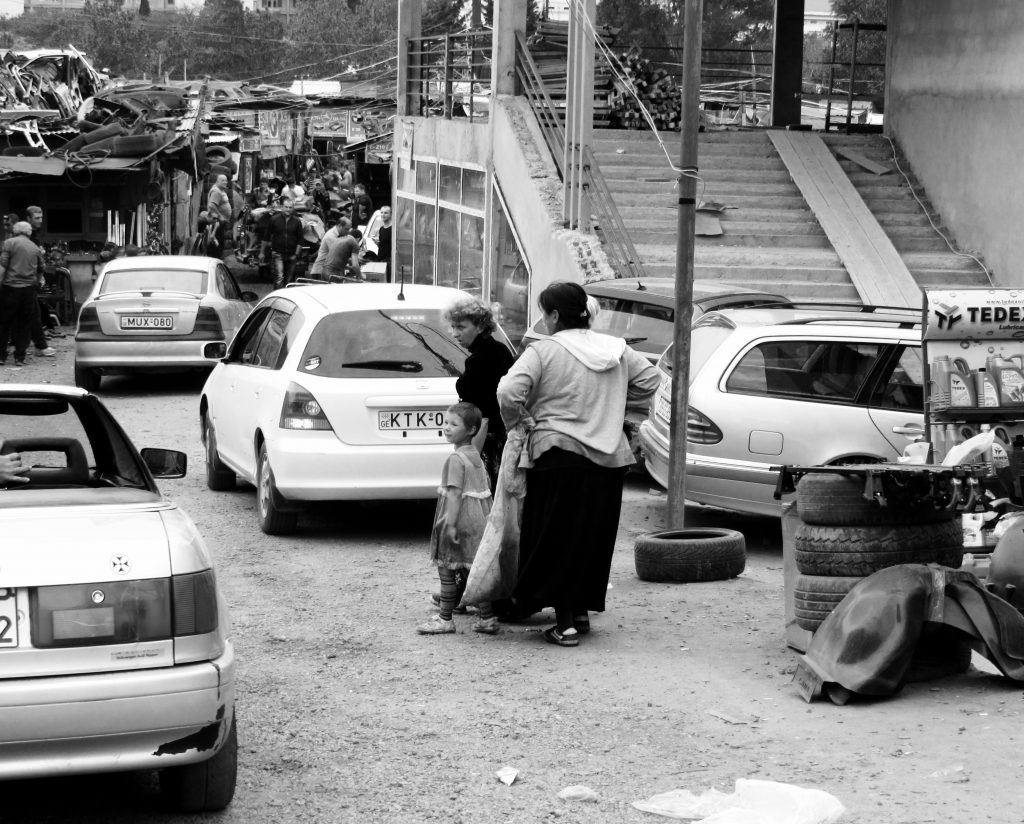
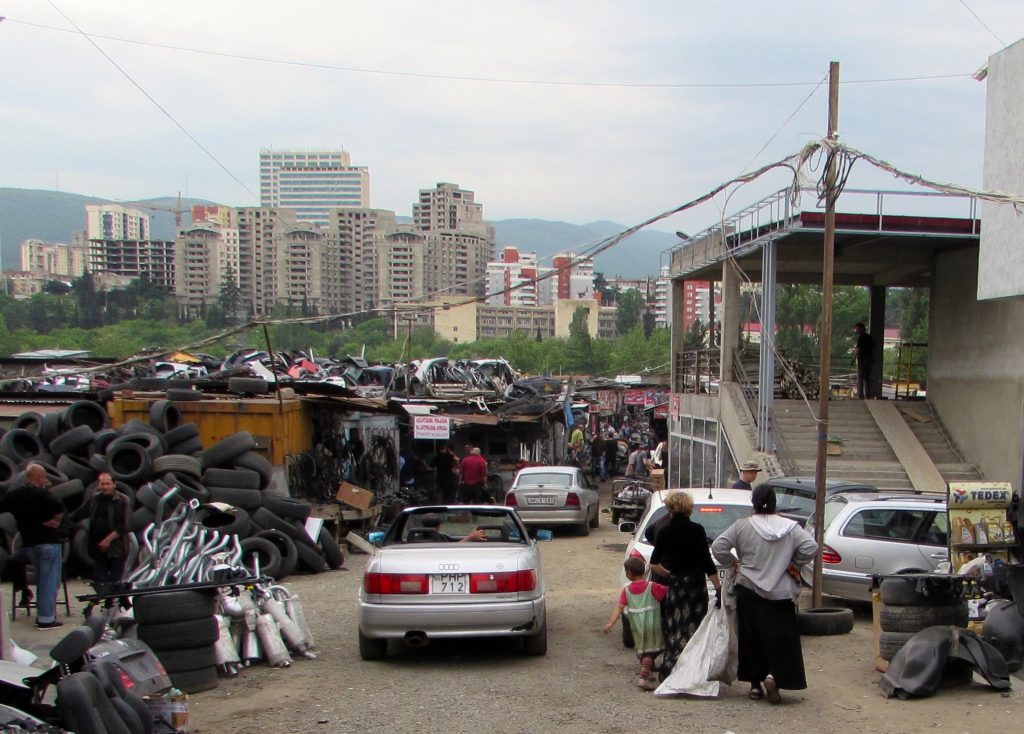
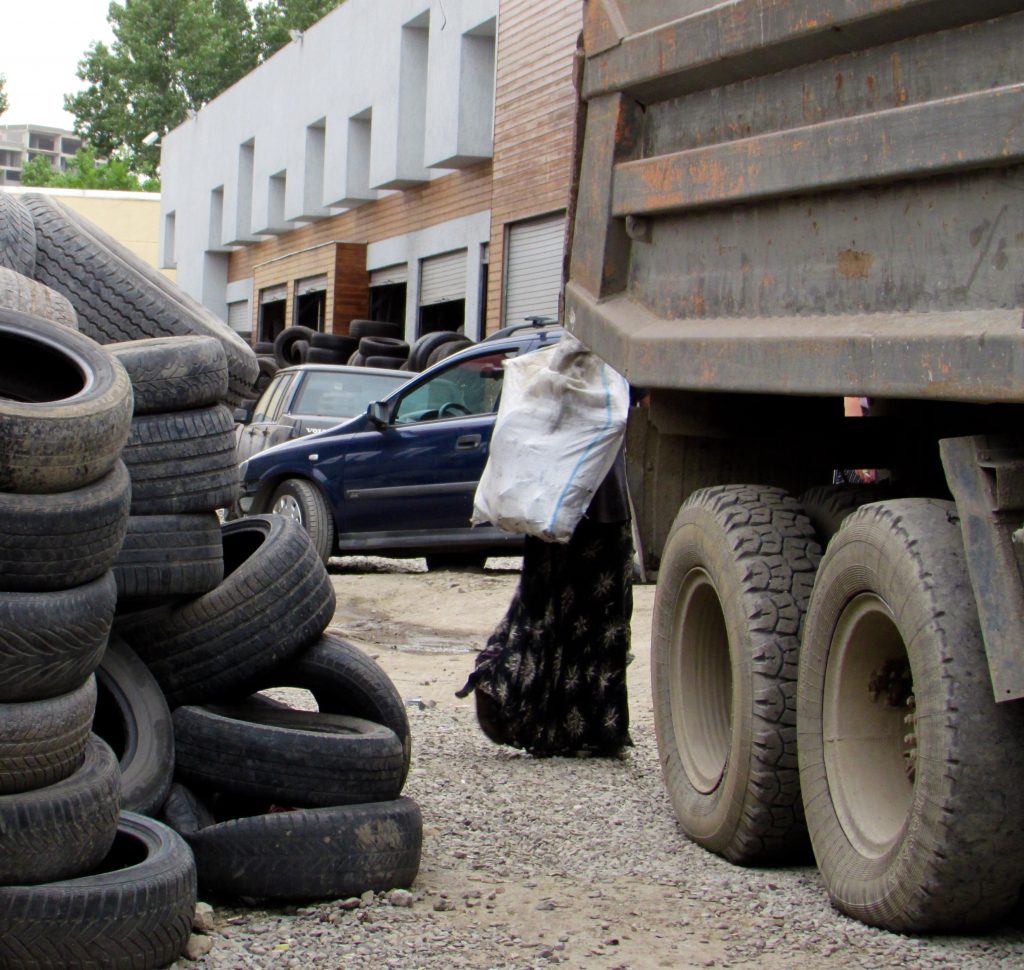
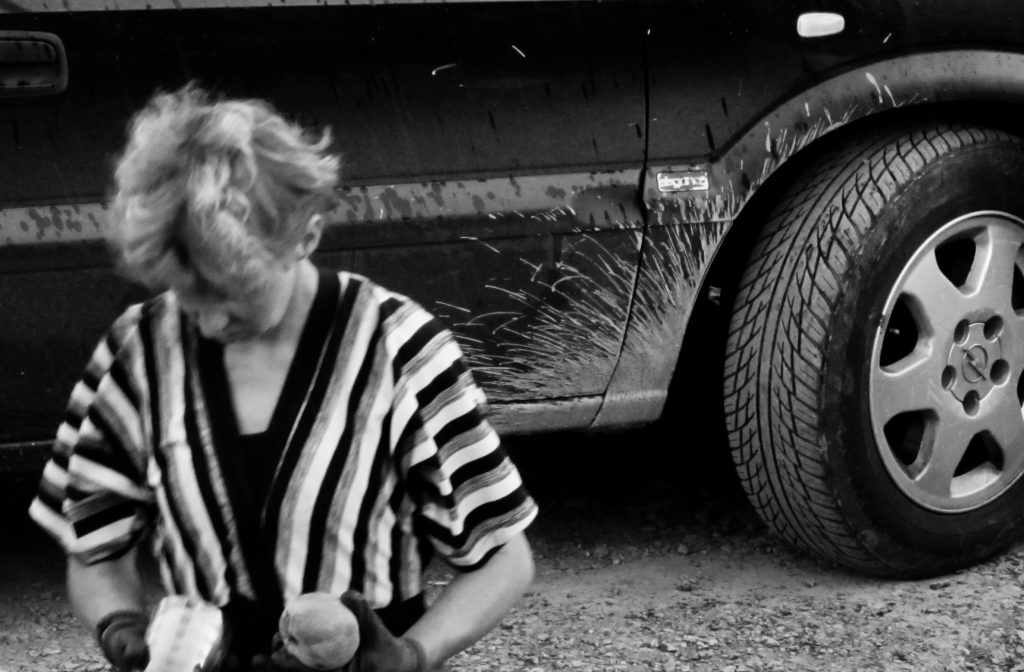
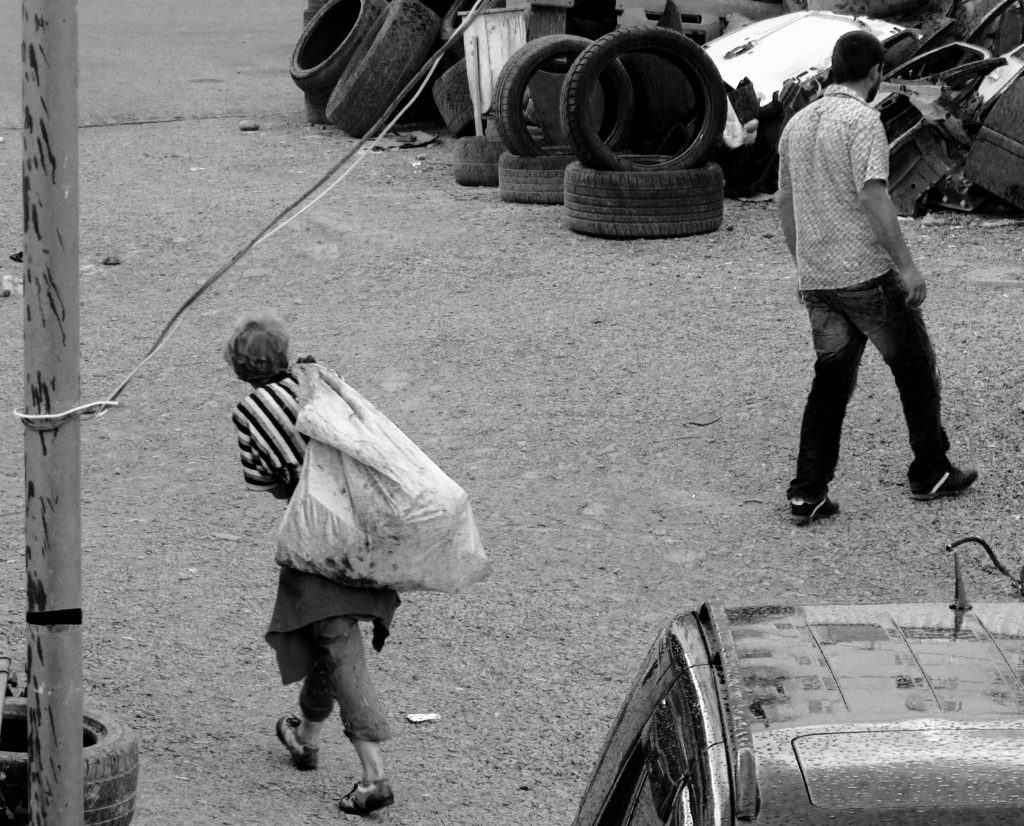
A mobile gatherer and a mobile seller
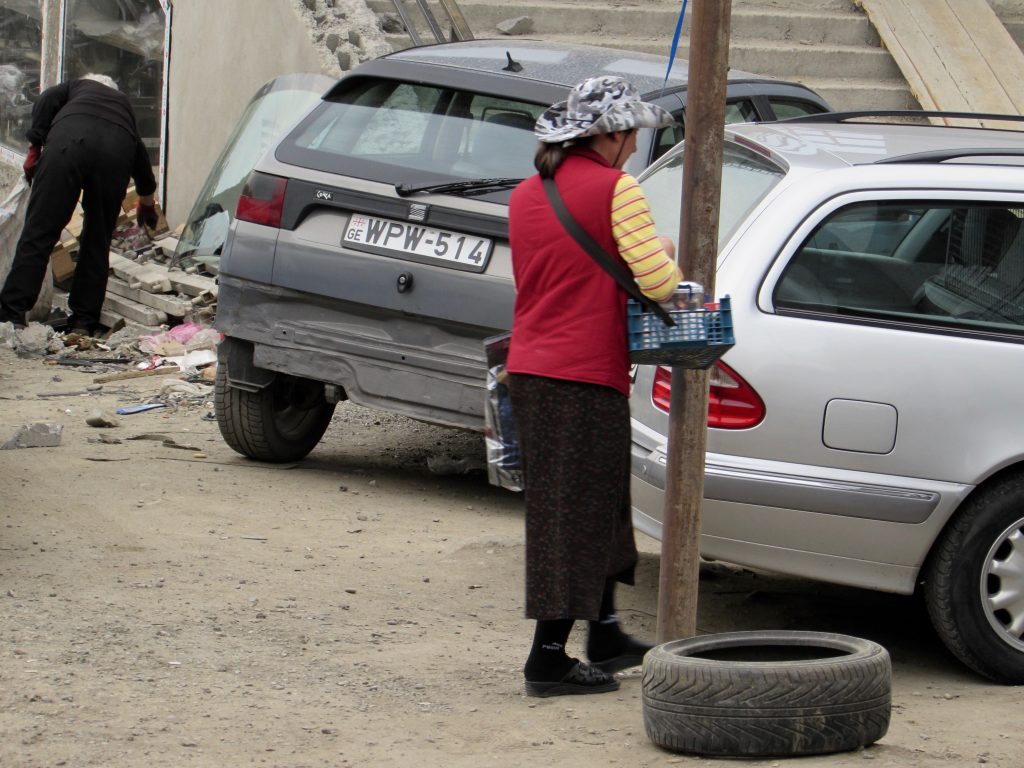
Tamuna Chkareuli – Tbilisi’s Jarti Collectors
“Not far from Tbilisi’s Samgori Metro Station, lies a former ceramic factory now serving as a base for collecting, dismantling, and recycling scrap metal. There are two general categories of collectors — those who work in ‘black metal’, low-value iron, tin, and steel and ‘colour metals’, copper, brass, aluminium, and other non-magnetic metals.
‘You have no idea how many families eat their bread with this’, says Amiran Memarne, the director of one of the bases that takes in refined metal from the collectors. ‘But it’s a hard business. Our clients buy metal for cheap — for example China and India — and we also lose a lot on excise taxes. Even though the prices are regulated by the London stock exchange, there have been several times when we didn’t make any profit or even lost money.’”
Tobacco Mobilities and Credit
The mobile sellers register their credit-based transactions.
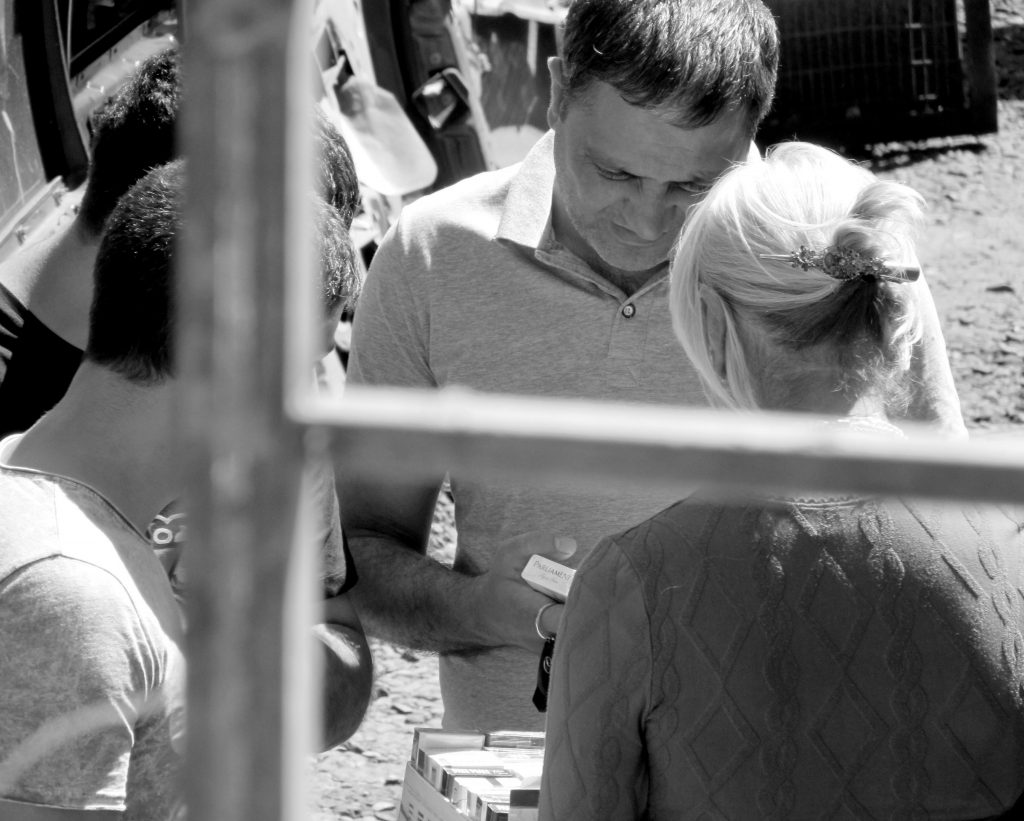
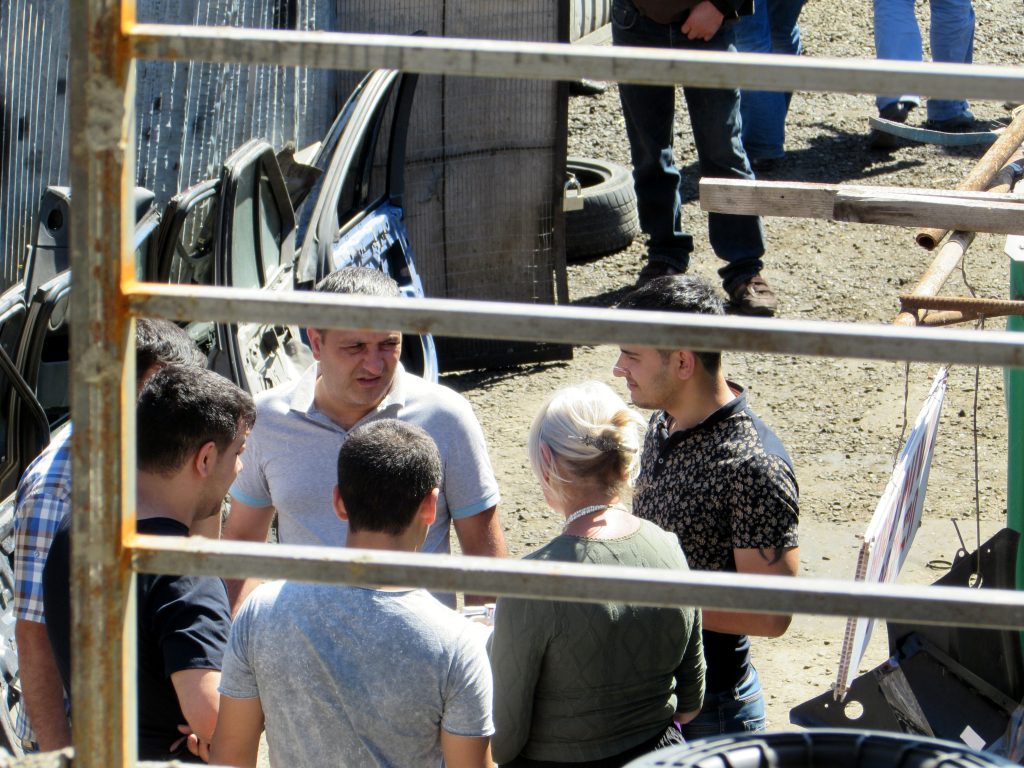
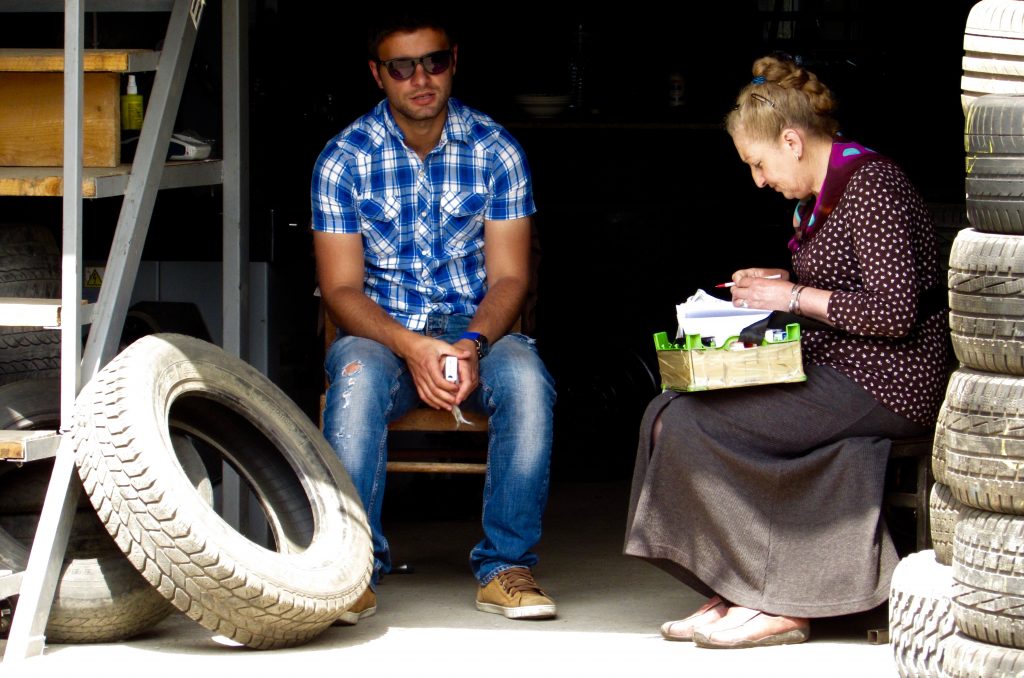
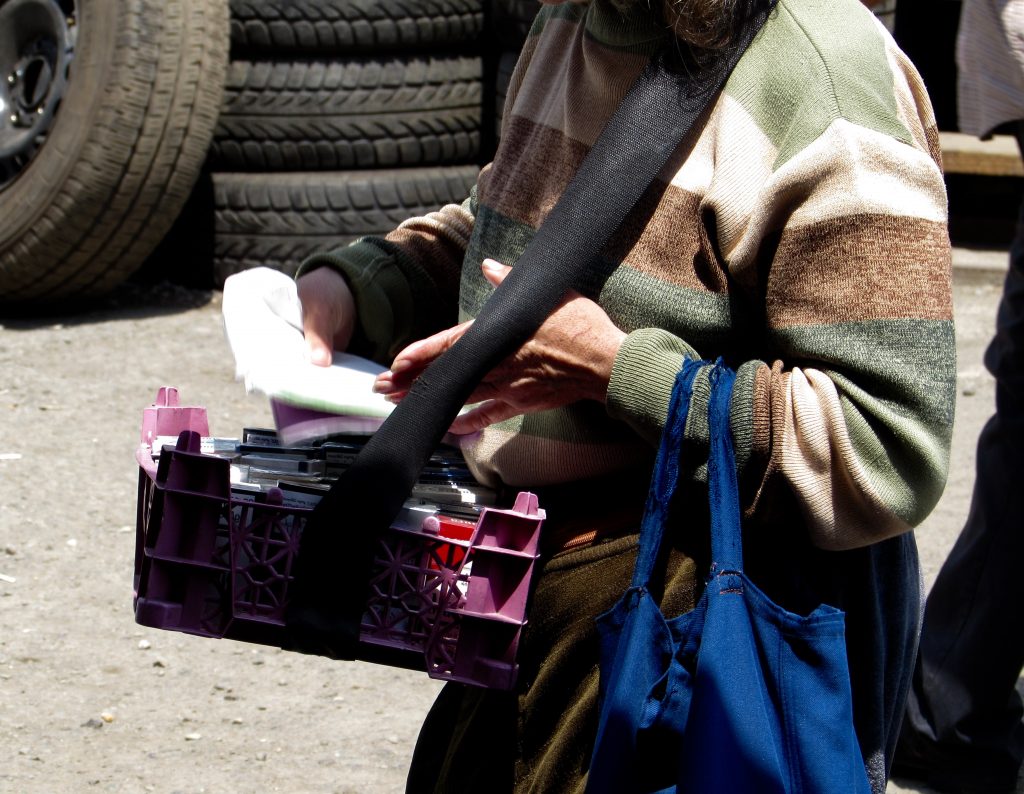
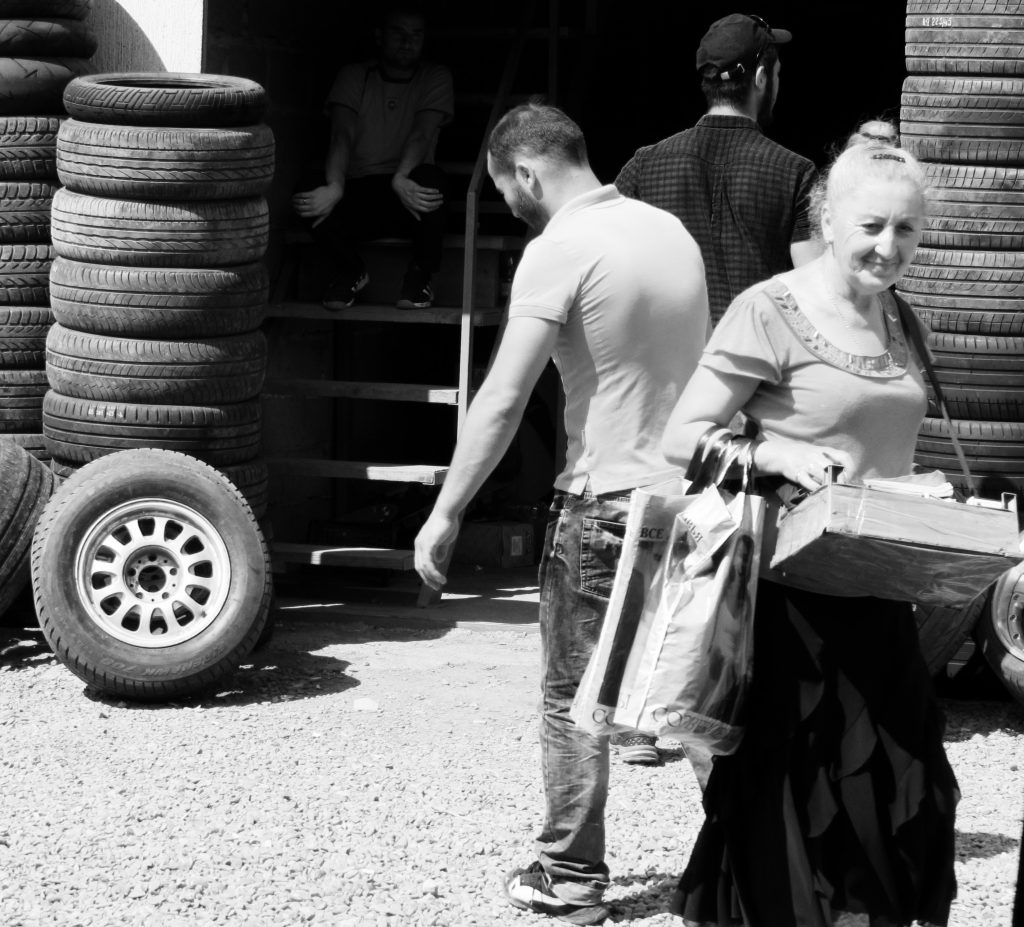
One sells food items and is mobile carrying her commodities, the other has a stall to sell (mainly) cigarettes, but has to be mobile too to fetch debtor’s money, carrying her credit notebook and mobile phone.

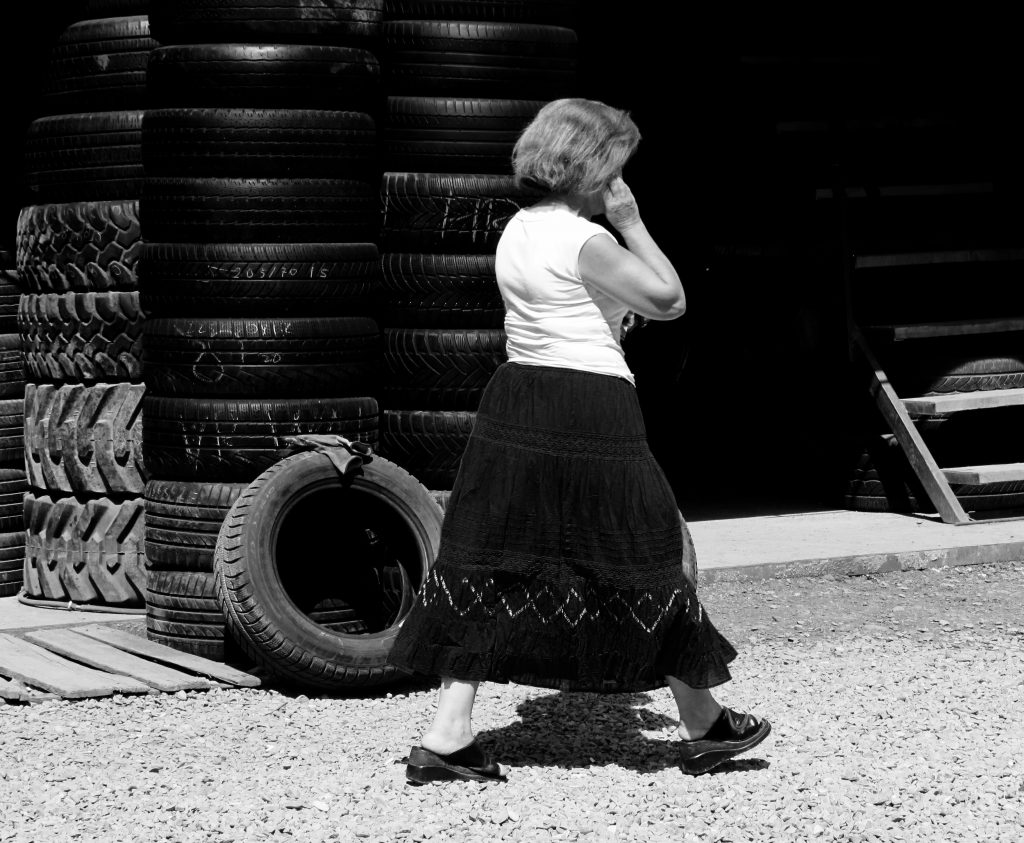
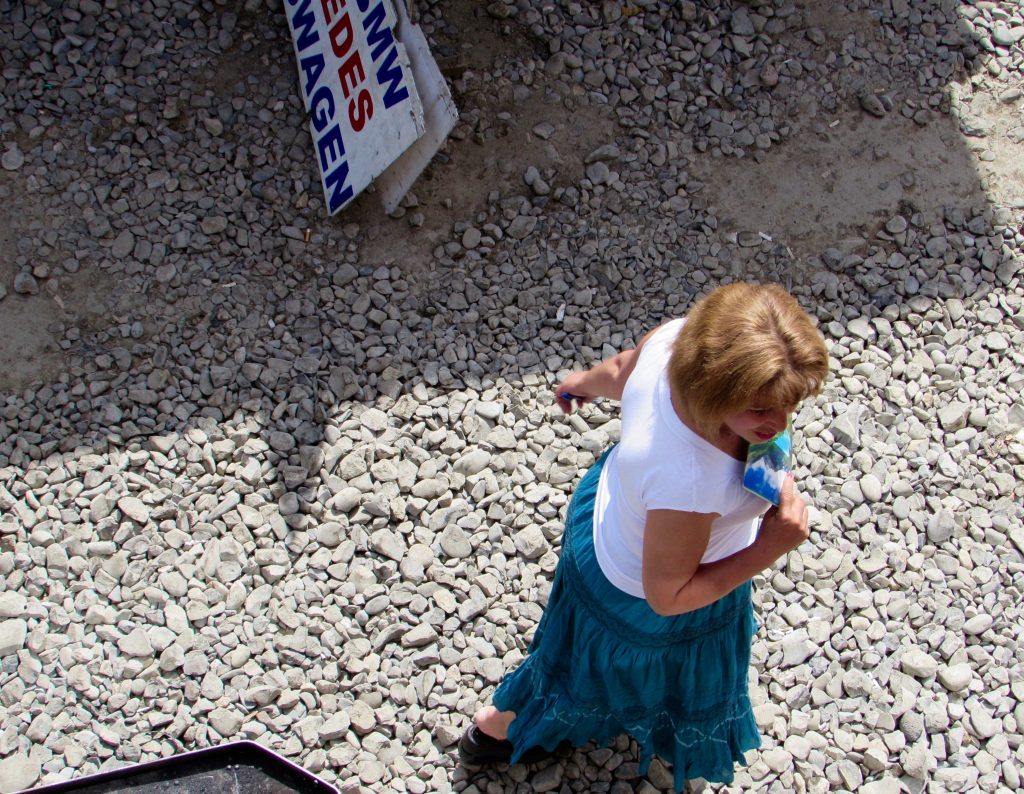
One sells cigarettes, the other socks, they are Georgian-Armenians, very close friends. and usually move around in the market together.
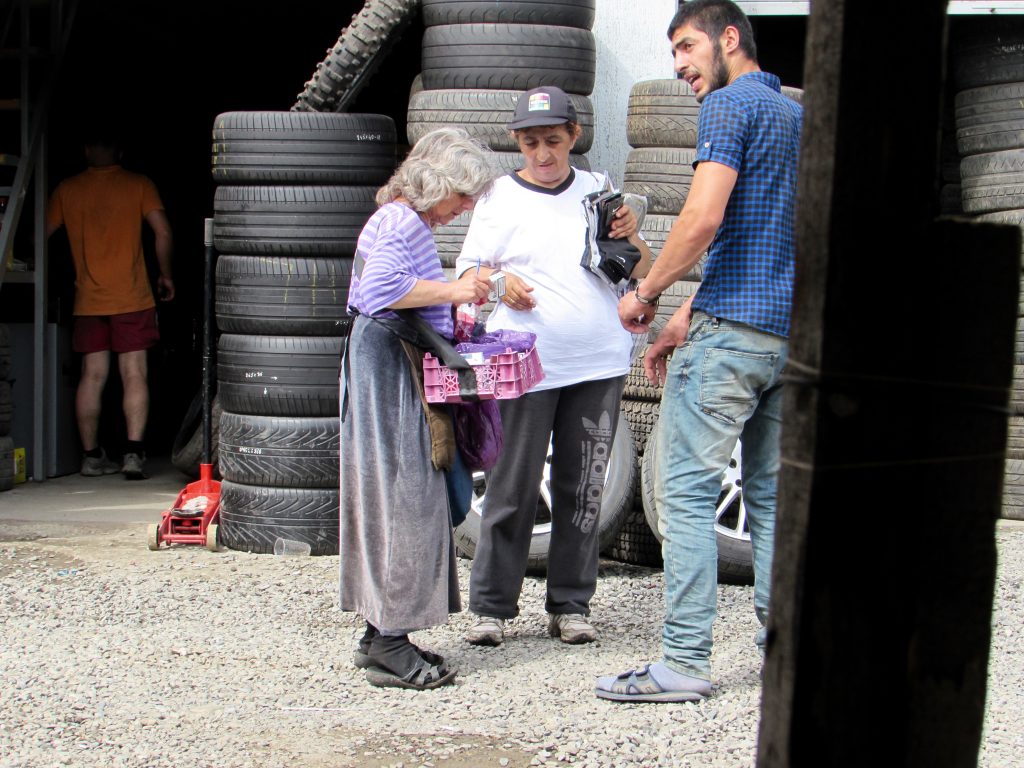
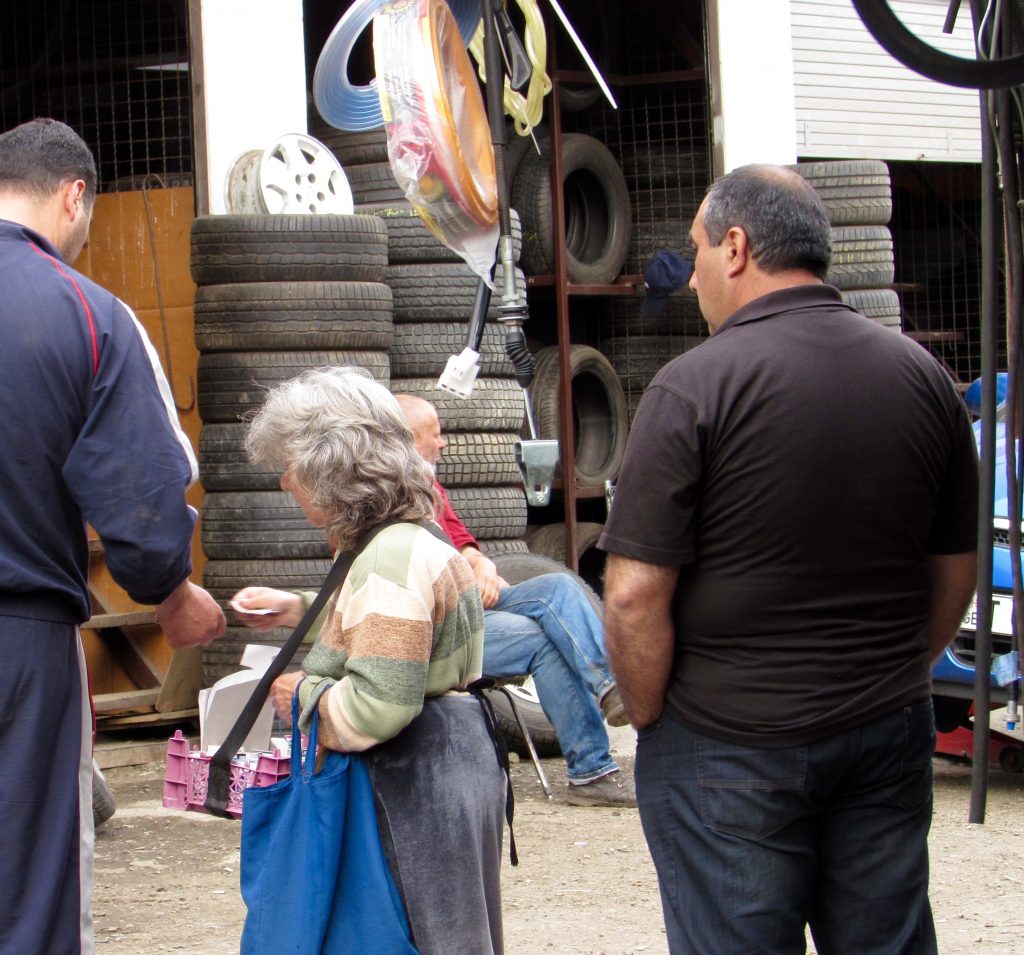
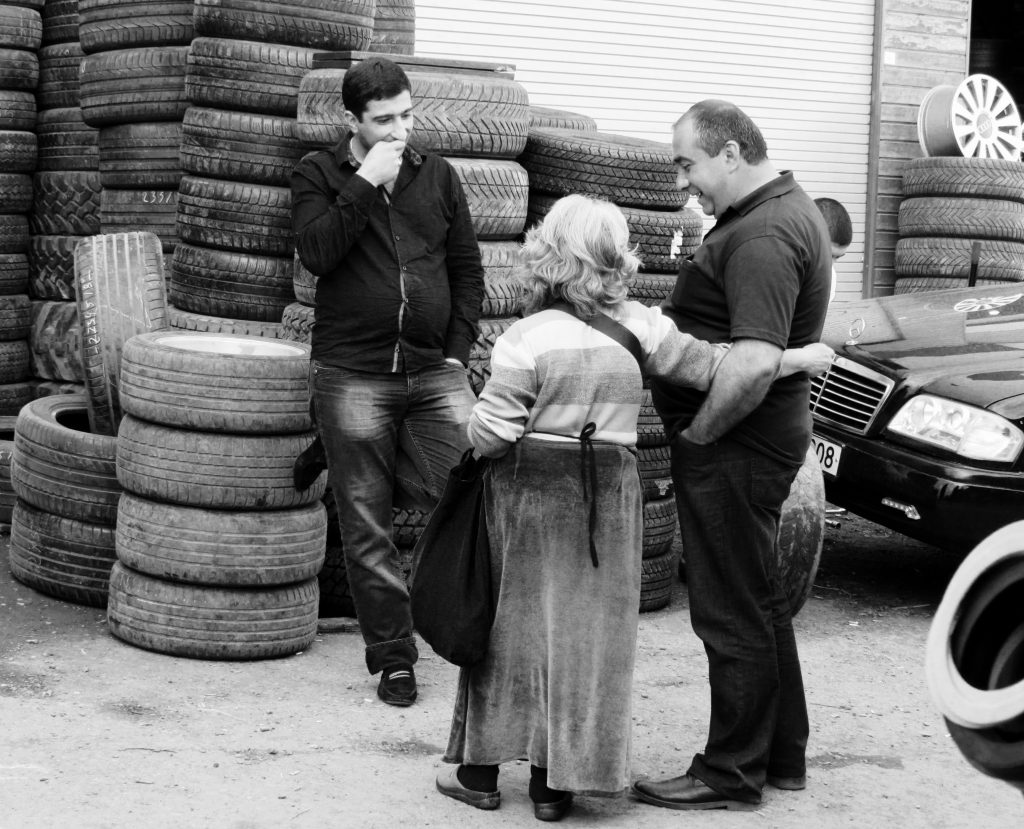
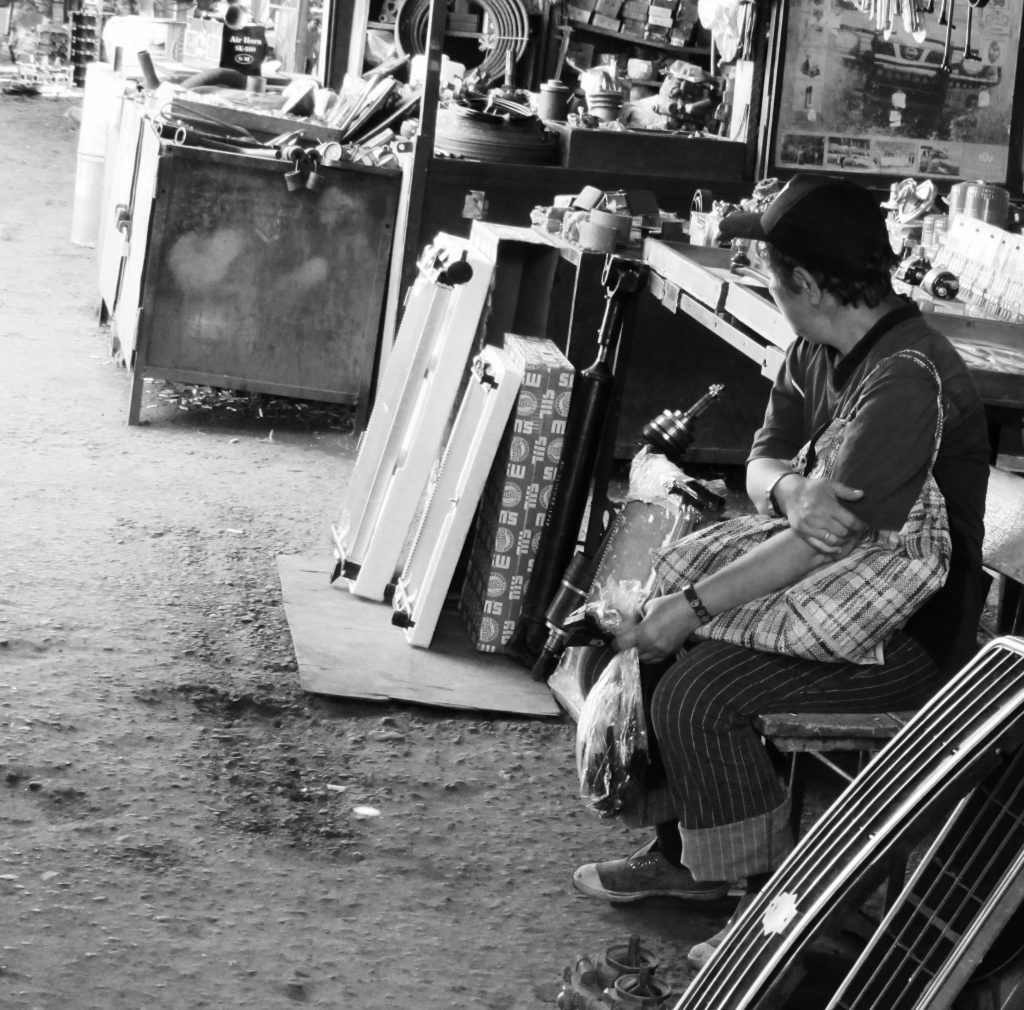
Khachapouri Mobilities
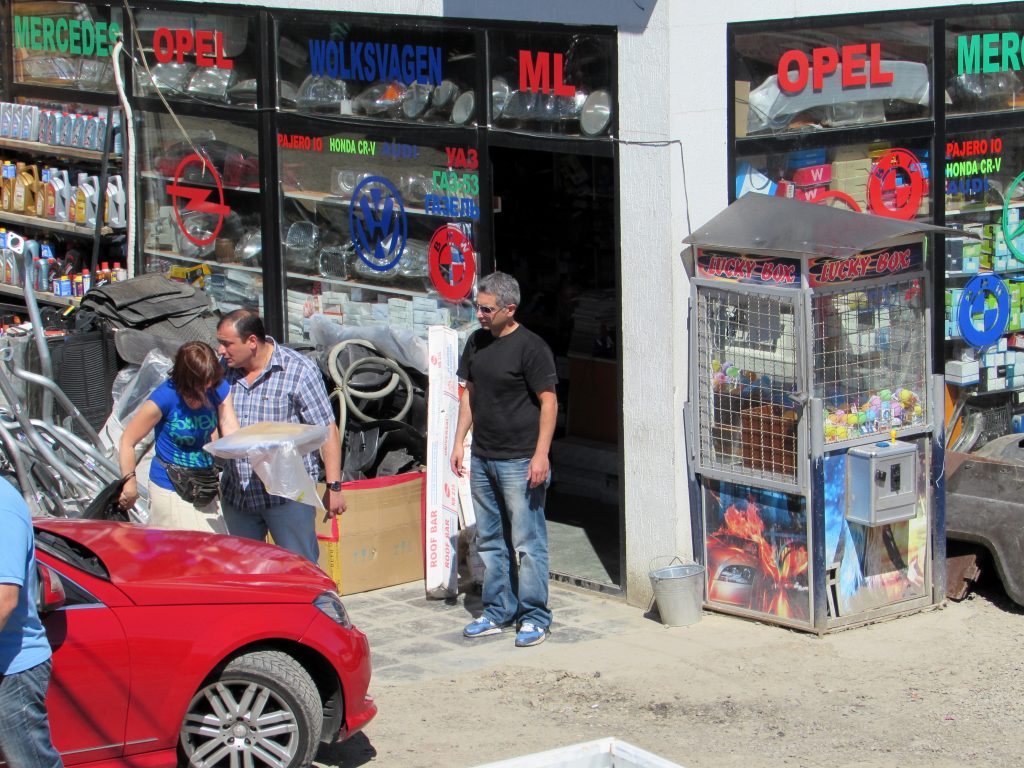
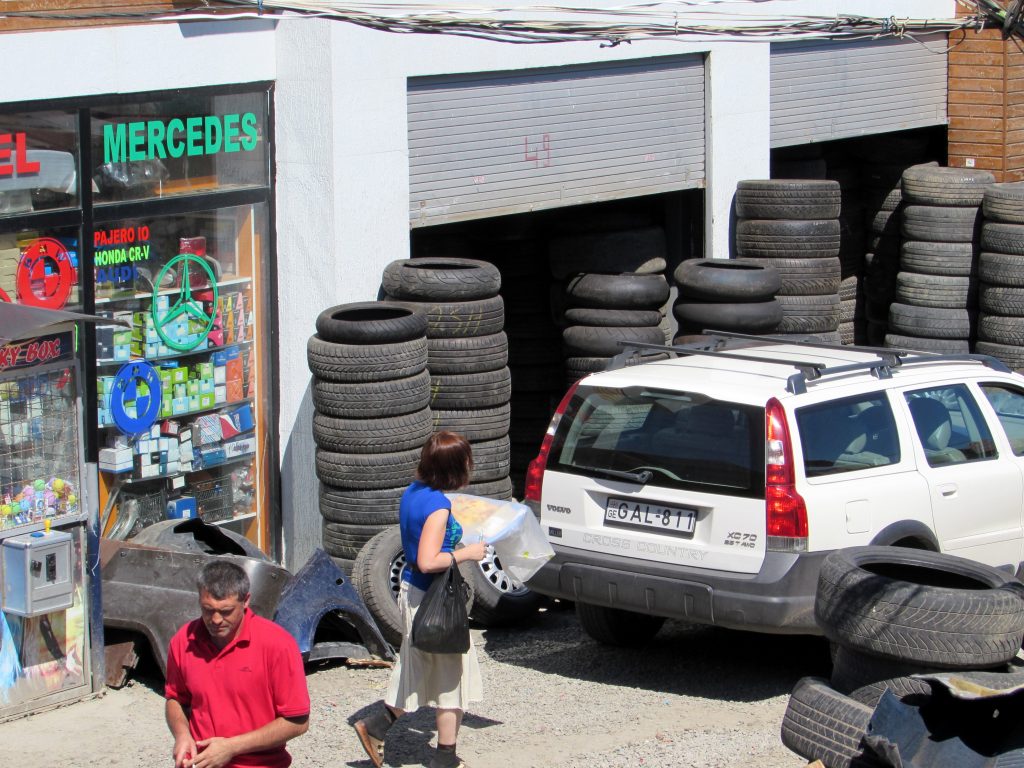
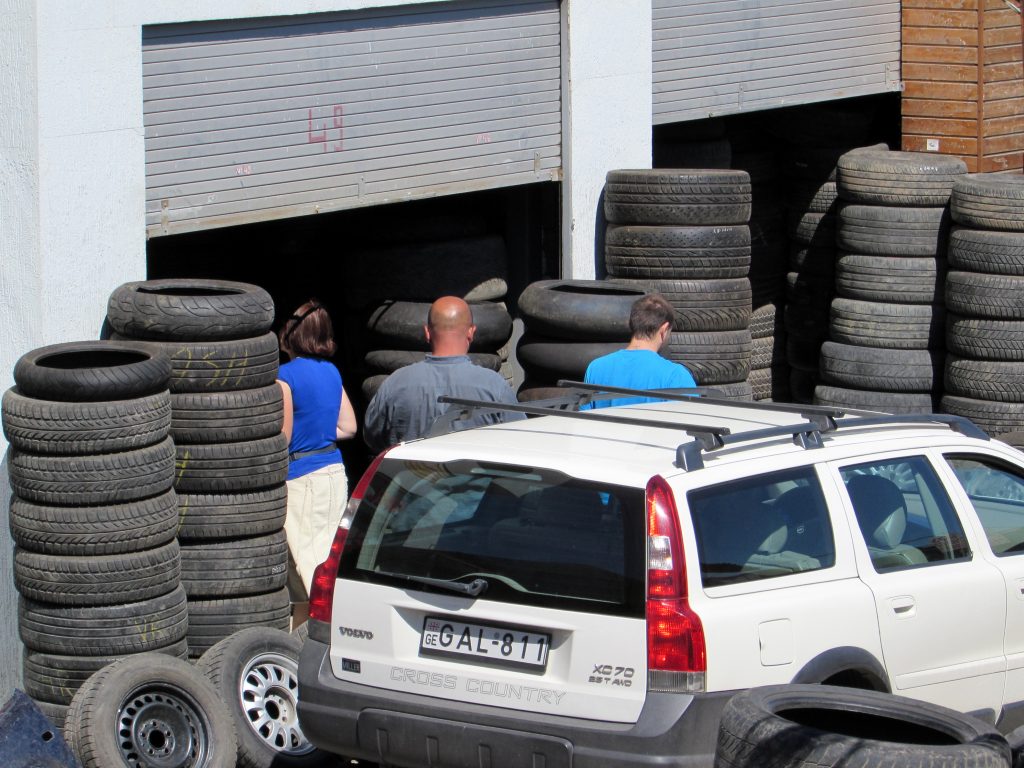
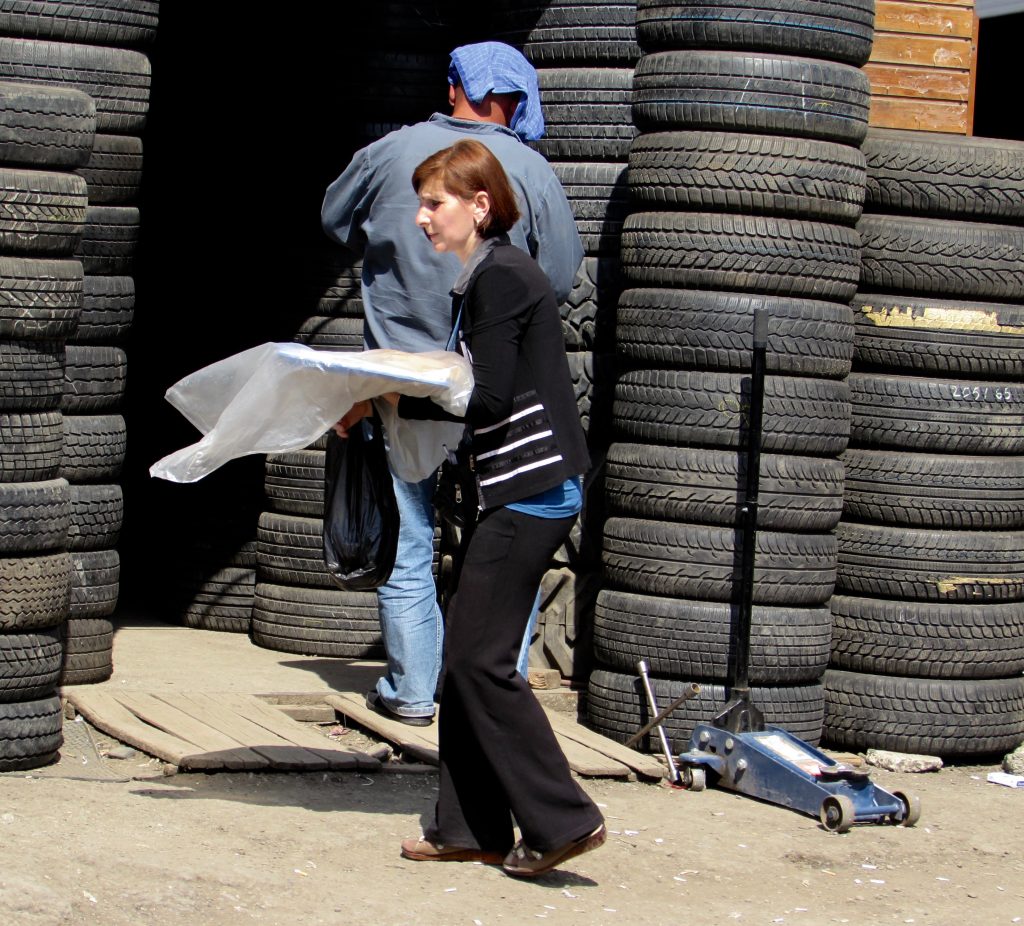

Coffee Mobilities
She got the order, now going to her stall to prepare coffee.
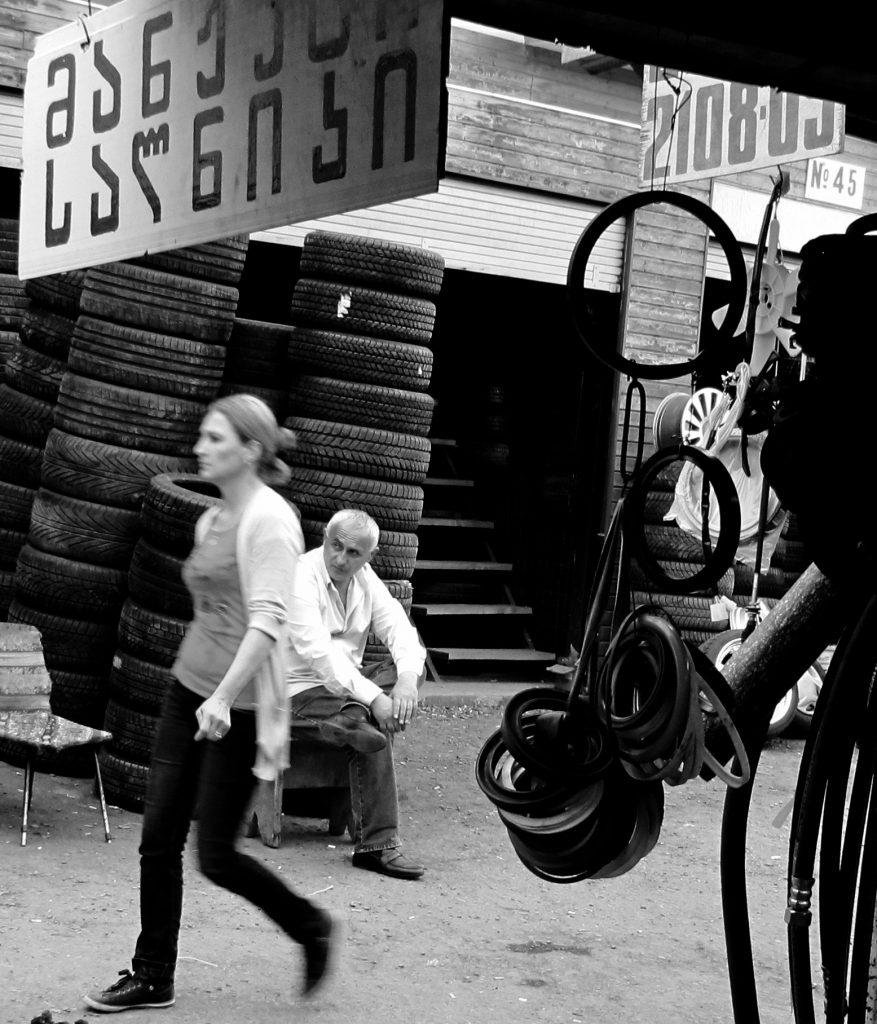
Carrying coffee to the customer
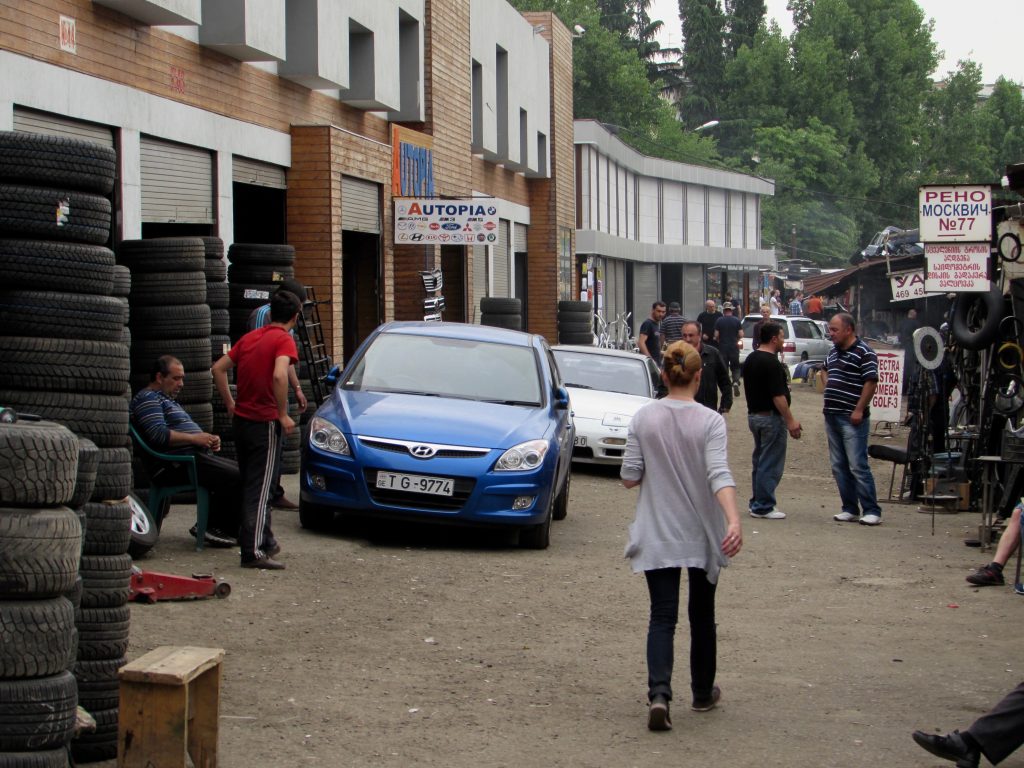
Sunflower Seeds Mobilities
She was a truck driver during the soviet times, and drove even to central Asia.
Now, walks in the market and sells sunflower seeds.
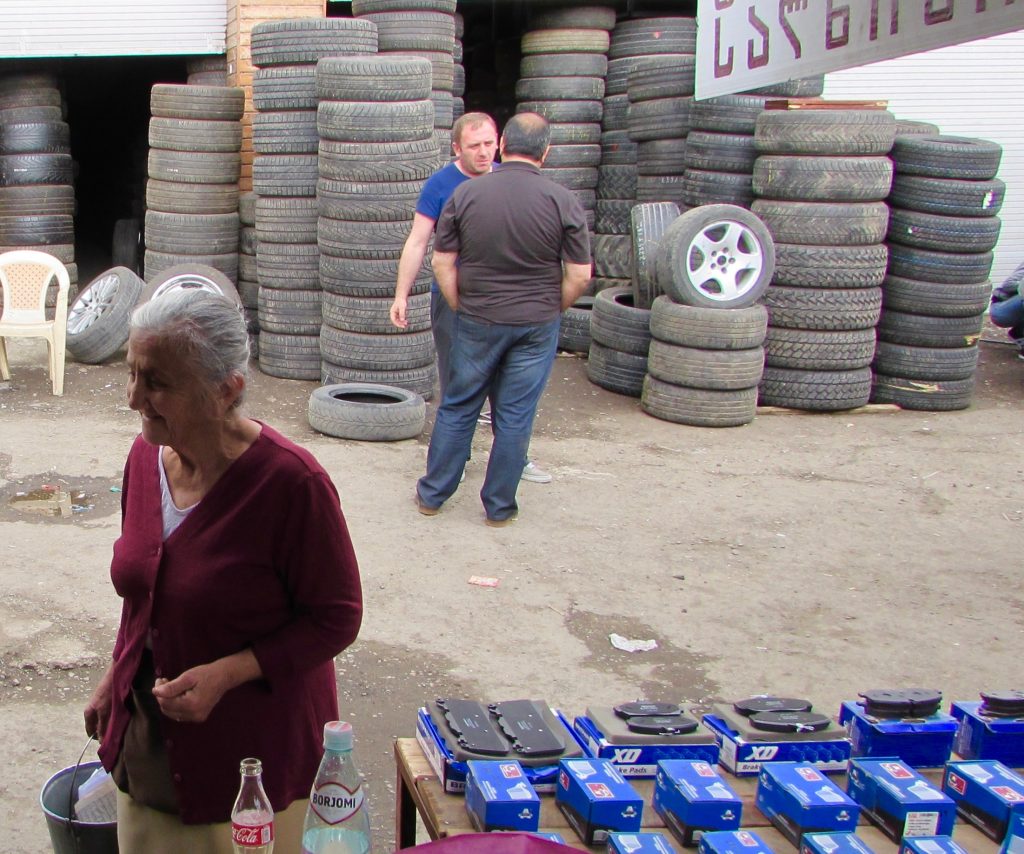
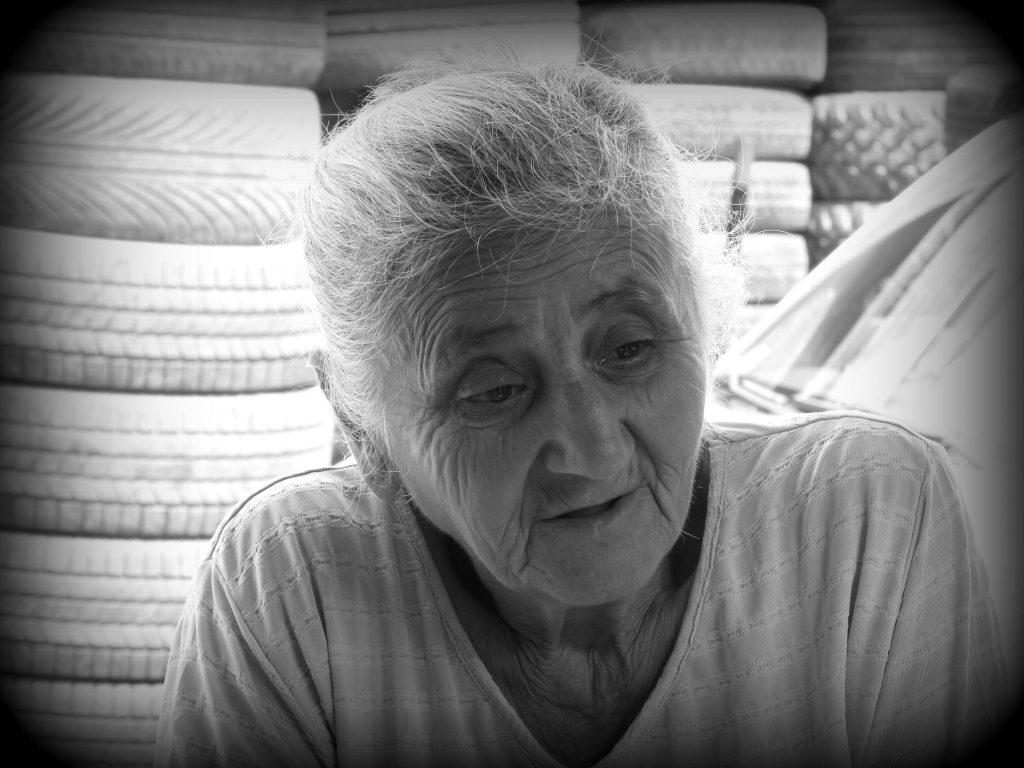
Seasonal (Items of Desire) Mobilities
Khachapori is something desired in all seasons, but there are also seasonal items of desire.
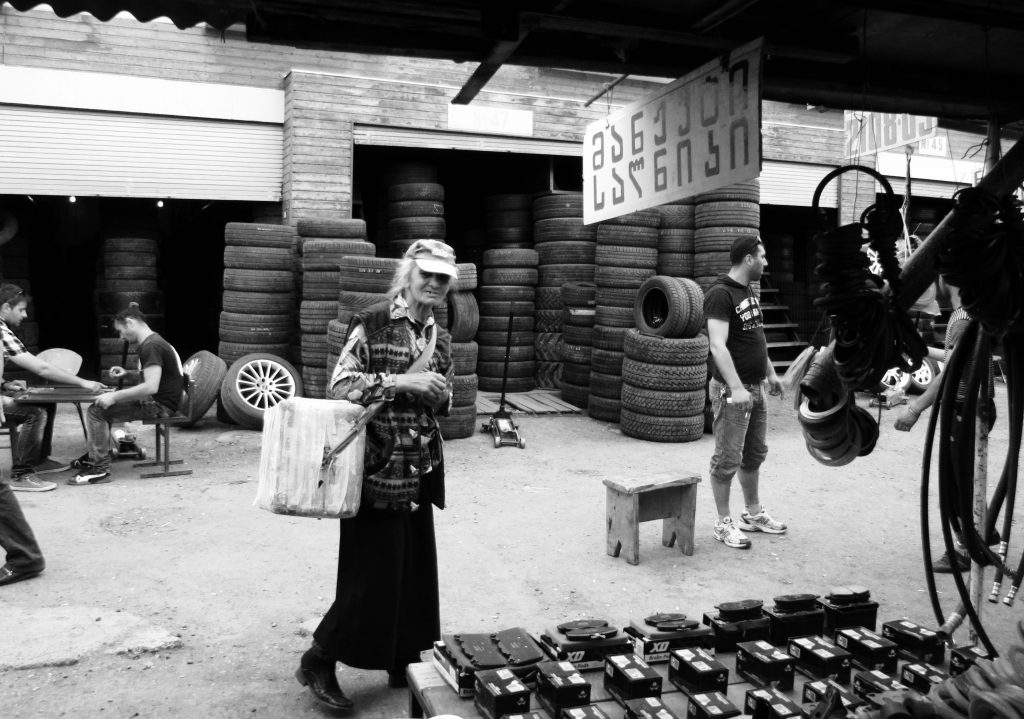
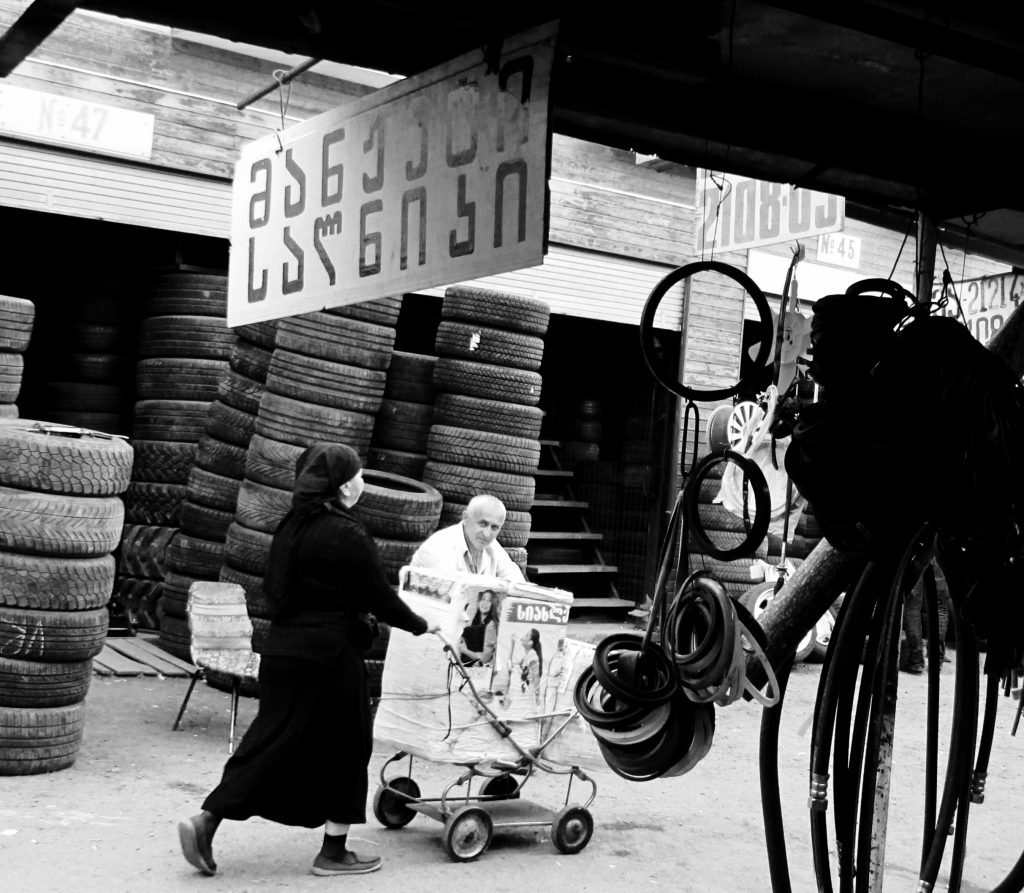
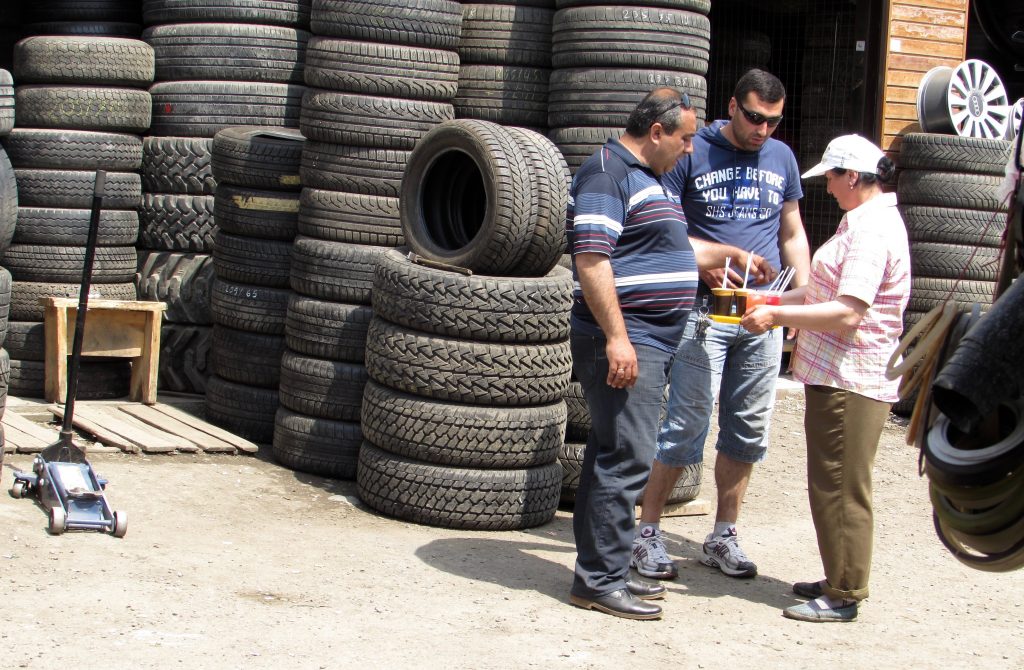
Clothing Mobilities and Credit
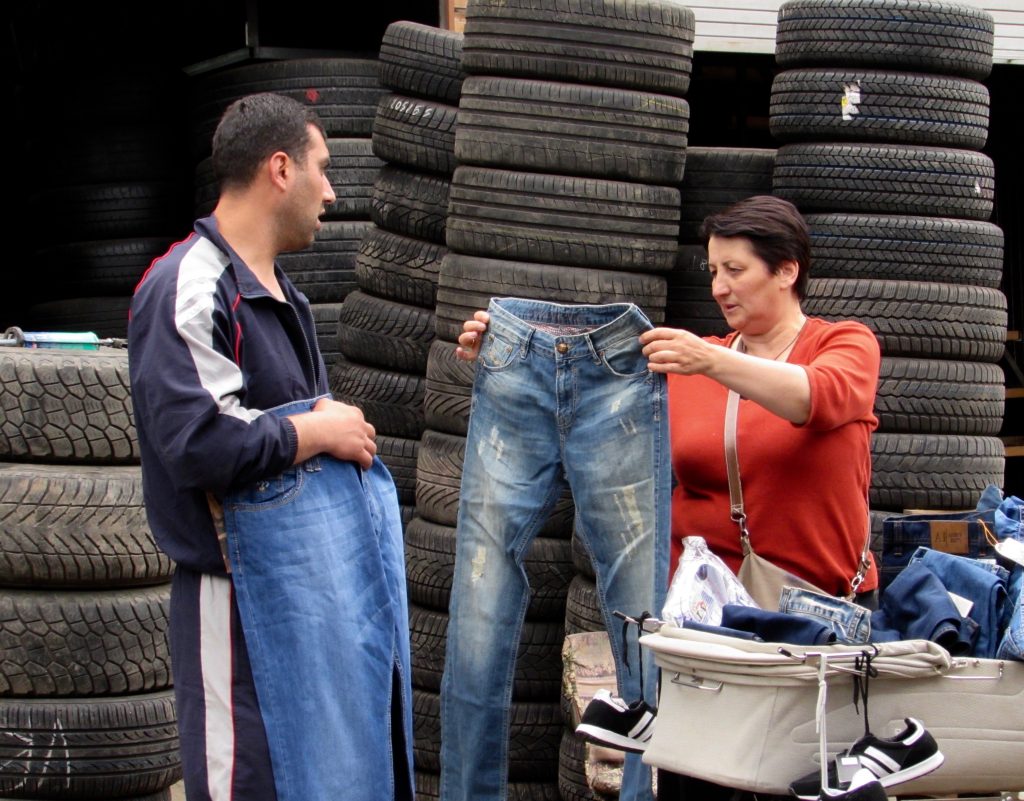
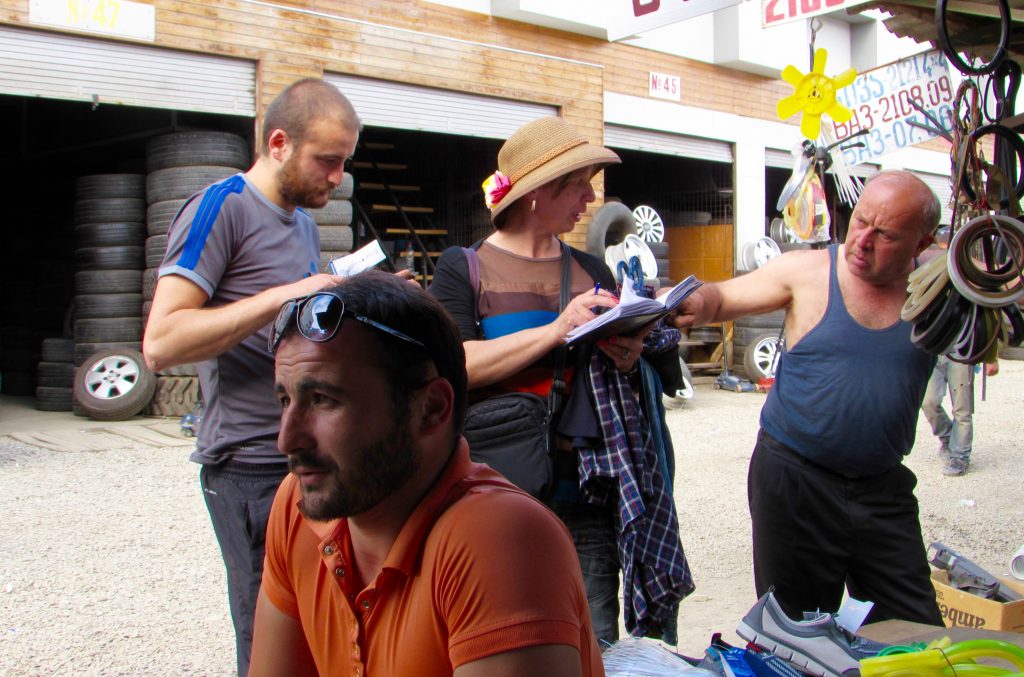
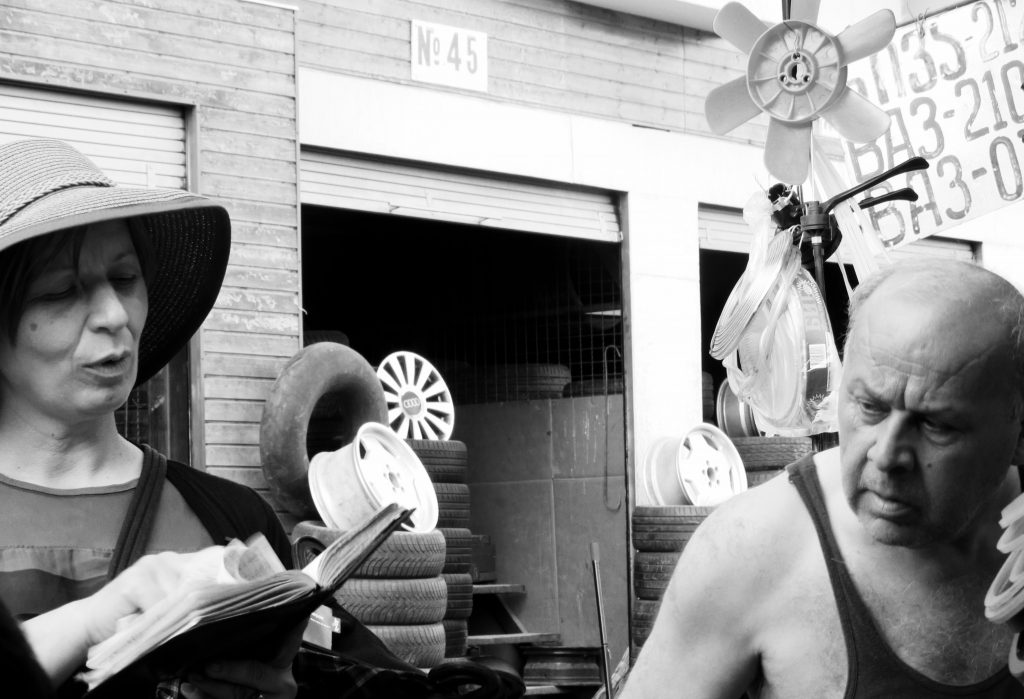
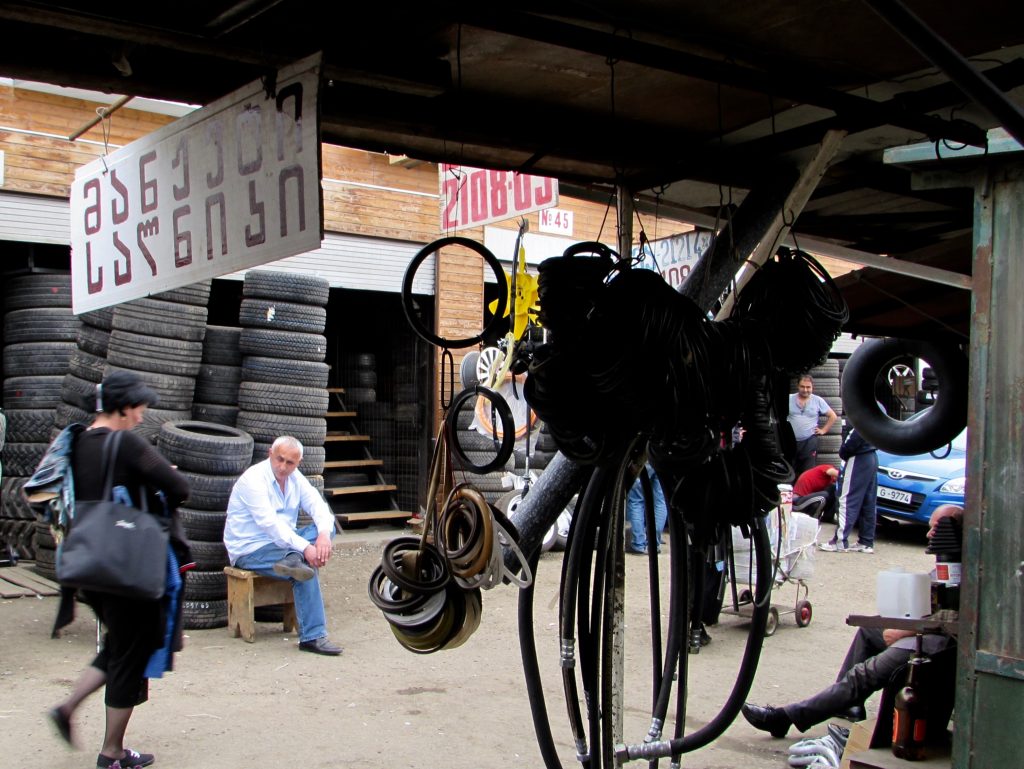
Other Mobile Sellers
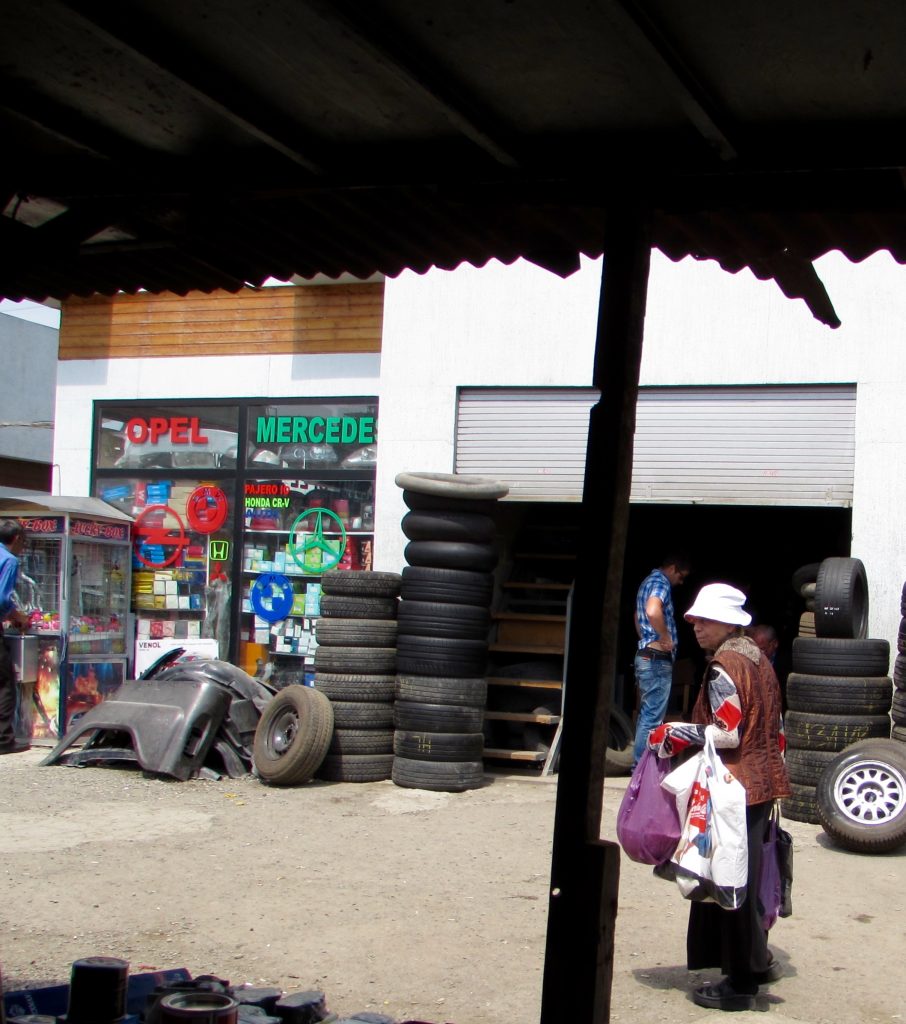
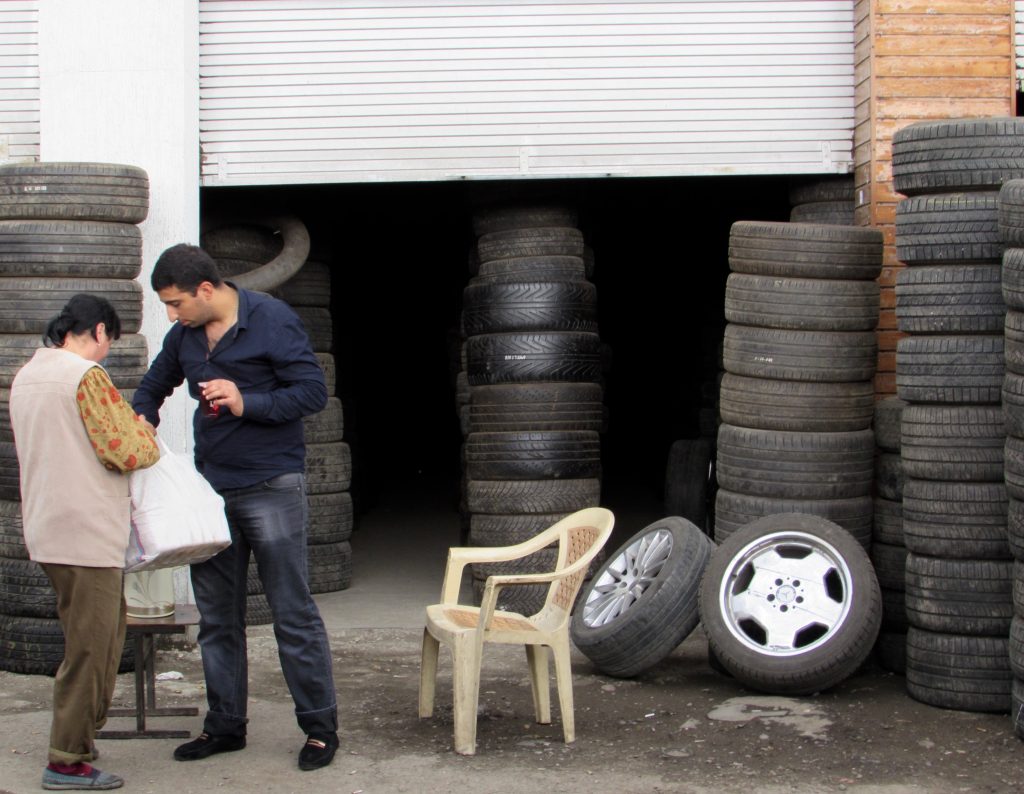
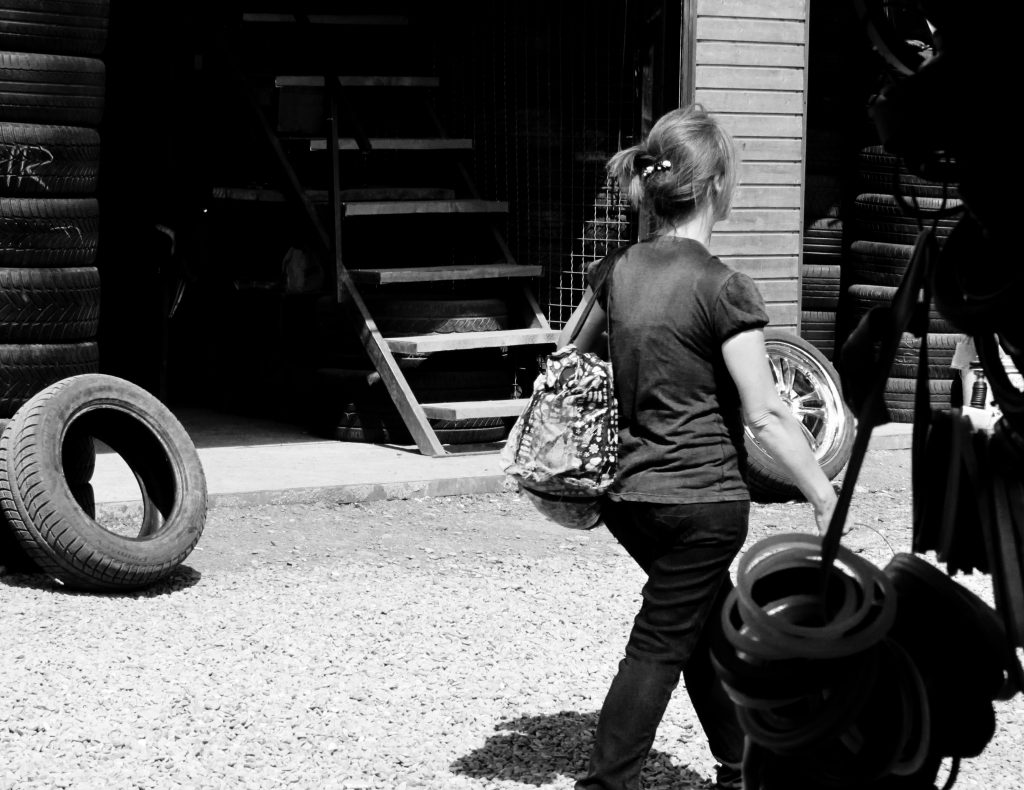
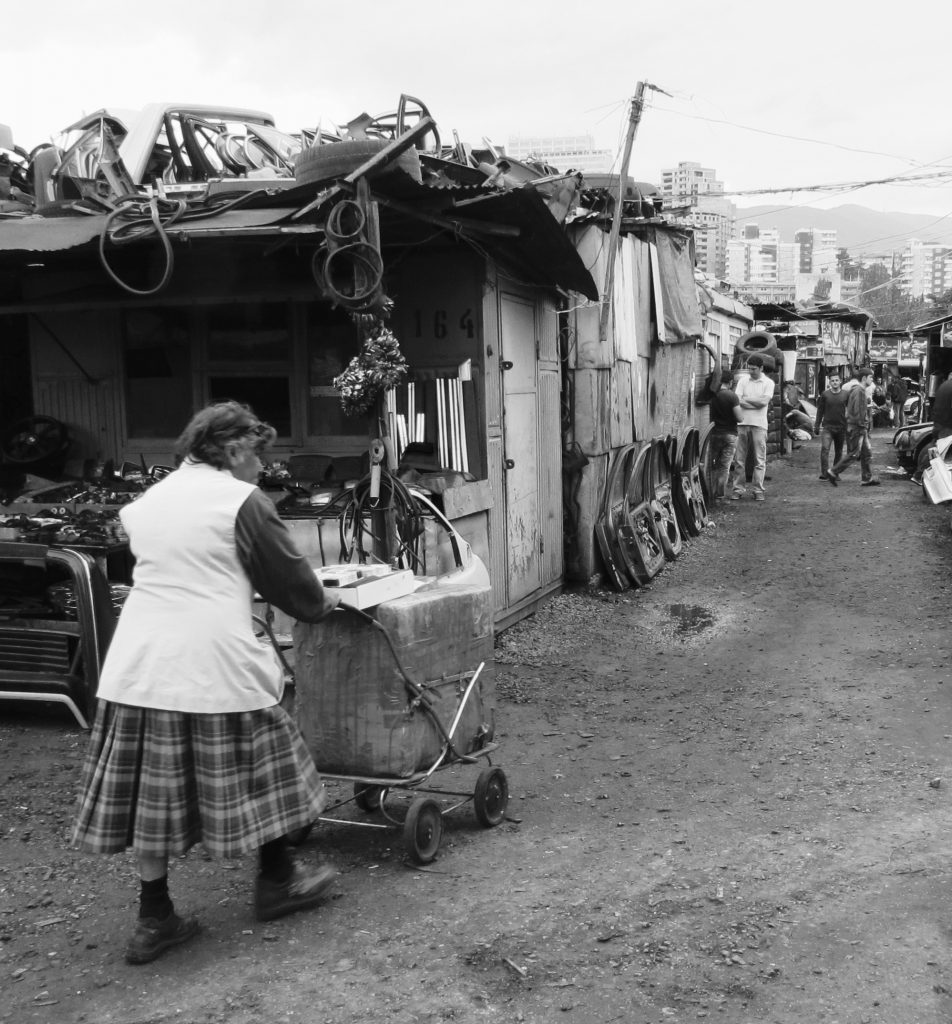
Transnational Mobility of Customers
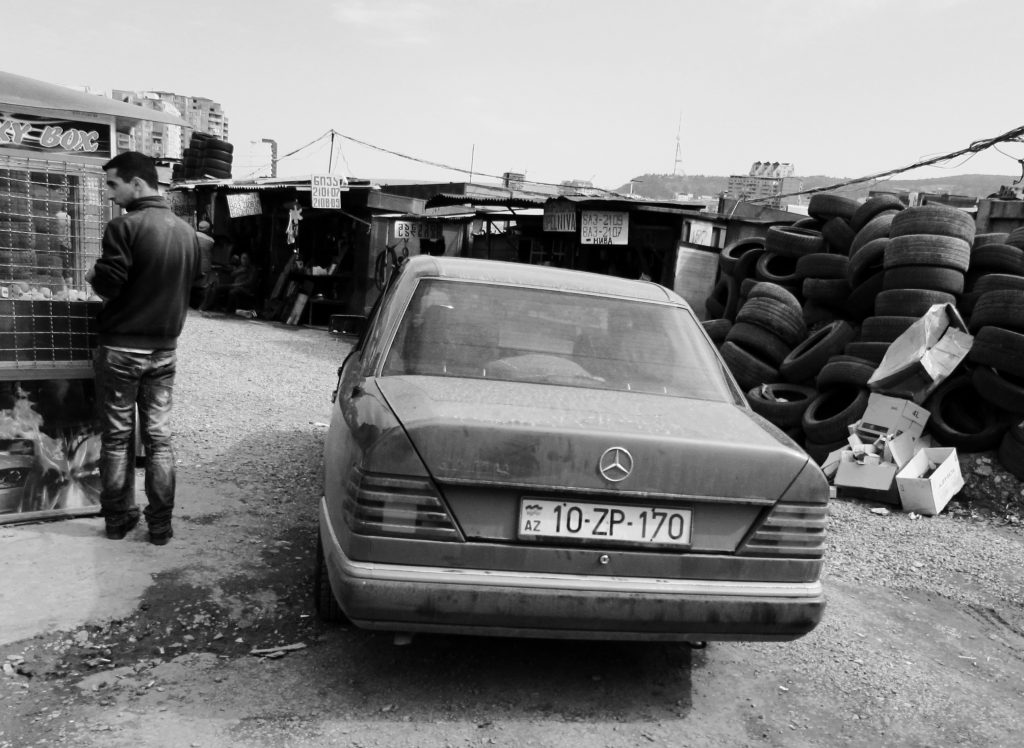
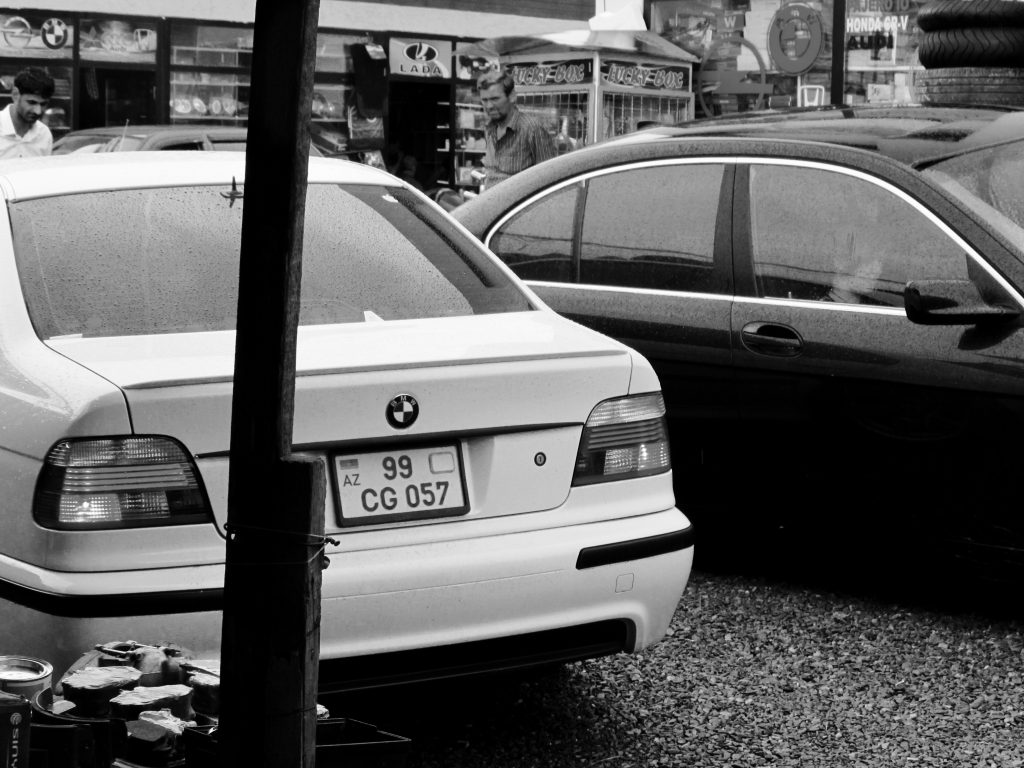
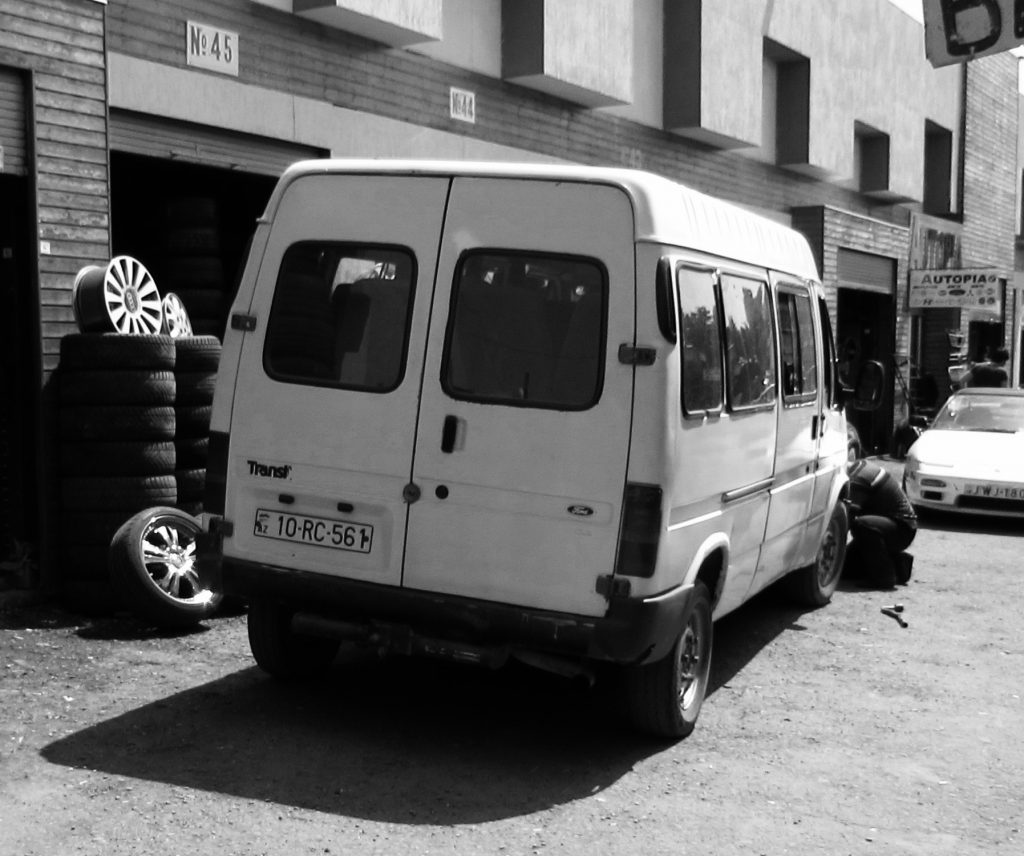
Mobile Between Europe and China
Car owners come to this part of the market to change their old tires with second-hand tires brought from Europe. It is said that he old tires, like those in the corner, are sent to China.
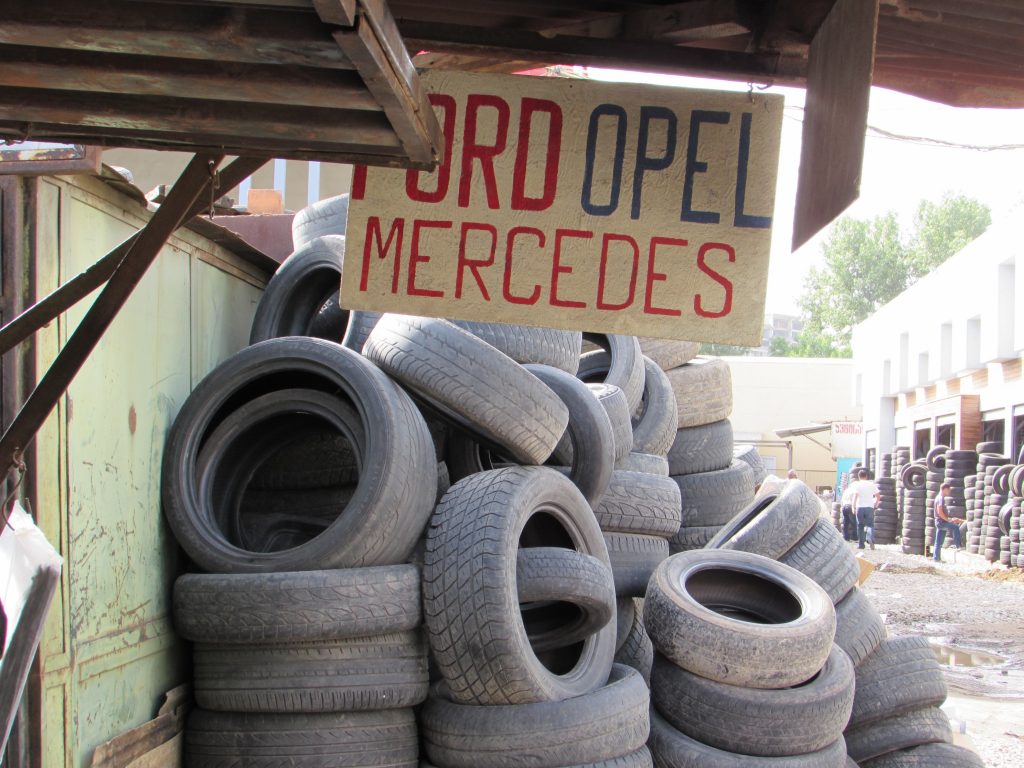
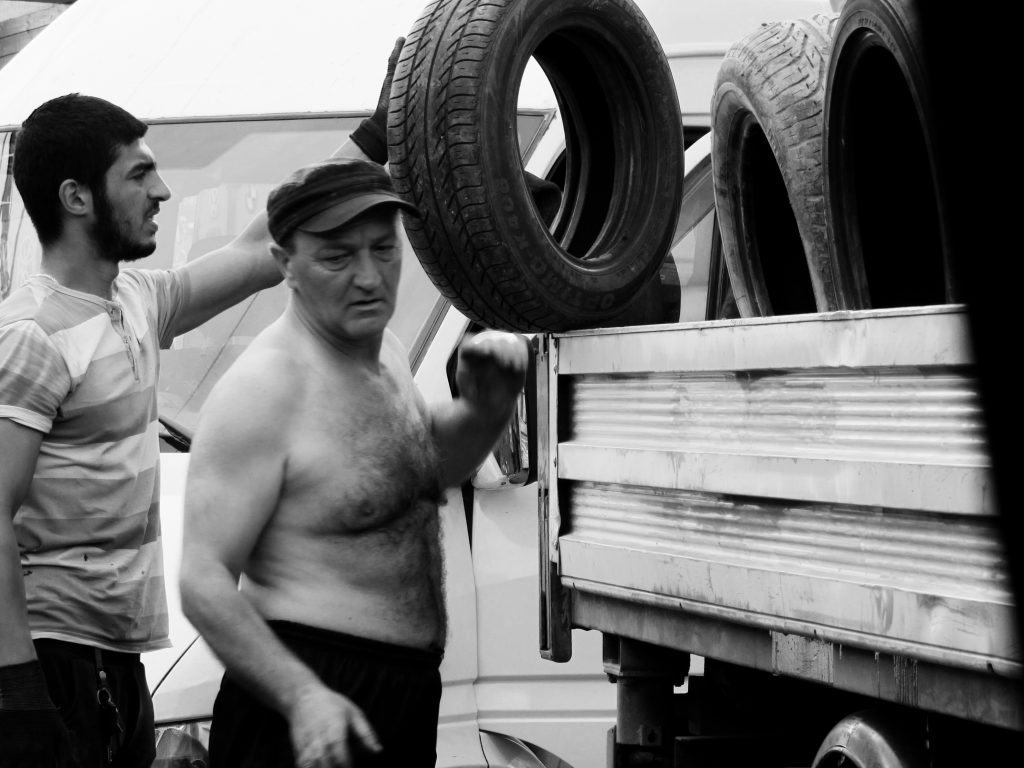
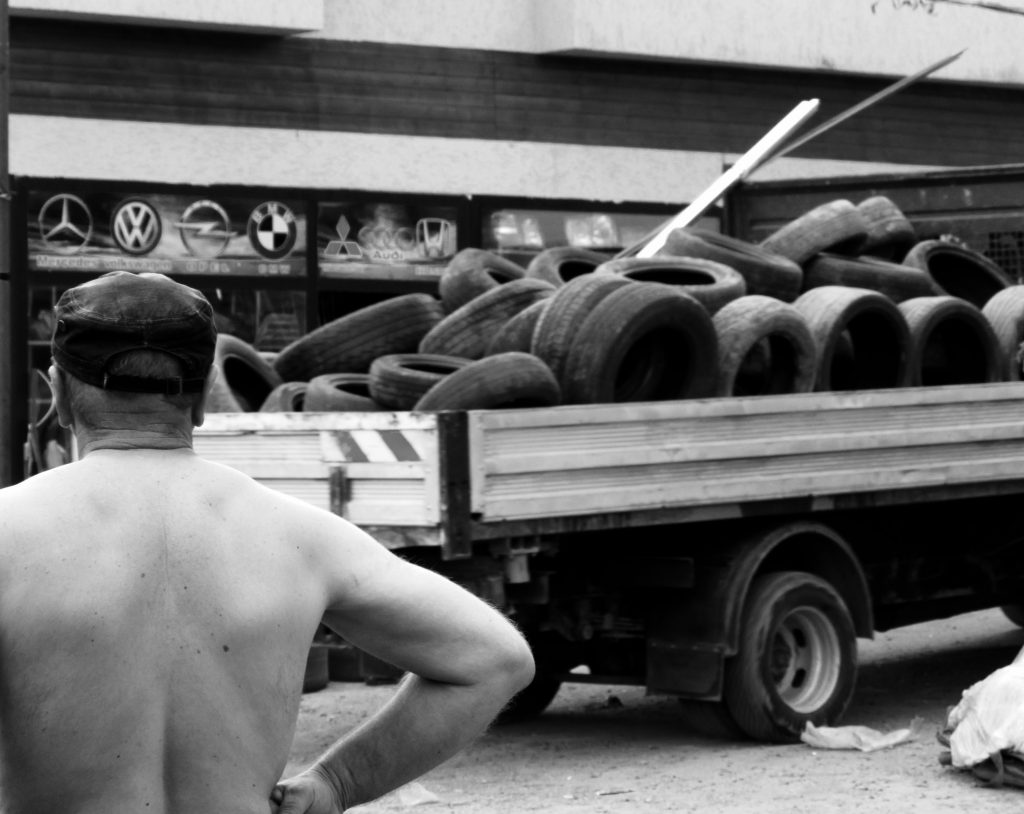
Workplace Friends
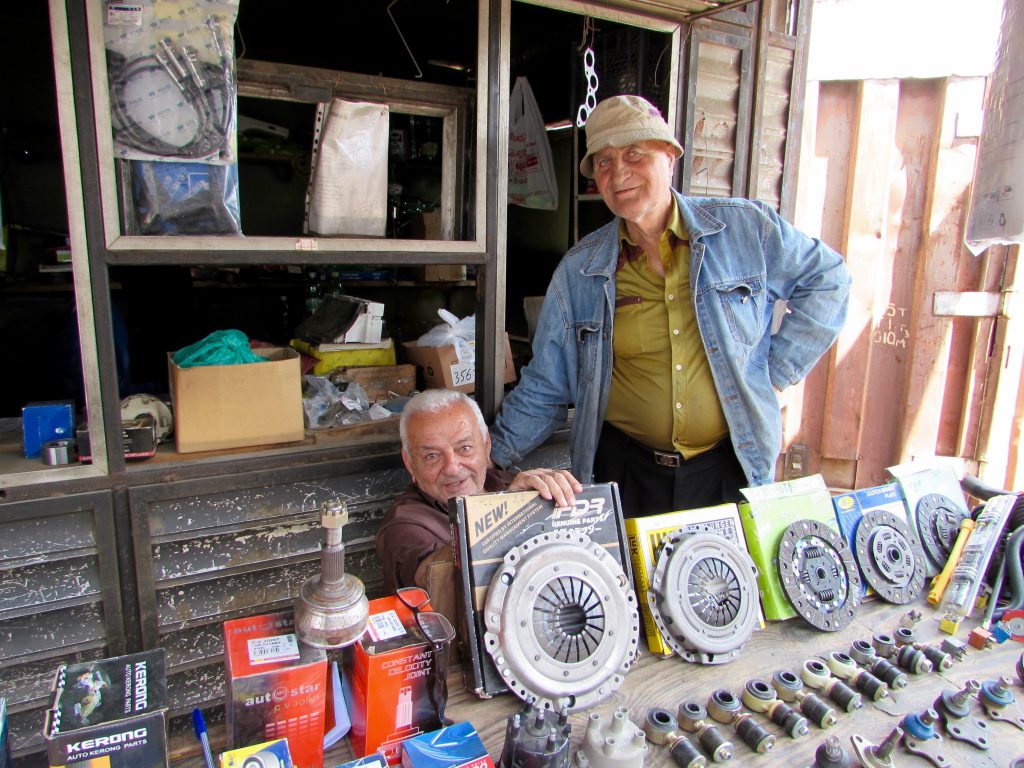


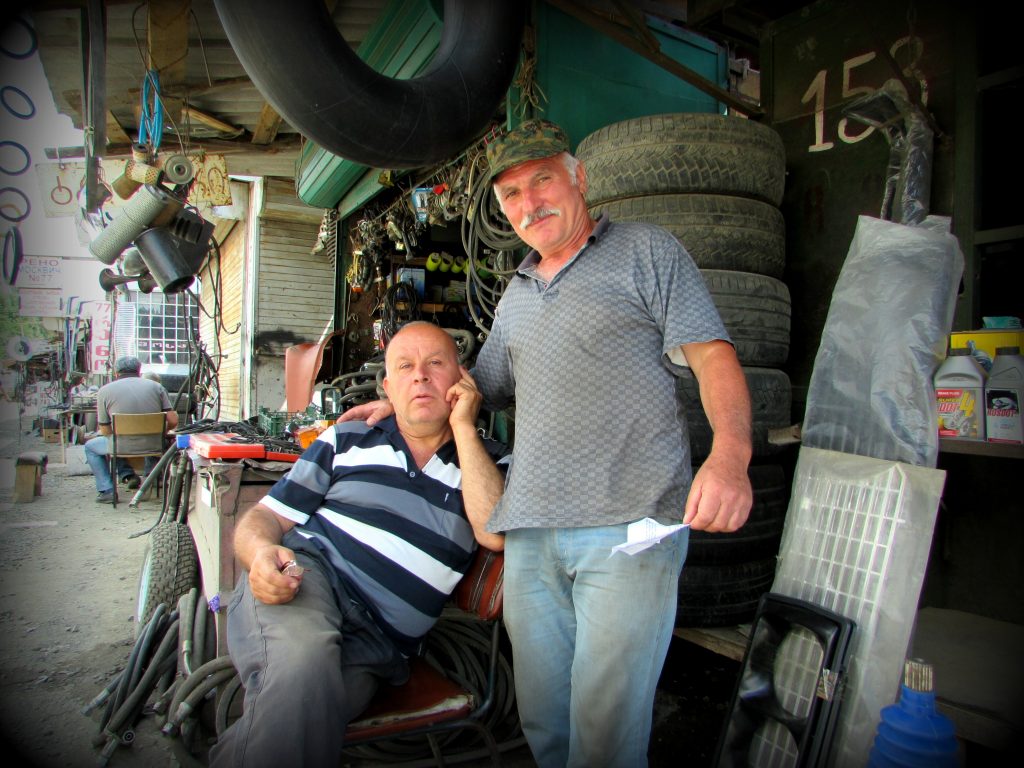
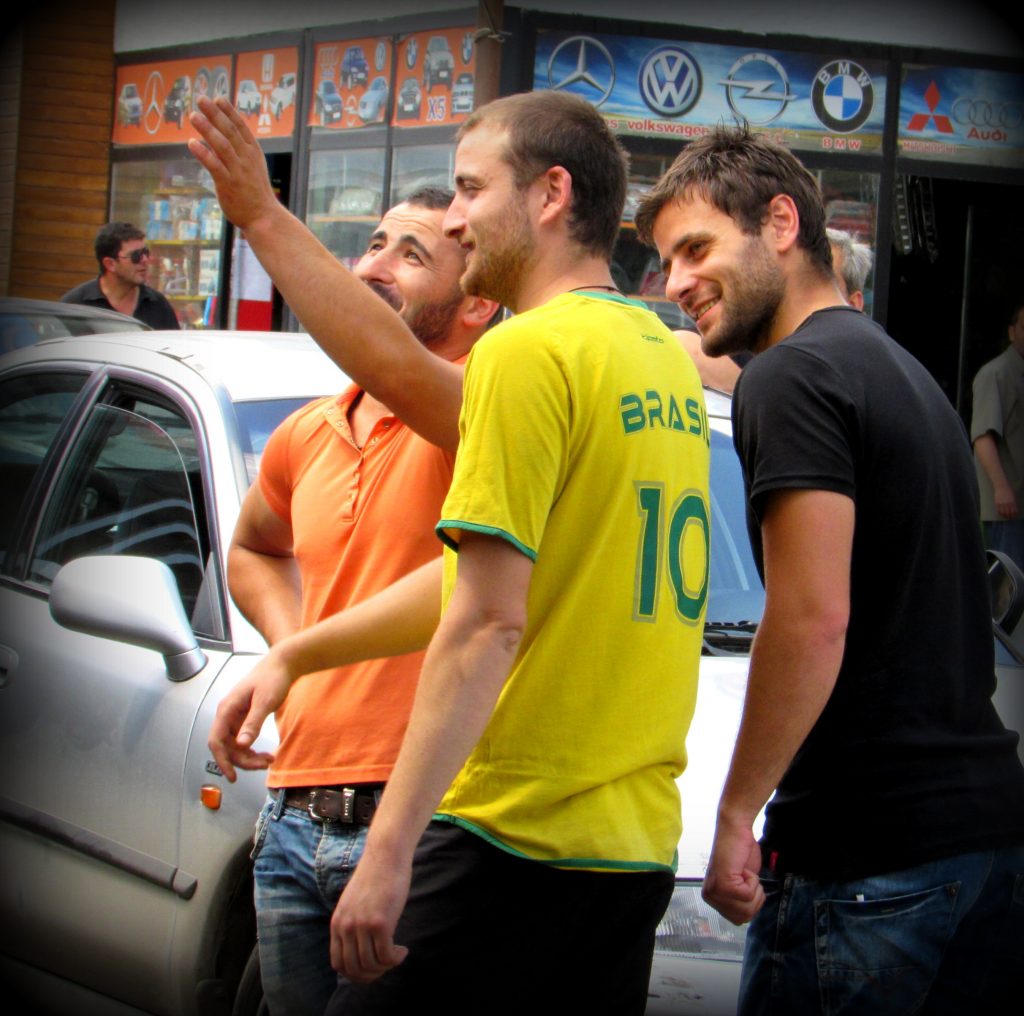
PLAY, PRECARITY, AND PRODUCTION OF HETEROTOPIC SPACE
“The games children play
In the same year as the publication of The Order of Things, Foucault gave a talk on the radio channel ‘France Culture’ as part of a series on utopia and literature. In the talk, Foucault rather playfully reflects on the possibility of studying systematically a range of ‘different spaces’ that somehow challenge or contest the space we live in. The focus is now on cultural and social sites rather than textual spaces. The broadcast (Foucault, 2004 and 2009a) is fascinating as it follows the same shape as the later better known lecture, but with some distinctive features both in content and style. His opening illustrations of the concept refer to various children’s imaginative games, mentioning Indian tents and dens in gardens as well as all the games played on or under the covers of the parents’ bed: These counter-spaces ……. are well recognised by children. Certainly, it’s the bottom of the garden; it’s the Indian tent erected in the middle of the attic; or still, it’s … on their parent’s bed where they discover the ocean, as they can swim between the covers, and the bed is also the sky, or they can bounce on the springs; it’s the forest as they can hide there; or still, it’s night as they can become ghosts between the sheets and, finally, it’s the fear and delight of their parents coming home……. (Foucault, 2009a – own translation The children’s inventive play produces a different space that at the same time mirrors what is around them. The space reflects and contests simultaneously.” Peter Johnson, Brief History of the Concept of Heterotopia, 4
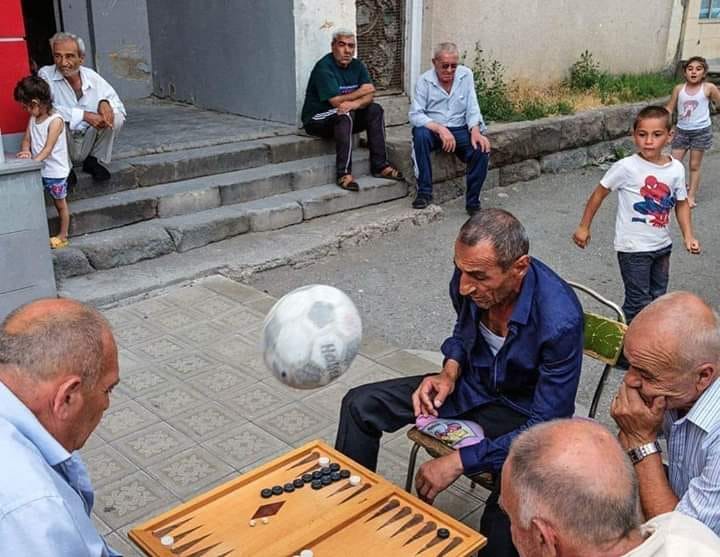 Source: Turcomaniaball page on FaceBook
Source: Turcomaniaball page on FaceBook
Nardi (backgammon)
Playing Nardi Im/Mobilities
Nardi is a popular board game in the Caucasus, and countries around that region.
It is a game that is played by males in urban public spaces (like markets, parks, sidewalks, street corners) by those whose work time is filled with long periods of waiting for customers, or those who are retired. It is also played at homes, in rooms and courtyards.
It is an ancient game, similar boardgames have been found by archaeologist in the Mesopotamia (Ur) and south eastern Iran (Burnt City).
It is considered to be the classic game of skills plus chance, and thus representing real life more than chess.
It is a game played by two, but others join as involved audience.
In the market it is played by neighbors-friends; those who work in shops or stalls situated close to each other.
Playing nardi (or observing it played and occasionally participating) forms a particular punctuated and varied time-period of “play/leisure/social activity/waiting-for-work” that is part of the workday of those involved.
Not everybody at the market plays nardi. Some play more than others, and there are some who don’t play at all.
There are people who are interested in other board games, like chess or dominos.
People at the market do not bet playing nardi (or table boards). Monetary transactions are not involved in these game/play activities.
During the play the bodies of the players (and even spectators of the game) get closer to each other. Playing nardi has its own form of embodiment, skills/knowledge, and materiality.
Punctuating Work day with Nardi (Play/Leisure)
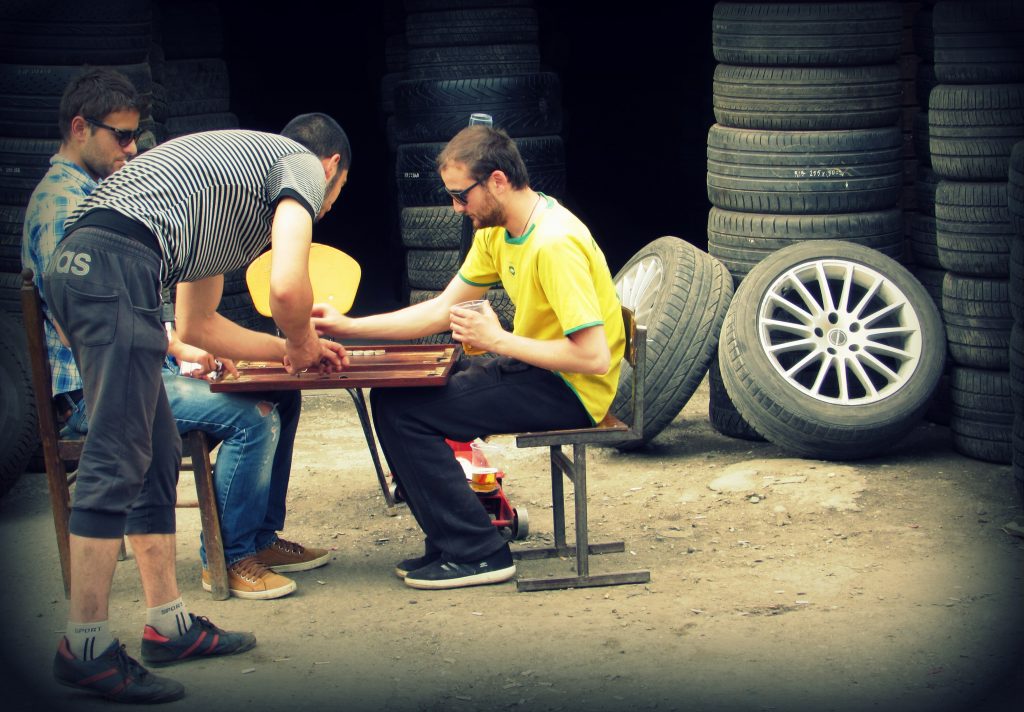
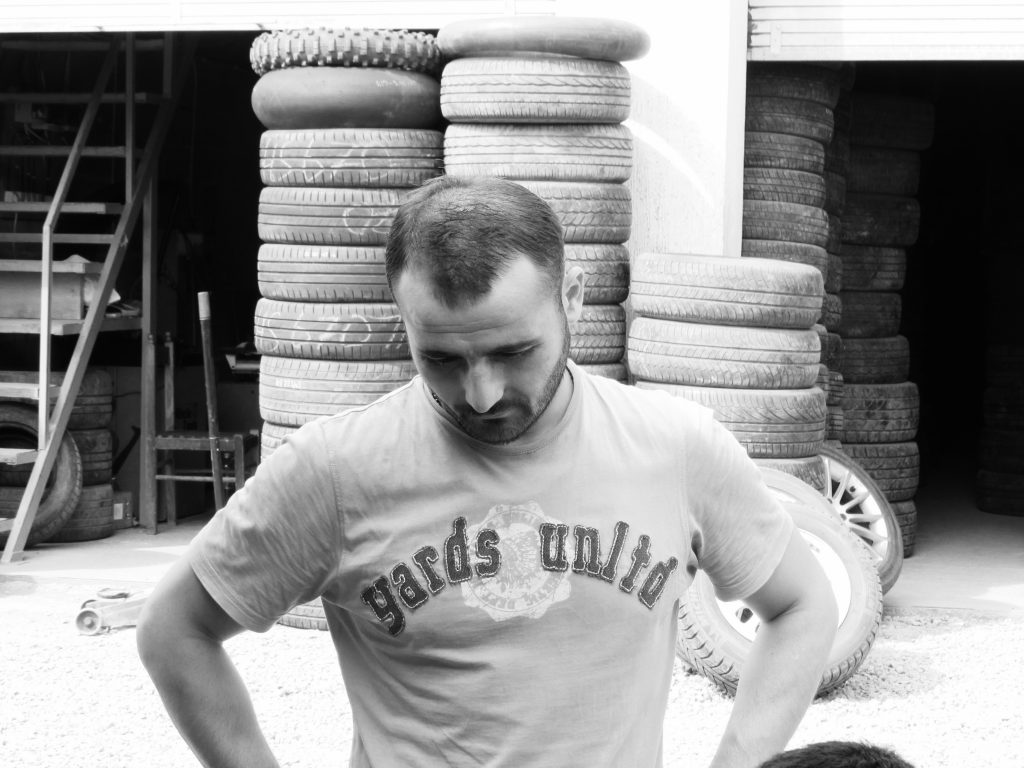
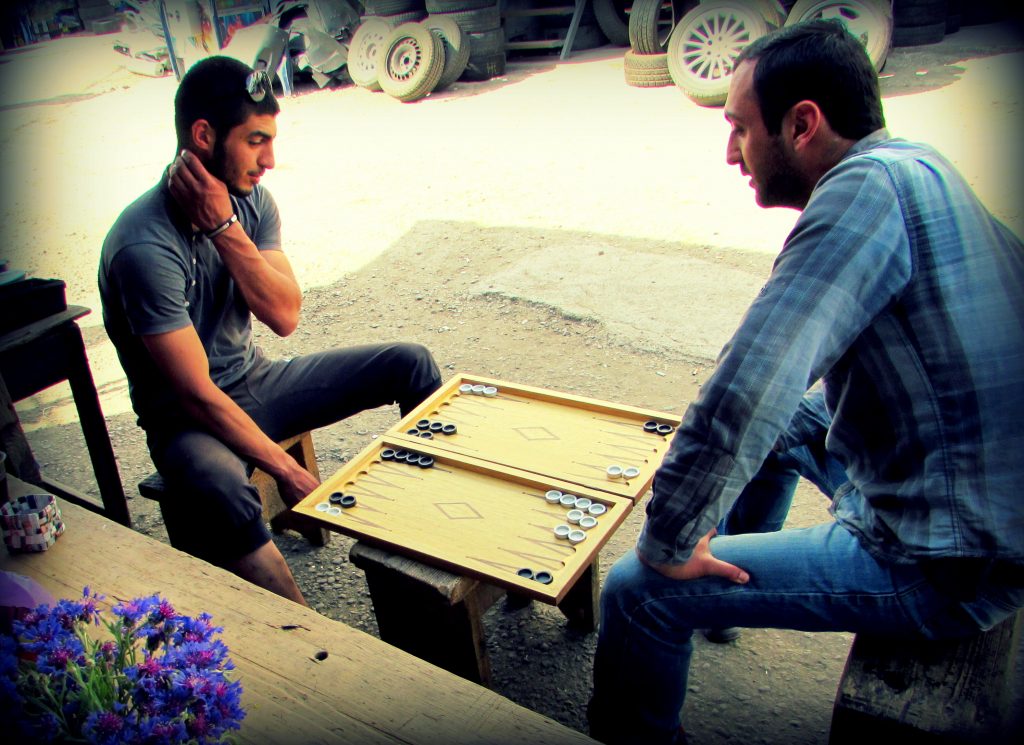
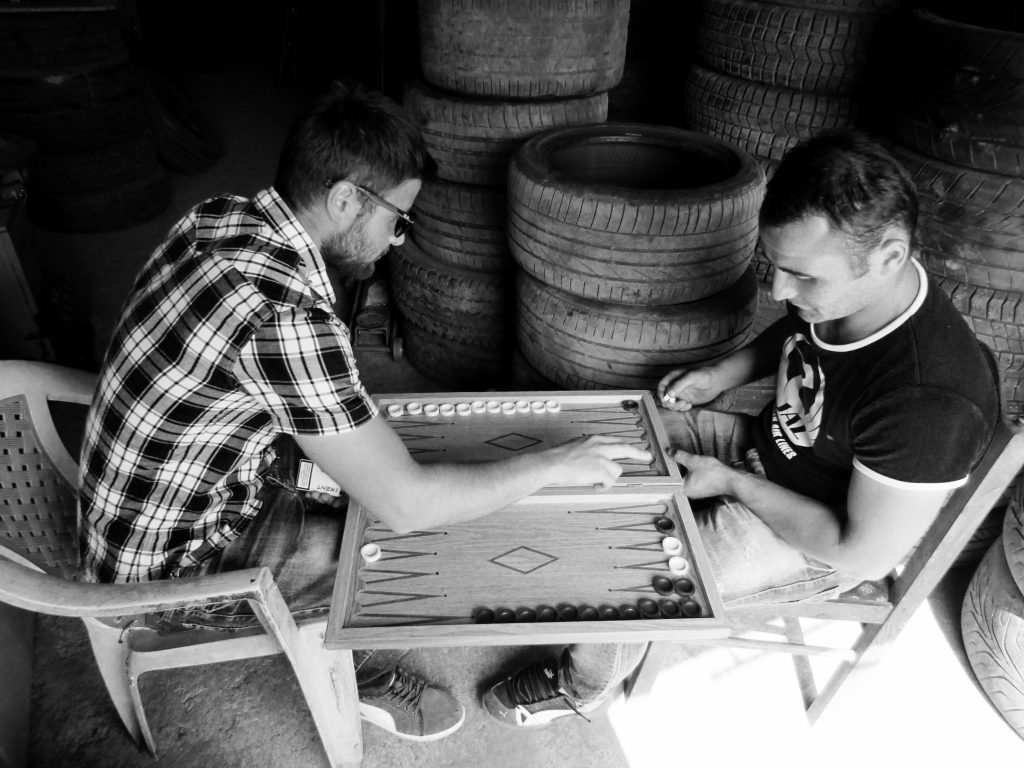
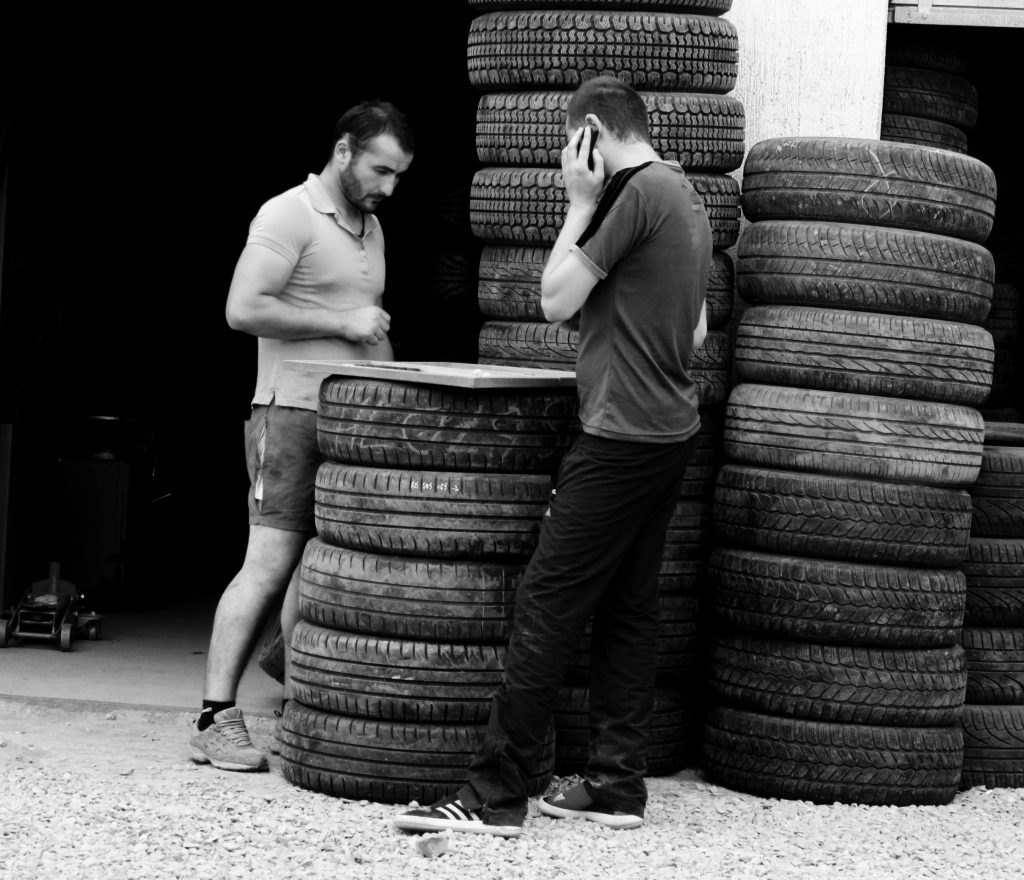
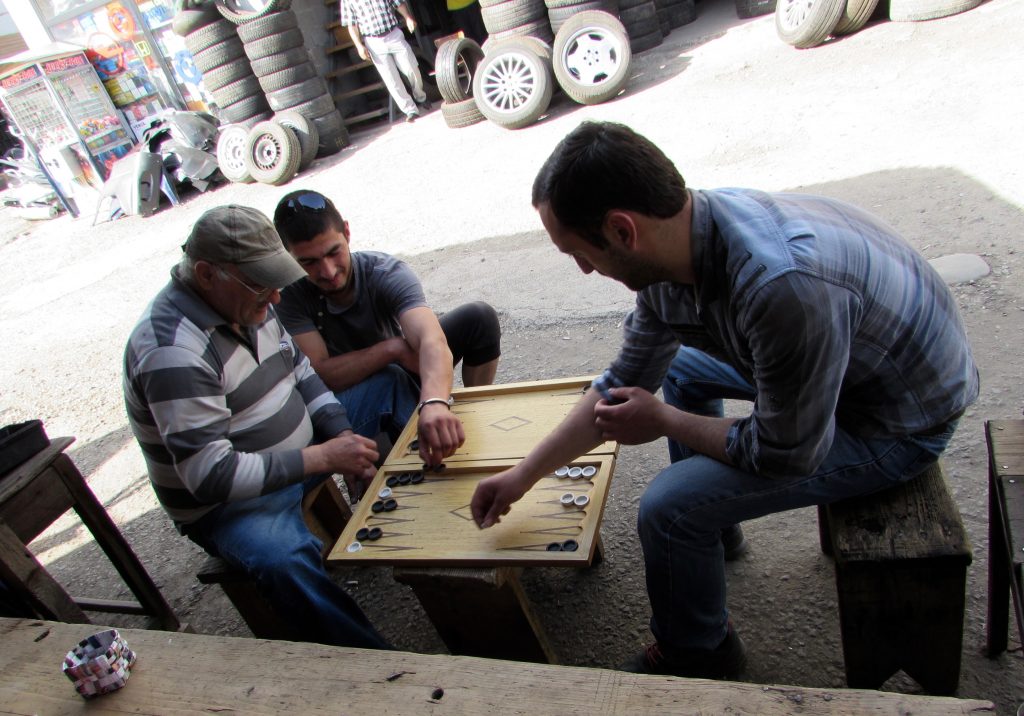
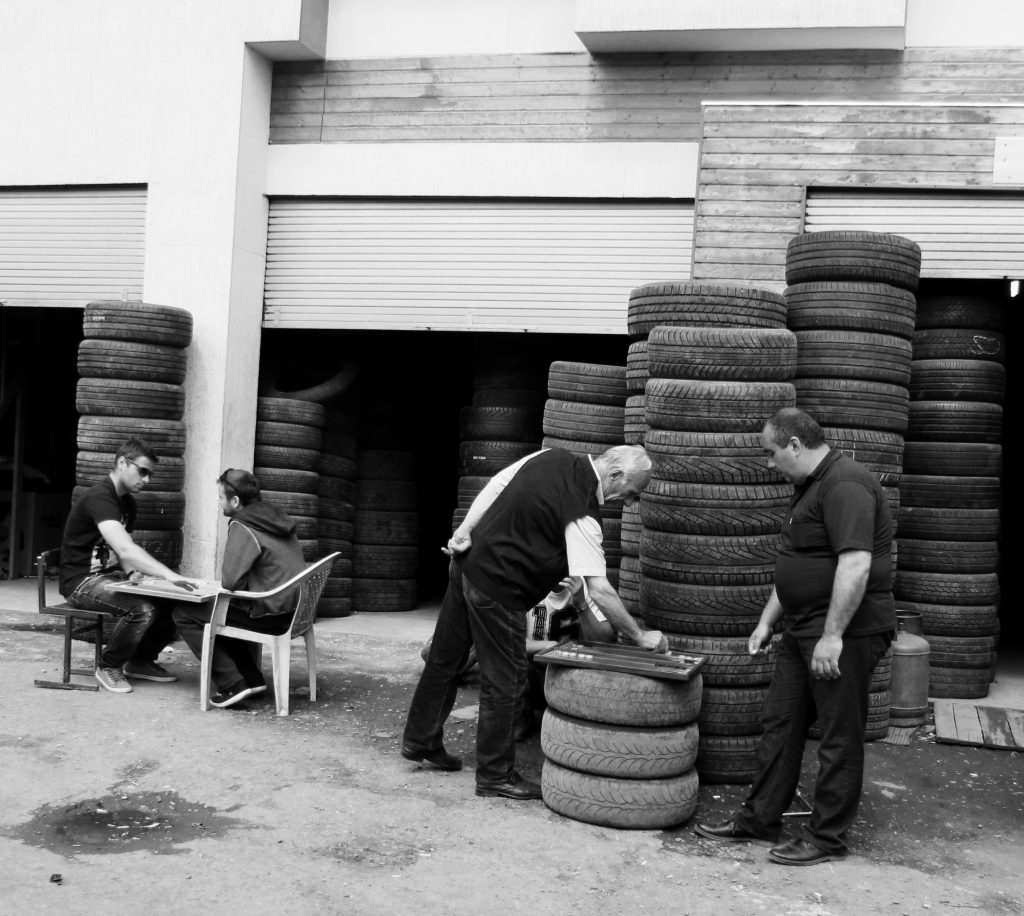
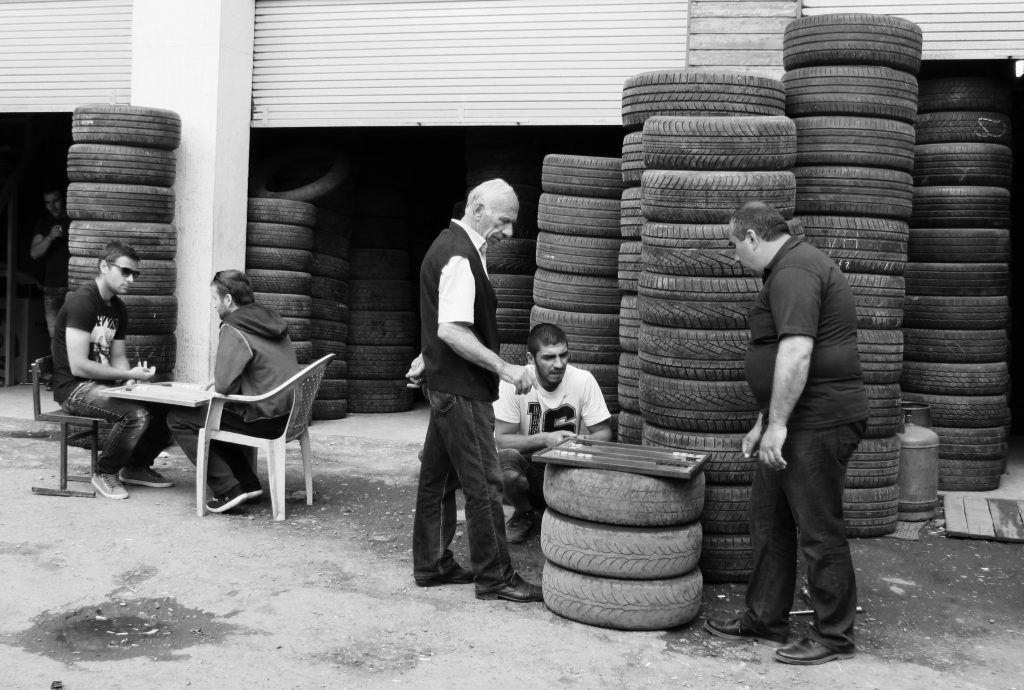
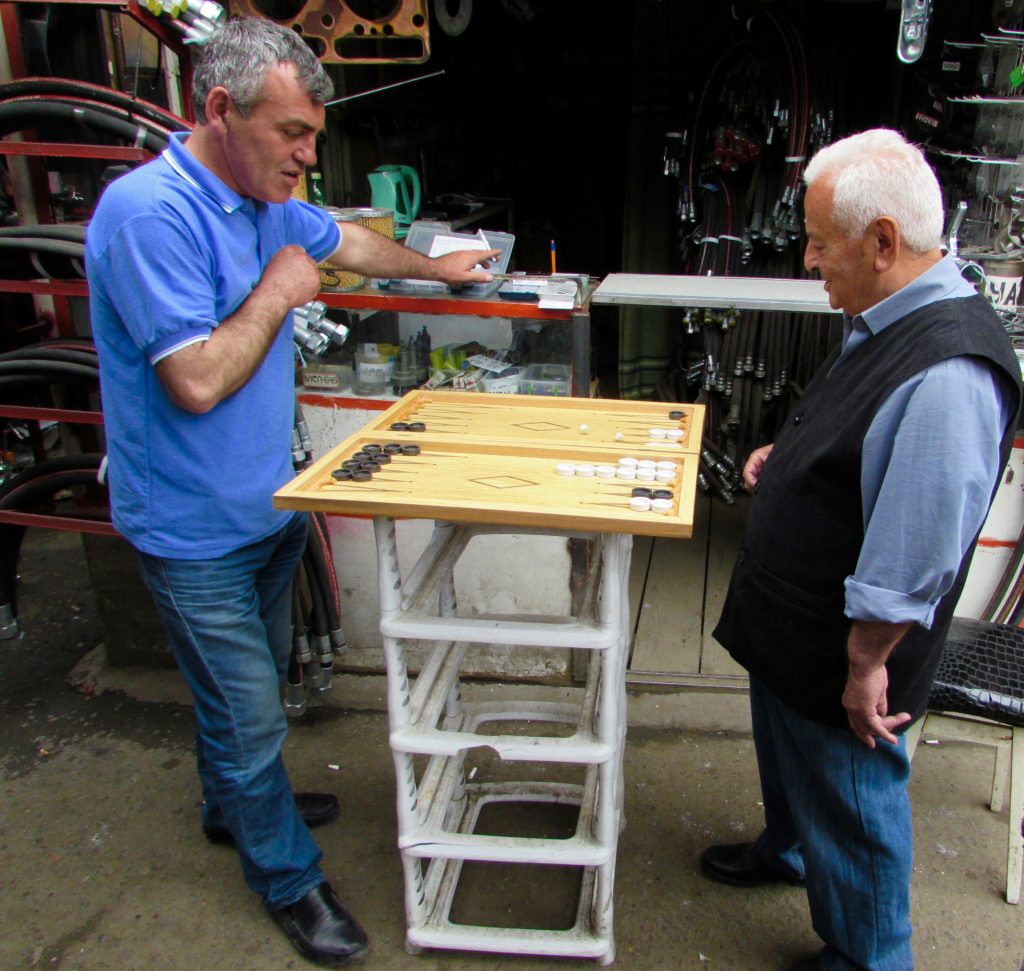
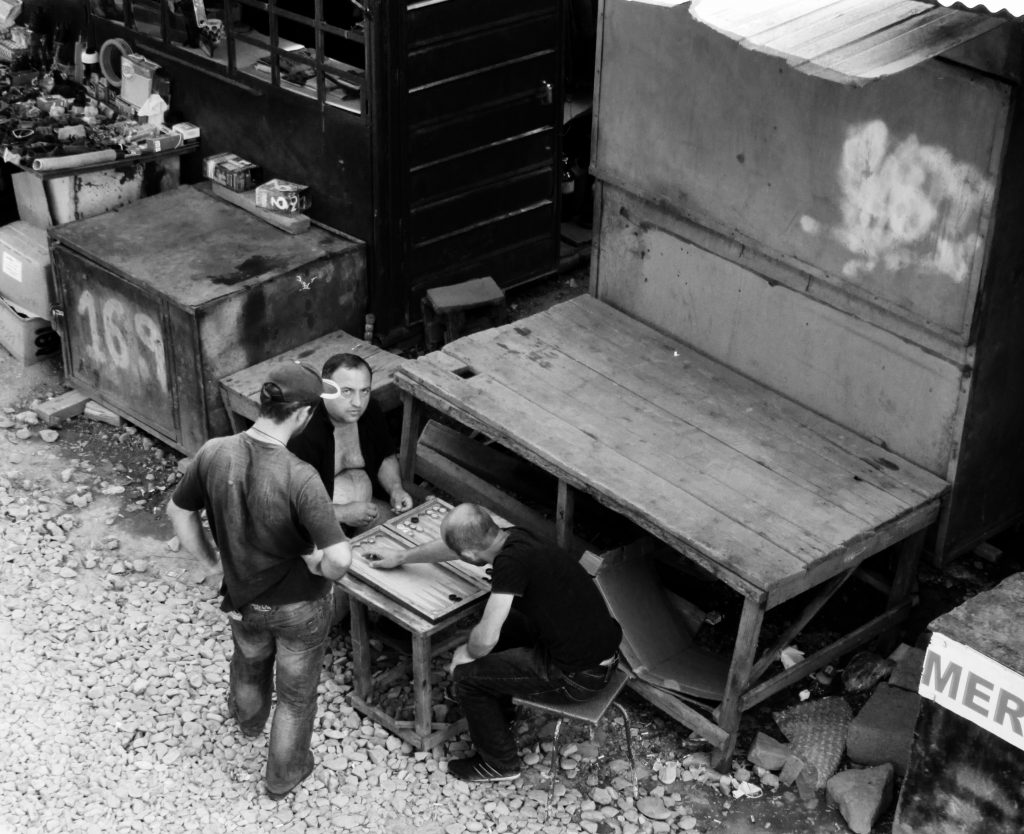
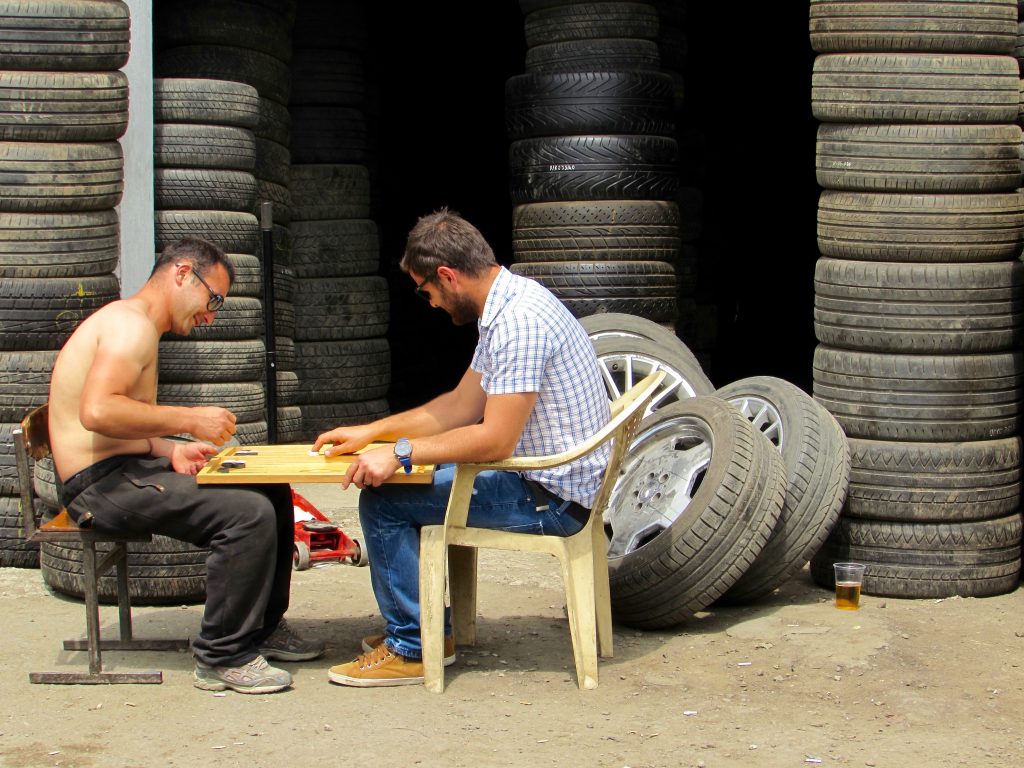
A Supra (Feast) Also Means a Halt in Playing Nardi
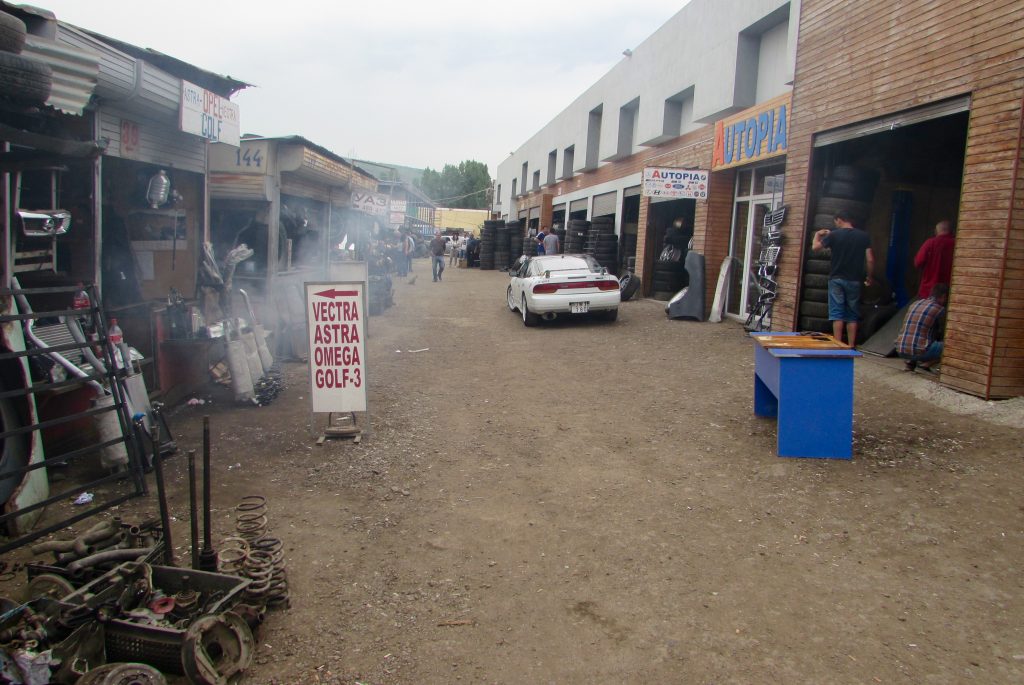
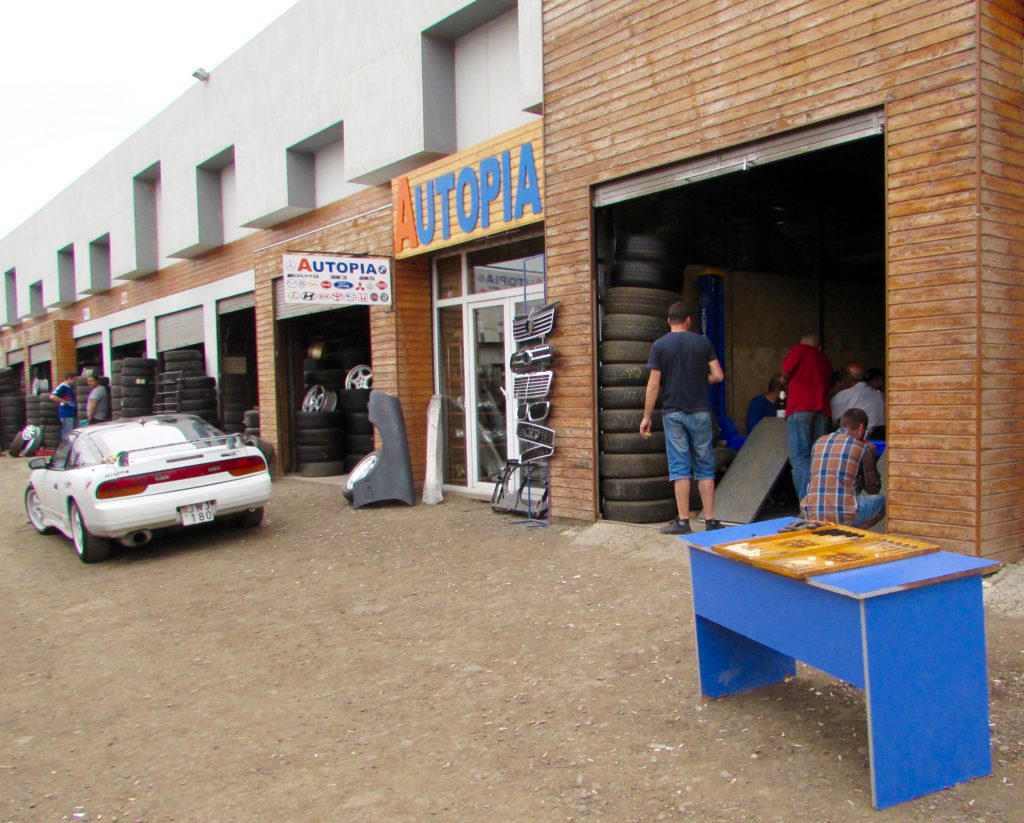
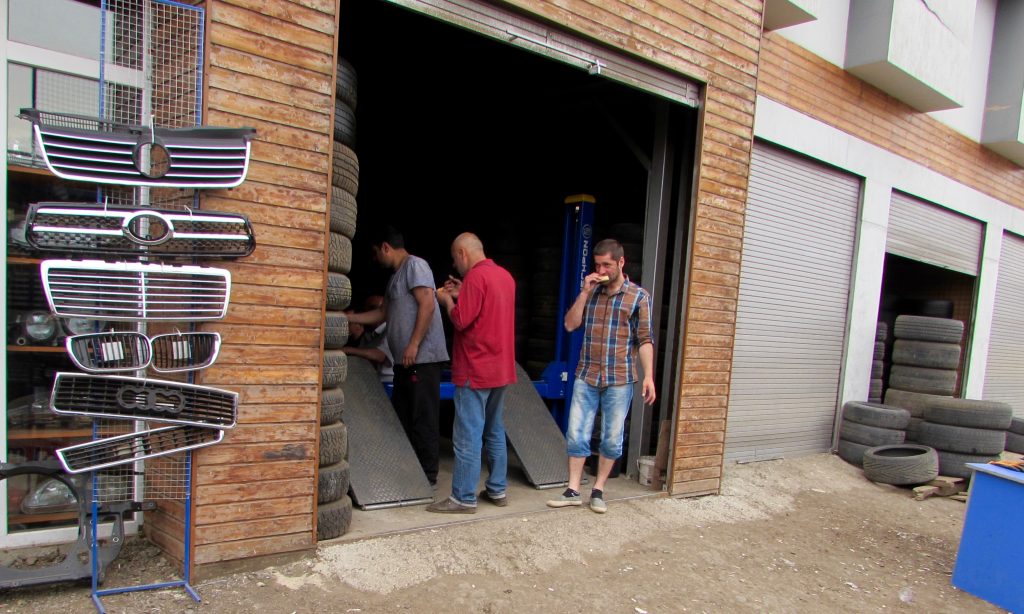
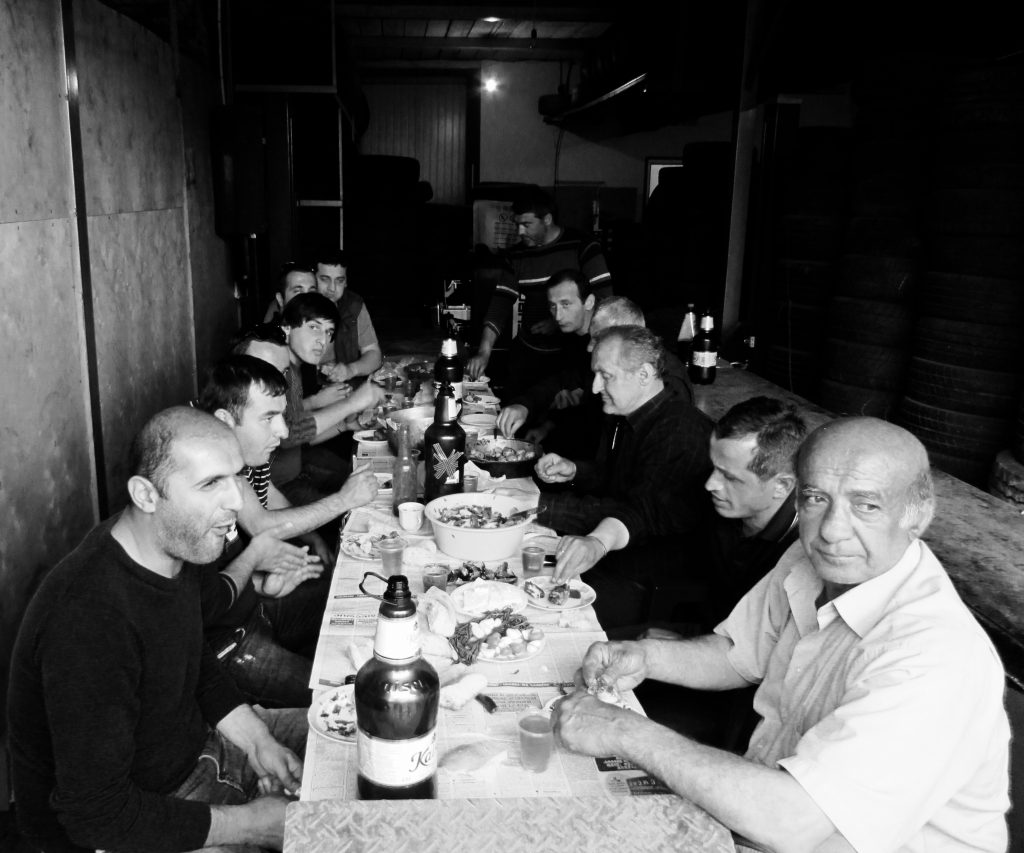
Playing Chess Im/Mobilities
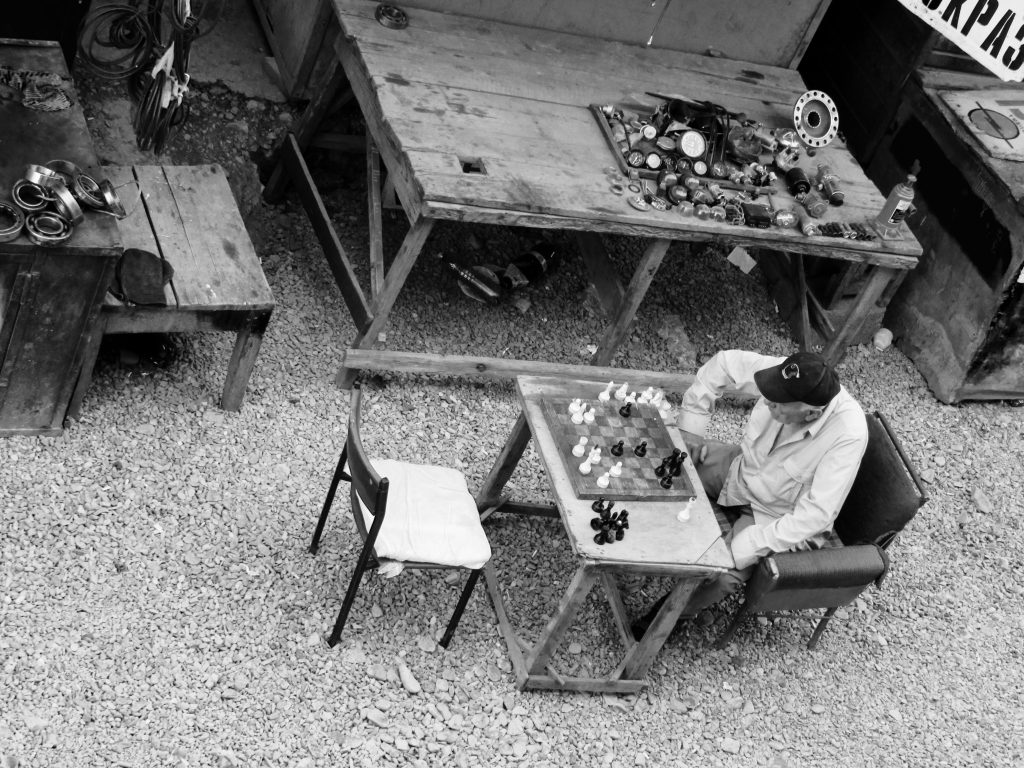
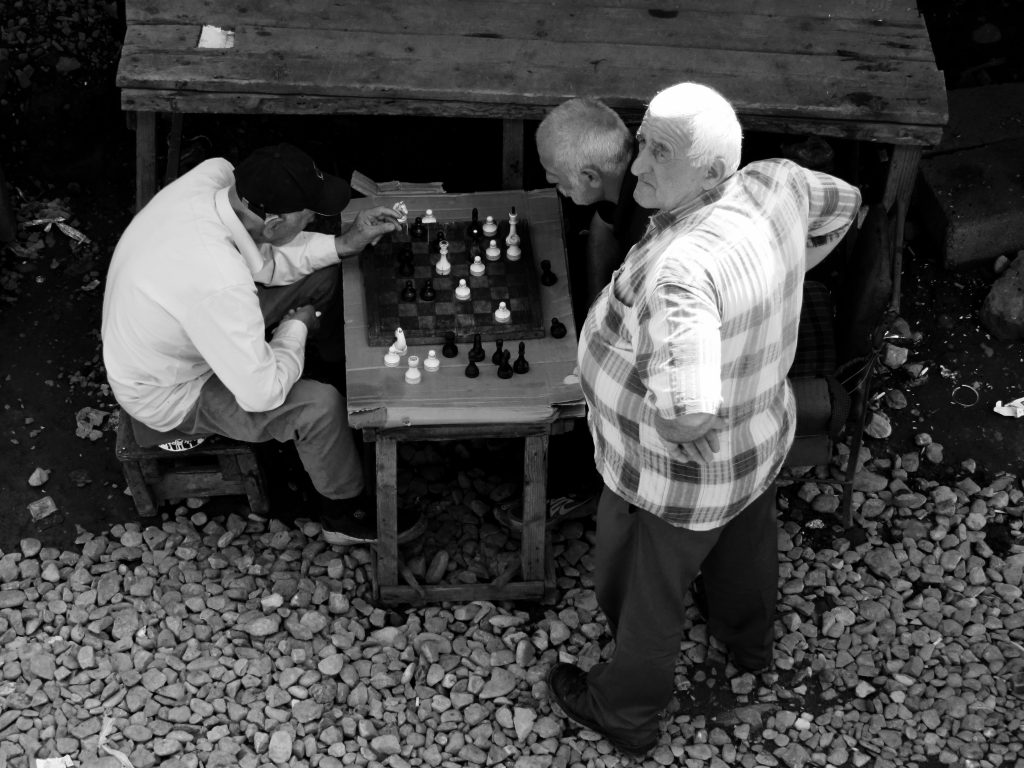
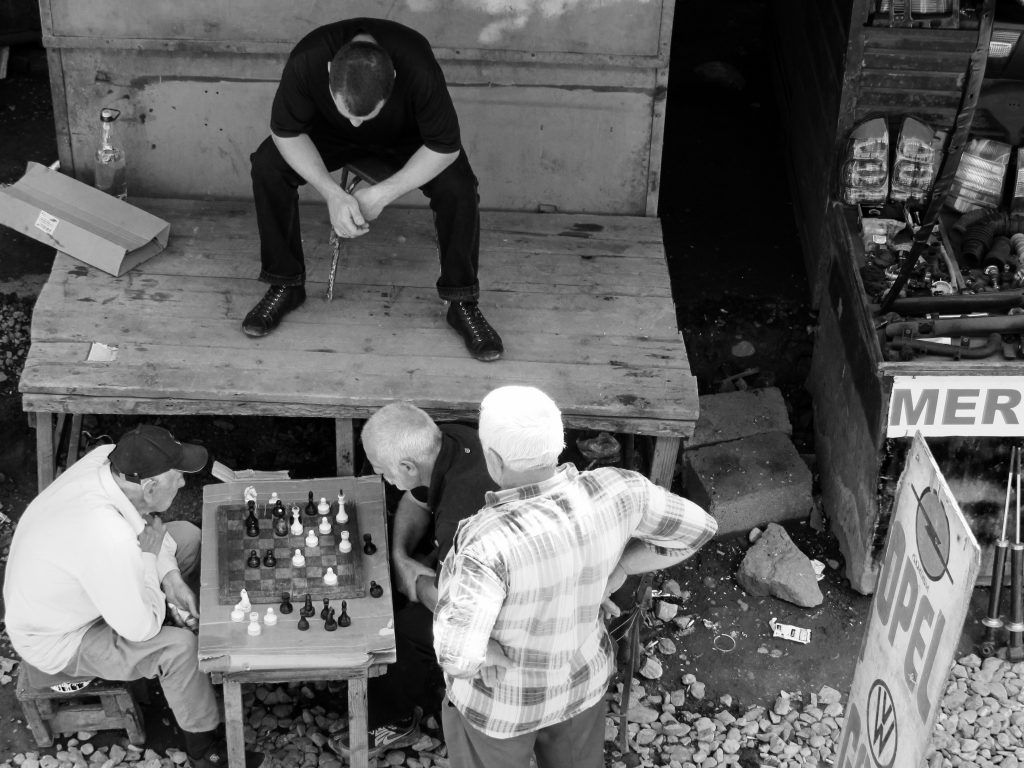
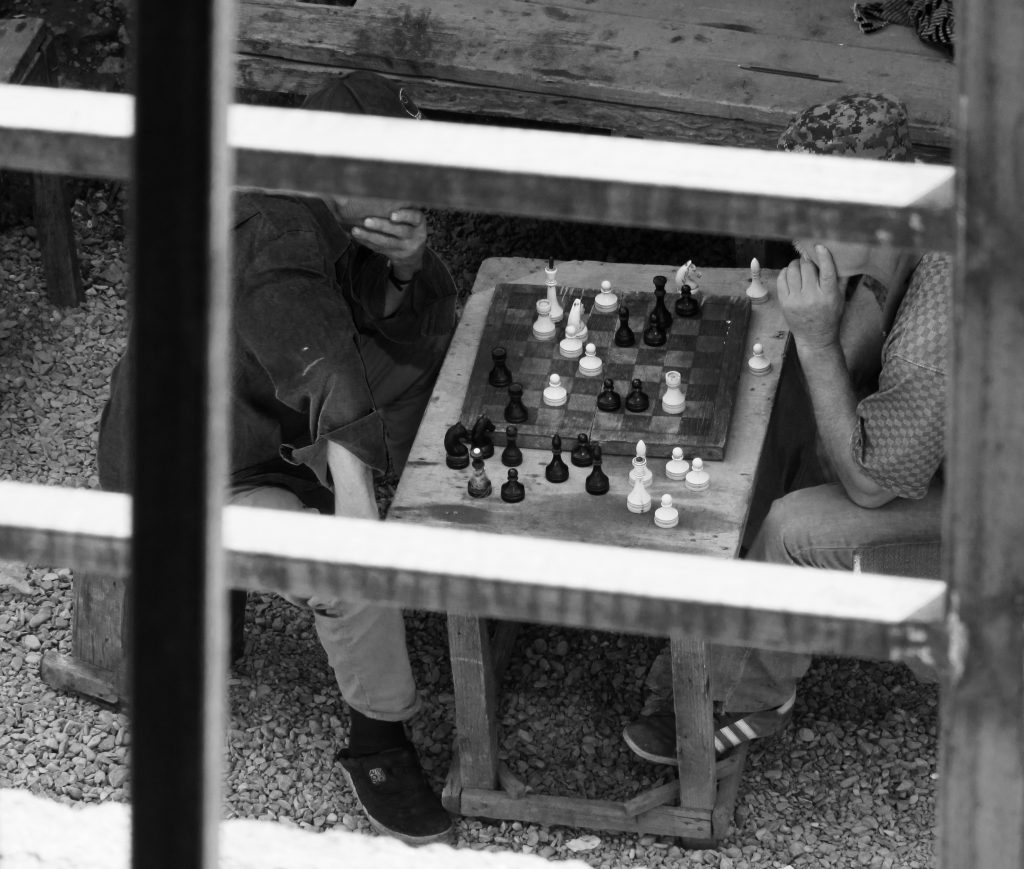
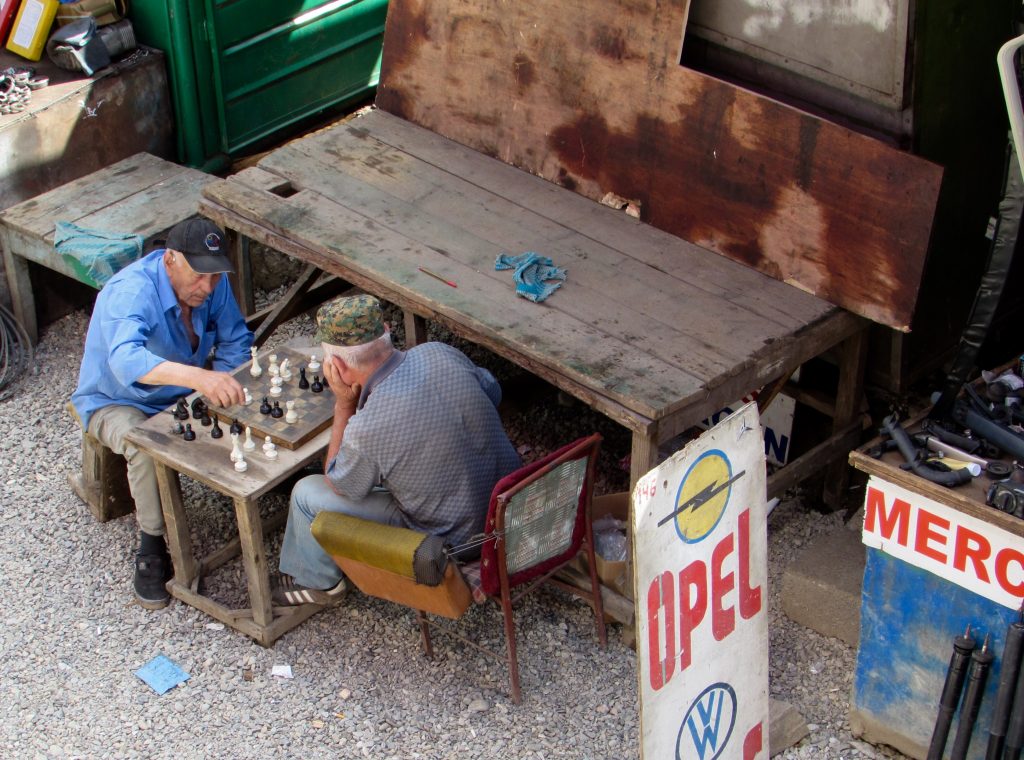
Even when it rains people can find a shelter to play their chess.
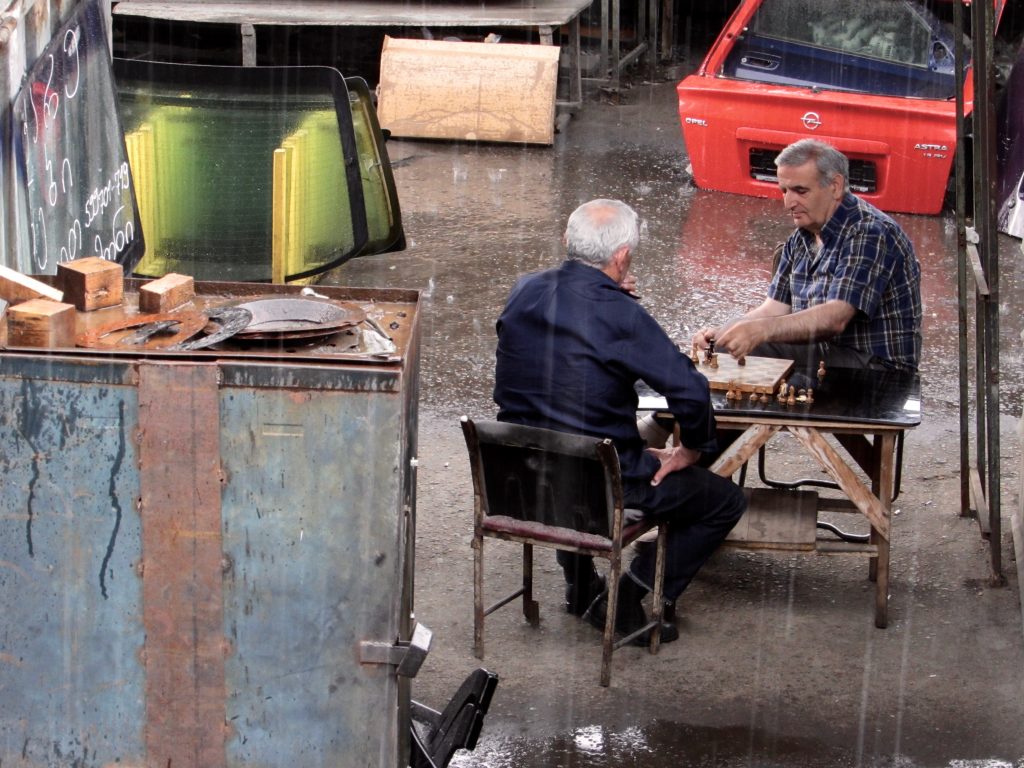
Checkers Im/Mobilities
A new passage (road) is constructed next to the a building under construction, yet the checkers players continue their game next to the working bulldozer.
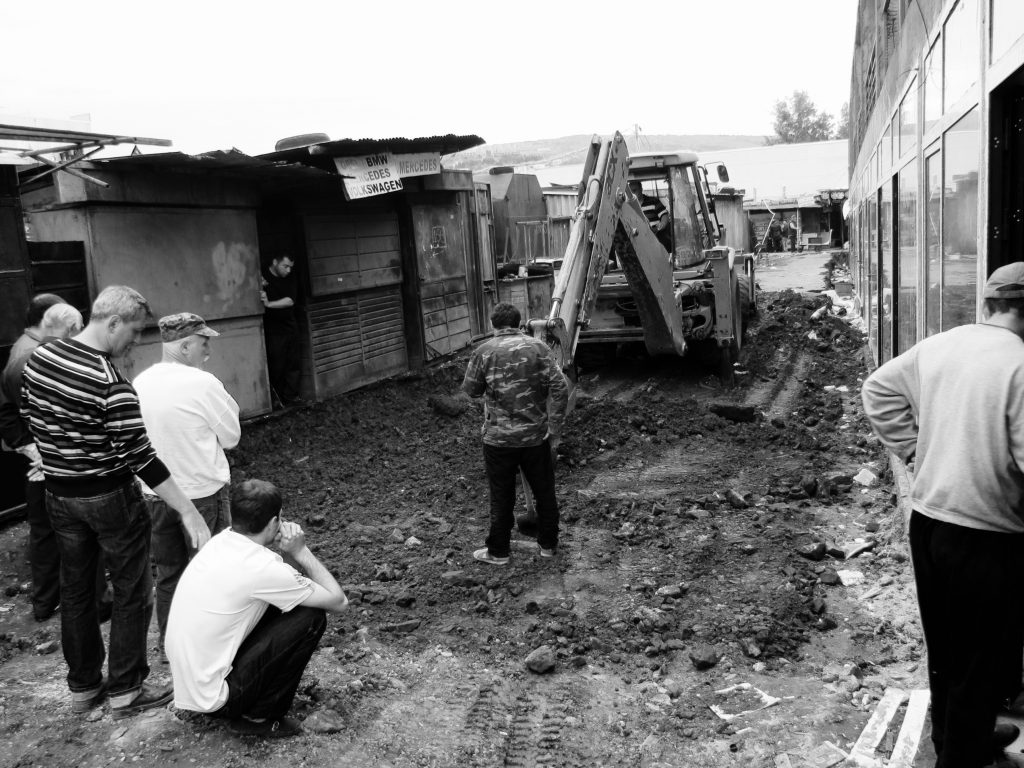
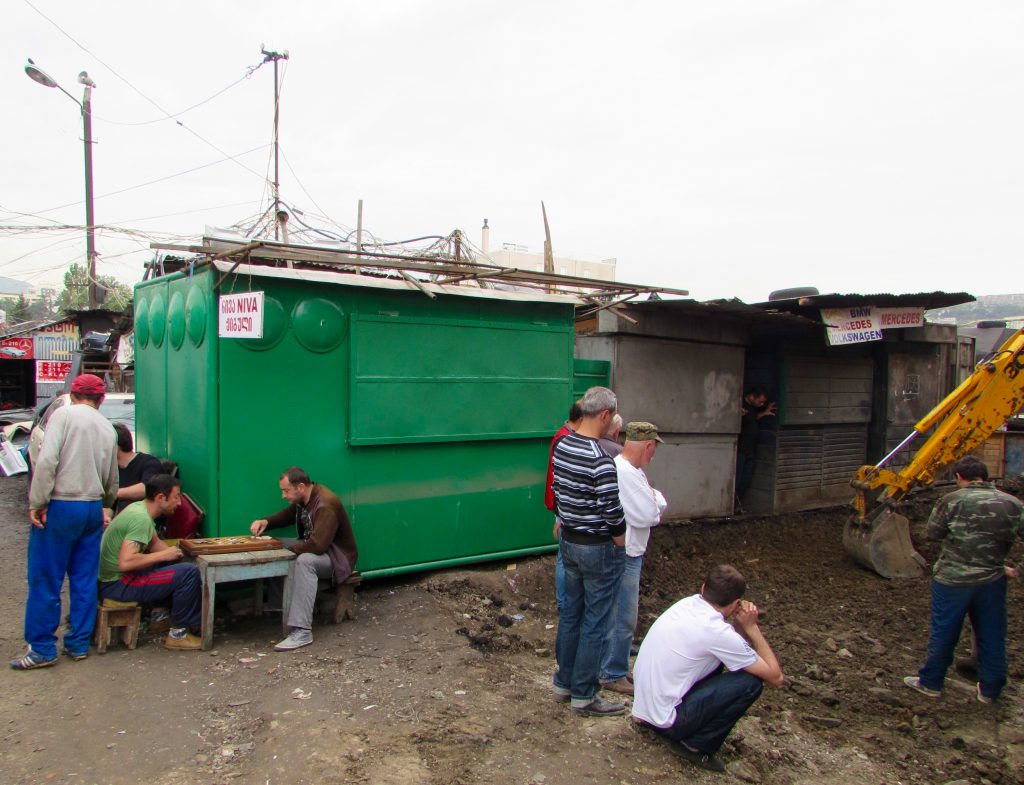
*****
Relying on Lefebvre’s Ideas in Doing Fieldwork – Empirical or Concrete Case Studies
Lukasz Stanek
“(W)hile Lefebvre’s theory cannot be understood without accounting for his philosophical readings, I argue in this book that neither can it be grasped without acknowledging what was largely forgotten in his work: a number of empirical studies he carried out and supervised within a range of French research institutions, as well as his intense exchanges with architects, urbanists, and planners. The focus on these studies and on Lefebvre’s engagement with French architectural culture is intended not to diminish the relevance of philosophy in his thinking but to argue that it cannot be understood from a single disciplinary perspective, including a philosophical reading.
This is why in this book I discuss the production of Lefebvre’s theory by juxtaposing, bringing together, and pulling apart his critical reflections on the general condition of modernity, his research on the processes of urbanization, and his project of spaces for a transforming society. These are three voices in Lefebvre’s writings: research, critique, and project.
The attention to this polyphony governed Lefebvre’s readings of Marx’s work, which opposed, more often than not, its dominant interpretations, whether the official doctrine of the Stalinist Soviet Union adopted by the French Communist Party (PCF) during the immediate postwar period or the structuralist Marxism of the 1960s.
At the same time Lefebvre’s research, critique, and project are embedded in specific French discussions in 1960s and 1970s philosophy, urban sociology, architecture, and urbanism while also reflecting an international ferment of ideas, including Anglo-American sociology and planning, German philosophy, Italian architectural theory, and dissident revisions of Marxism, both Western and Central European. These debates reverberate in the empirical studies Lefebvre was involved in, or rather in his “concrete” research.
It is from within these engagements that his understanding of space was developed by means of three main theoretical decisions: the shift of the research focus from space to processes of its production; the embrace of the multiplicity of social practices that produce space and make it socially productive; and the focus on the contradictory, conflictual, and, ultimately, political character of the processes of production of space.
While dwelling on a range of empirical and historical studies, this understanding of space was formulated in opposition to much of French sociology of the 1950s and early 1960s and its quantitative and statistical methods. Rather, Lefebvre aimed at a qualitative approach with particular attention to the irreducible and singular lived experience: an approach that not only posed the question of generalization as a major theoretical challenge for his theory but also prevented him from formulating a fully operative method of sociological research.”
Lukasz Stanek, Henri Lefebvre On Space, 2011:viii-ix
Henri Lefebvre on Space: Architecture, Urban Research, and the Production of Theory (Introduction)
Henri Lefebvre On Space – Online Source
Elisa Bertuzzo – Multiple Methods to Study Production of Space in a City
Fragmented Dhakar: Analyzing Every Day Life with Henri Lefebvre’s Theory of Production of Space
Bertuzzo has applied Lefebvre’s theory of production of space in analyzing everyday life at the scale of Khakar, Bangladesh.
*****
Examples of Research Methods and Techniques for Future Eliava Studies
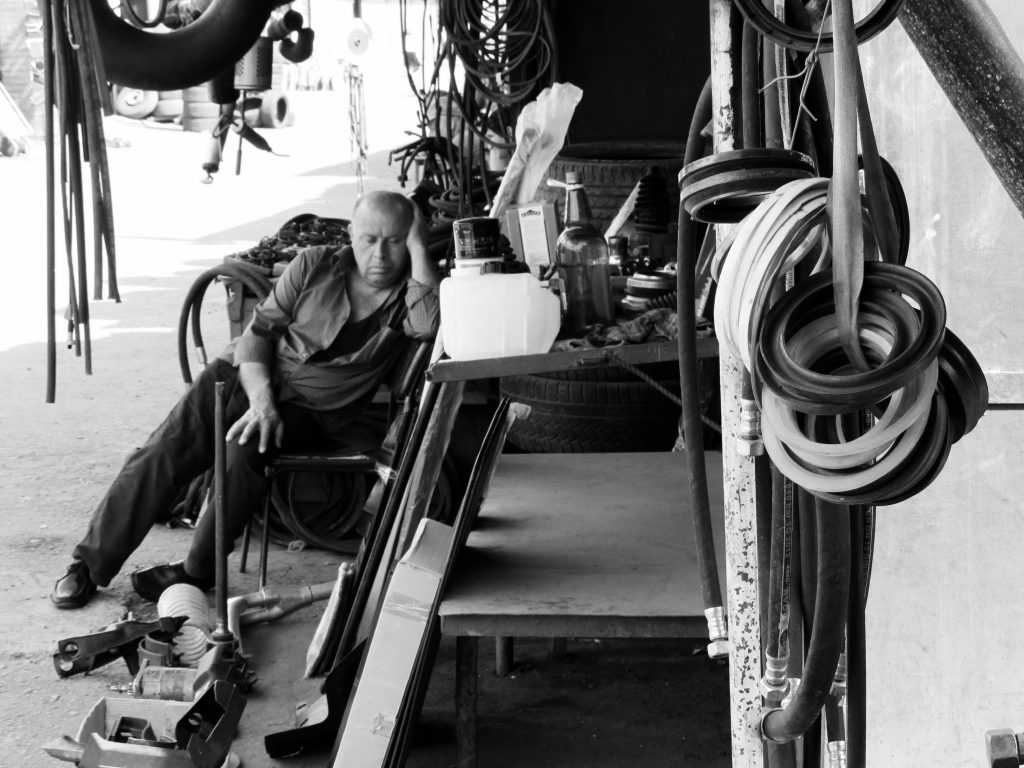
Rhythmanalysis – Embodied Time/Space
“In Lefebvre’s analysis of the difference between linear and cyclical time, and the contrast between clock time and lived time, there is a difference between his understanding and that of Marxism. His Rhythmanalysis: An Introduction’s understanding of history is not the linear, teleological progression of Hegel or Marx, but closer to a Nietzschean sense of change and cycles. It is also notable that Lefebvre’s understanding of time as non-calculable, as resistant to abstracting generalisation and in need of being understood as ‘lived’, is the same as his more well known critique of prevalent ways of comprehending space. Just as Cartesian geometry is a reductive way of understanding space, so too is the measure of time, the clock, a reductive comprehension.”
Stuart Elden, Rhythmanalysis: An Introduction
Dawn Lyon – Rhythmanalysis and Time-lapse Photography –
Hannah Quinlivan – Rhythmanalysis and Spatial Drawings
“I suggest that spatial drawing has certain advantages for rhythm analysis. As a process for observation, spatial drawing takes time. It cannot be rushed. The physical making process is labour intensive, drawn out over minutes, hours, days and weeks. The process of drawing is like the excavations of an archeologist: at first, the surface rhythms are evident, obvious and superficial. It is only after a period of excavation that you start to uncover the more subtle, slow and fundamental rhythms of space. Spatial drawing is also a bodily process. The rhythm analyst is reliant on her own body, moving through the space, developing the drawing. As she works through the space and moves through the site, she becomes attuned to it bodily and spatially. Her body is not so much a metronome as a pendulum, moving back and forth with a gait that is at first uncertain and irregular but soon becomes harmonized and rhythmic. Each cycle back and forth gains more information, more momentum. Through making, she must become attuned to the site’s materiality and spatiality, a knowledge that comes up through her feet and is lodged in the muscles, more than just a knowledge that comes in through the eyes and ears to the brain. The physical soreness of muscles attest to the rhythms of work, rhythms of work that are ultimately dictated by, and a reflection of the site itself. This method thus takes seriously Lefebvre’s suggestion that “the spatialisation of time” is a precondition for its analysis, and that this operation may “stimulate knowledge at the same time as practice.” Spatial drawing, as a method of rhythm analysis, is a means for developing an understanding, not a record of an already constructed result.”
“Abstract: This article builds on the earlier notion of a visual ethnography (PINK, 2007a) to suggest the idea of a visual ethnography in/of movement. Recent anthropological discussions have drawn attention to the importance of studying other people’s “routes and mobilities” (LEE & INGOLD, 2006). Following this work I examine what visual ethnographers might learn from an analysis of how routes and mobilities are represented in local visual culture.”
“Abstract: This article deals with Dhaka dwellers’ “image of the city”, exemplifying how mental maps can be used to study people’s perceptions and representations of space. In a survey perpetrated in 2006-2007, I asked 100 respondents to draw “their Dhaka”( the resulting mental maps displayed places they regarded as important, like monuments and landmarks, but also their quotidian environment and movements. The analysis of four mental maps brings to light differing conceptions of territoriality and symbolically significant places in Dhaka, showing highly fragmented perceptions of the city. While it is commonly assumed that megacity inhabitants must “pass through” space passively, Dhaka’s spaces appear to be continuously “filled with identity”, and in this way actively appreciated, judged, and appropriated. Urban dwellers are not mere “repeaters” of routines and practices established by tradition, but active inventors of new “tactics” with which they cope with the quickly changing physical and social environment. By introducing the term “enriched space” – space rich in different functions and representations-, I draw attention on how everyday uses as well as religiously and symbolically loaded interpretations of space elevate latter to its n/power. Demonstrating the tight interrelationship between everyday life and cultural and social processes, and drawing on Henri Lefebvre’s theory of production of space, this paper pleads for a bigger consideration of everyday life in urban studies and planning.”
*****
Art and the Right to the City
Andy Merrifield – Artists and Urbanization
““Residues” are remainders who live out the periphery, people who feel the periphery inside them, who identify with the periphery, even if sometimes they’re located in the core. Residues exist in the world of work: precarious and downsized workers, informal and gig economy workers, workers without regularity, without any real stake in the future of work. Residues are refugees rejected and rebuked, profiled and patrolled no matter where they wander, people forced off the land, thrown out of their housing (by impersonal property markets and violent eviction), whose homes have been repossessed, whose living space teeters on the geographical and economic edge.
Plenty of artists fill the ranks of residues and now know how capitalism’s cutting edge is frequently a bleeding edge for art. True, high art can be exploited as super profitable cultural capital; but progressive art, Left art, leaves many artists—painters, installation artists, performance artists, writers, poets, etc.—out on the margins, struggling to earn living inside the meanness and aggressive bluster of global capitalism.
Artists have special needs for space, not only for living space but for spaces to create, display and perform their art in, spaces to practice their art in, and that’s why artists have historically been very vocal in demanding their “right to the city,” since they feel the pinch in urban areas alongside other modest means people. And that’s why artists often find affinity with these other people. Artists have been forced to think about their place in the world, in the city, about their links for other communities, about their relationship to the class system. Urban areas offer artists access to markets and to audiences, to fellow-traveling artists, to like-minded creative people. Yet urban areas with soaring rents and property values also put intense pressures on artists that makes them sometimes wonder whether they’ll ever have the means to create at all.”
Michel de Certeau, Space, and Art
“For de Certeau urban space is neither fixed nor stable, and no proper official version of the city exists. How then, can we bridge these discrepancies between how de Certeau may be read and his original intentions with what he wrote? It is my argument that the key to answer this question is to look at de Certeau’s spatial theories not as an attempt to elucidate the true political nature of space – his spatial theories should rather be seen as a mode of political thinking. As such, space in de Certeau, can be seen as a metaphor that functions as an expansive imaginative tool for understanding and ordering our world. In this sense, metaphors have got little to do with objective reality (if this exists), but nevertheless play a central role in constructing a social and political reality and enabling us to have a reality. The «space-talk» of de Certeau should hence not be seen as providing us with answers to what is the «true» or correct meaning of or way to deal with urban space, but rather it should be seen as a way of questioning space and opening up for seeing connections or disconnections that cannot always be deduced rationally from the givens. Thus, de Certeau is not equating space with politics, but rather showing what can be gained from thinking spatially. In this context then, the binary oppositions that de Certeau introduces could then be seen as pointing to permanent possibilities of re-configurations of any given order, rather than constituting fixed categories determining a certain function or use of space. When applying this approach then to site-specific and critically engaged art practices, these should not be construed simply as a reaction to or a means to fix a ready-made urban space, but should be seen as integral to creating, analysing and understanding space.”
Cecilie Sachs Olsen, Spatial Thinking and Artistic Practice – Re-Visiting Michel de Certeau